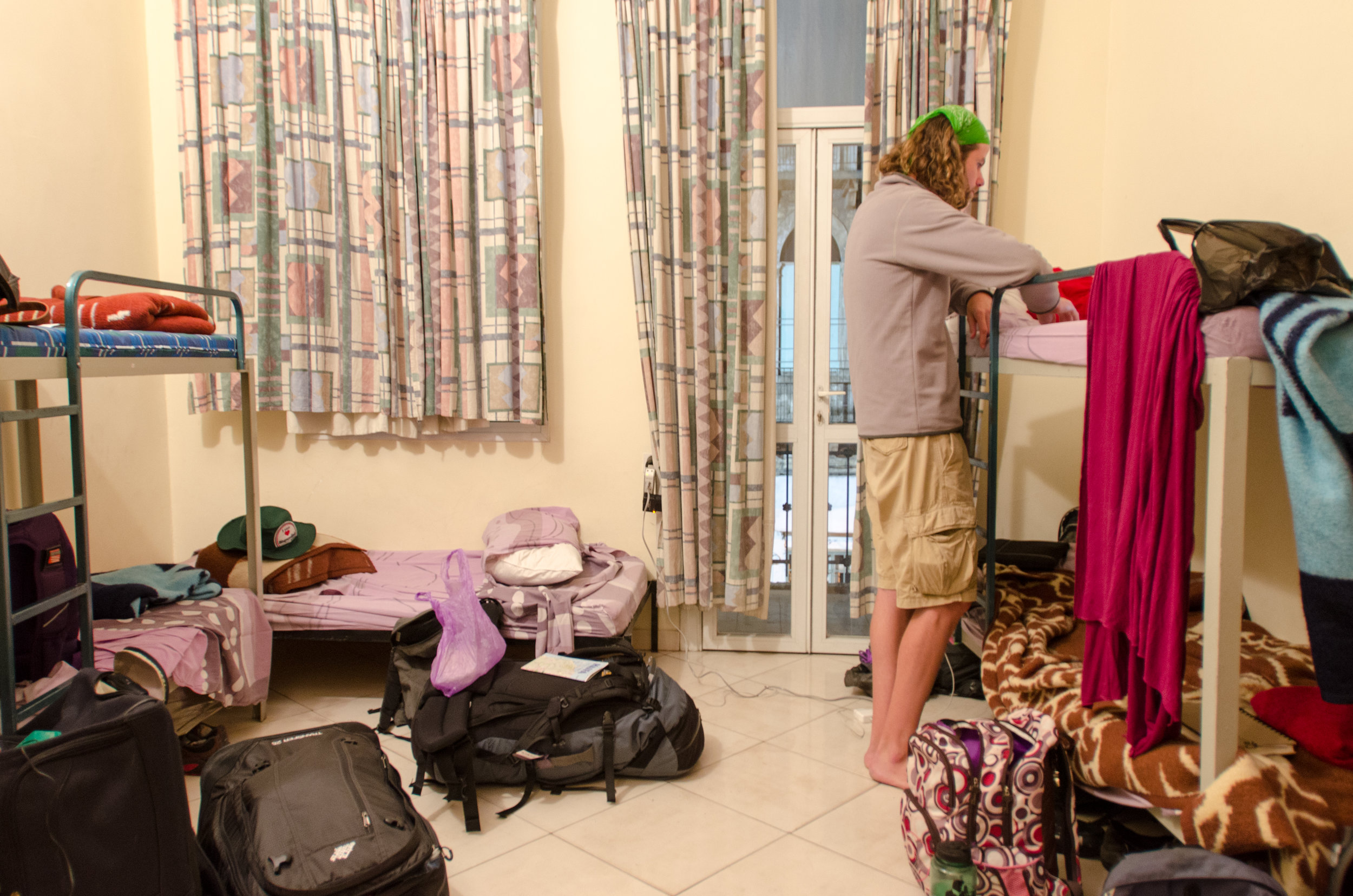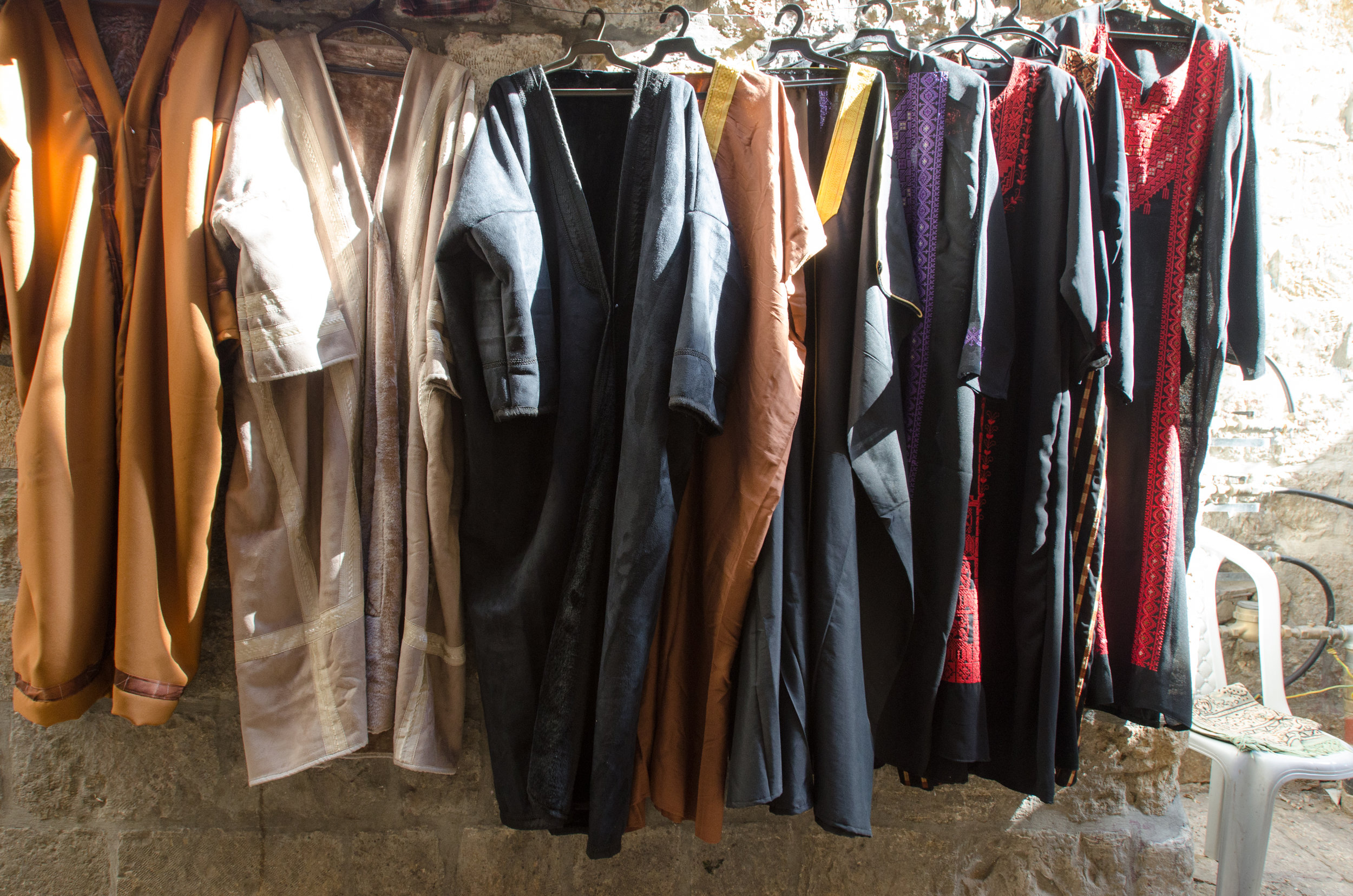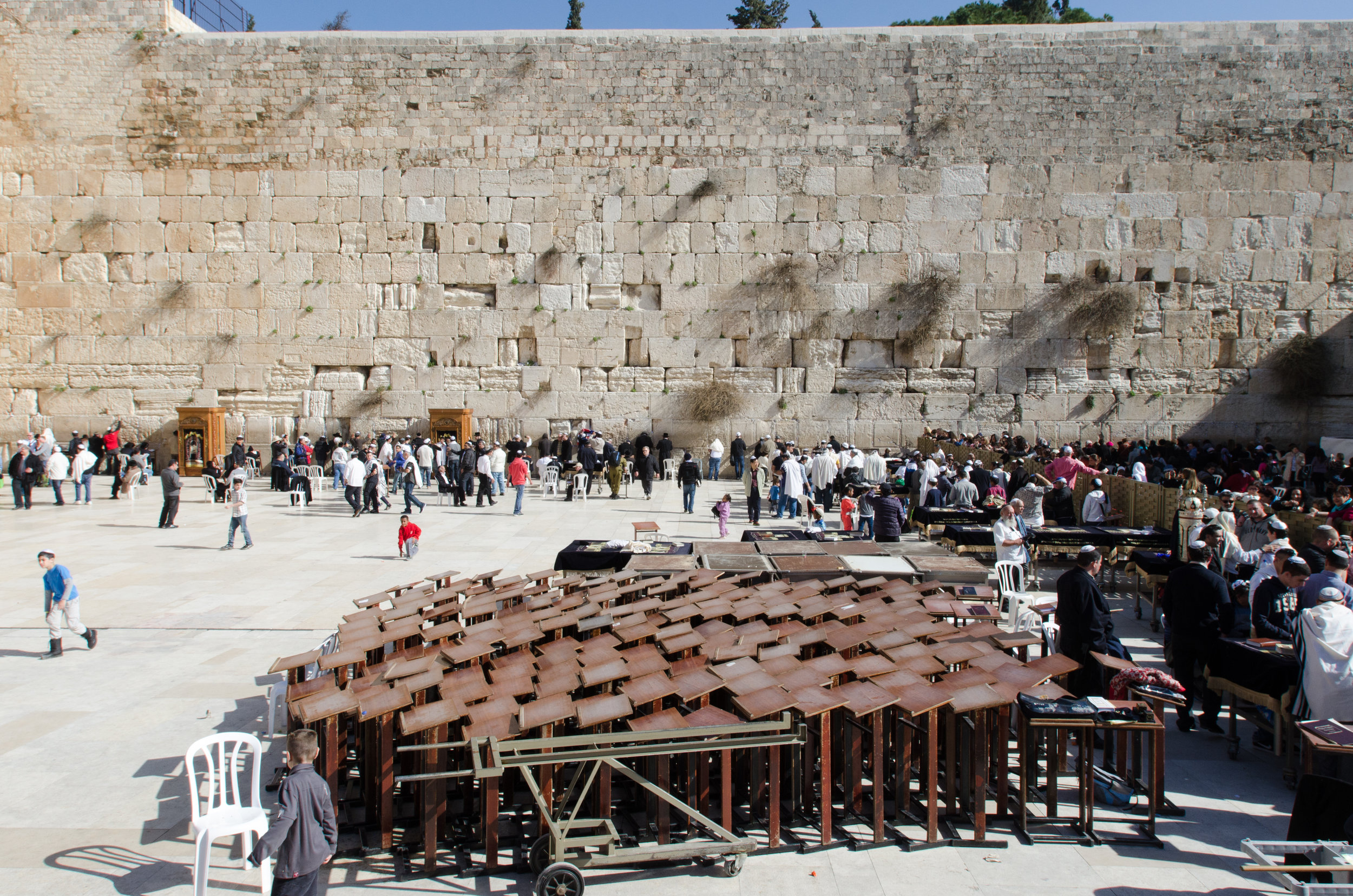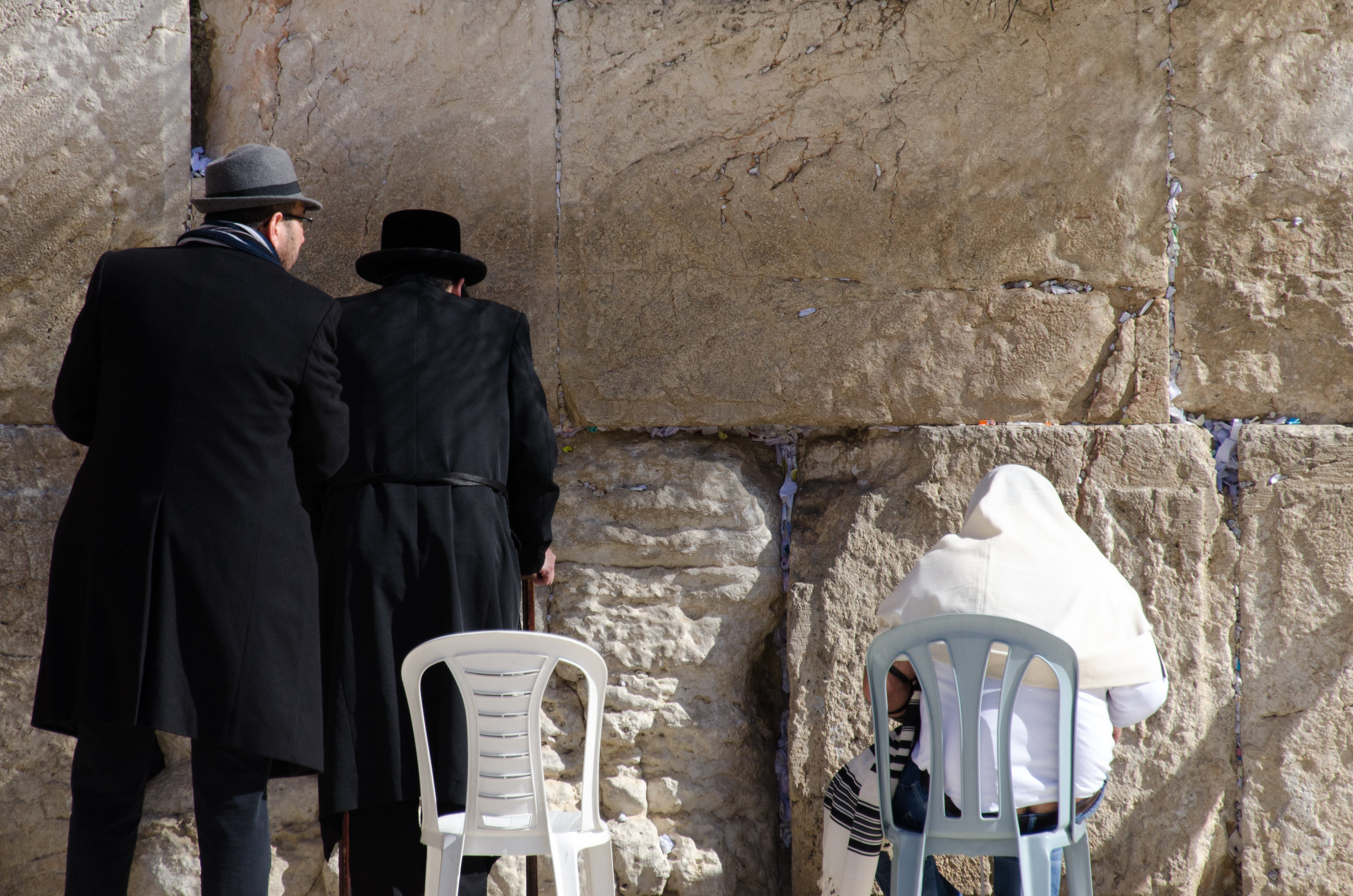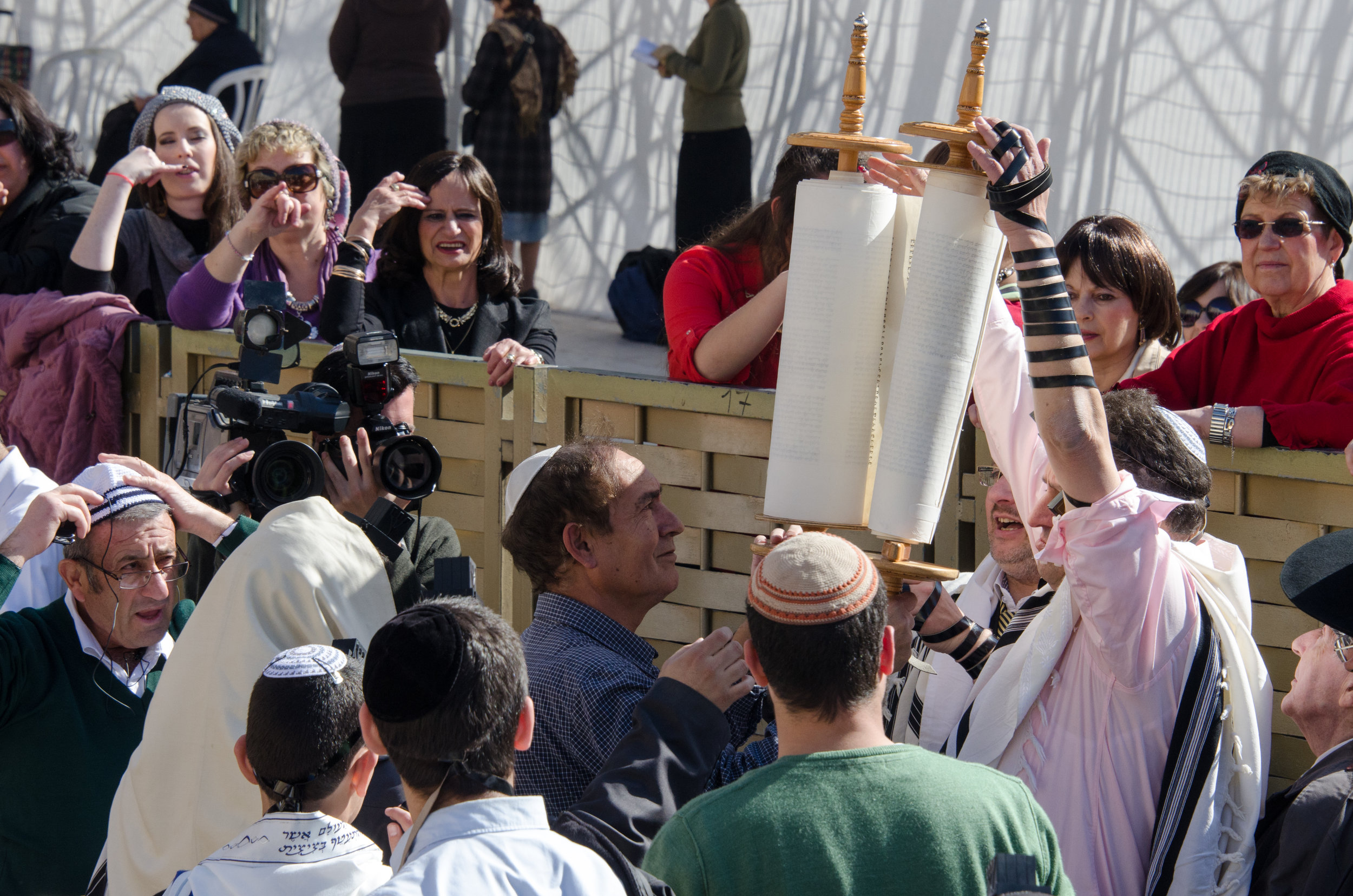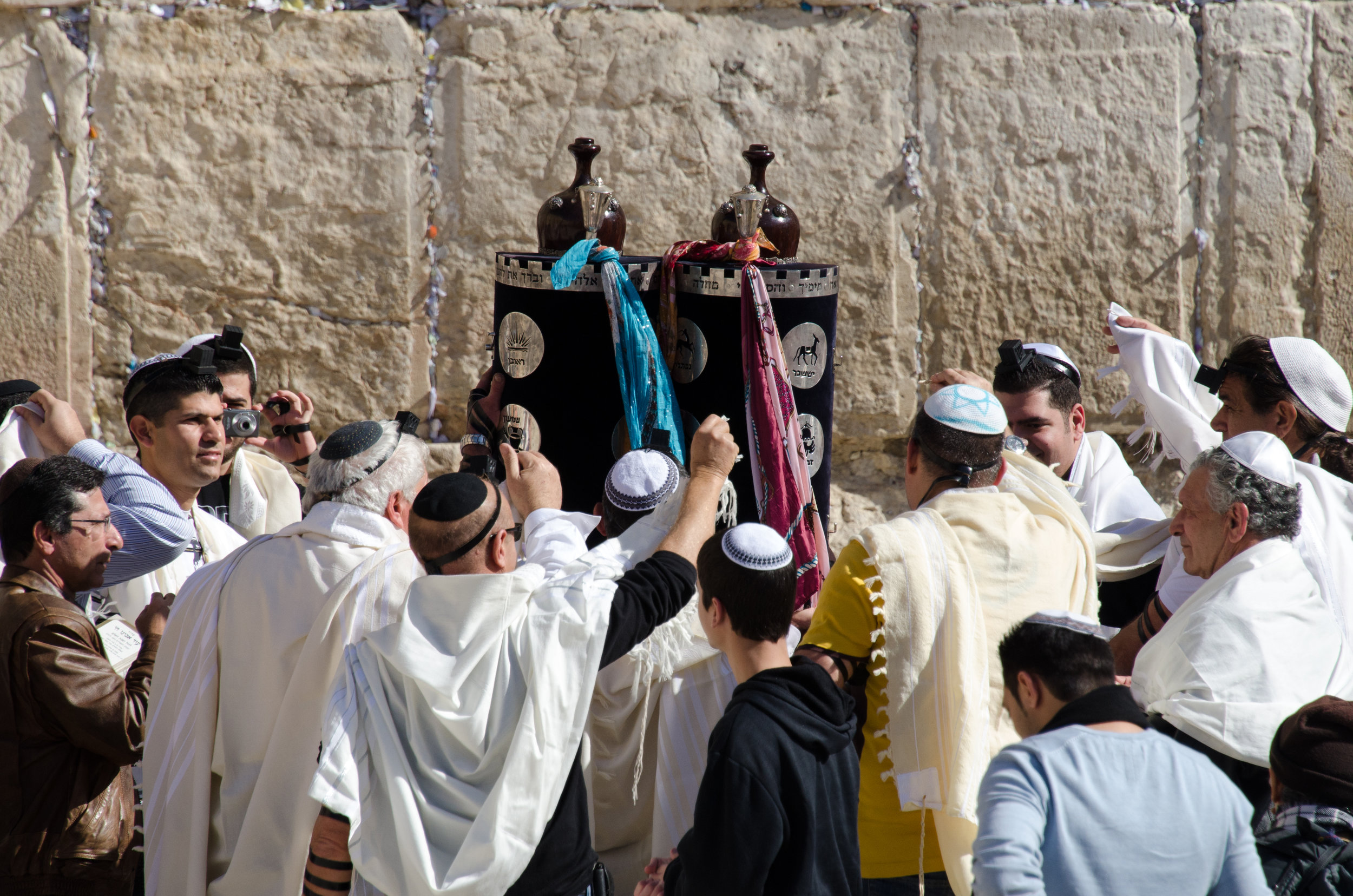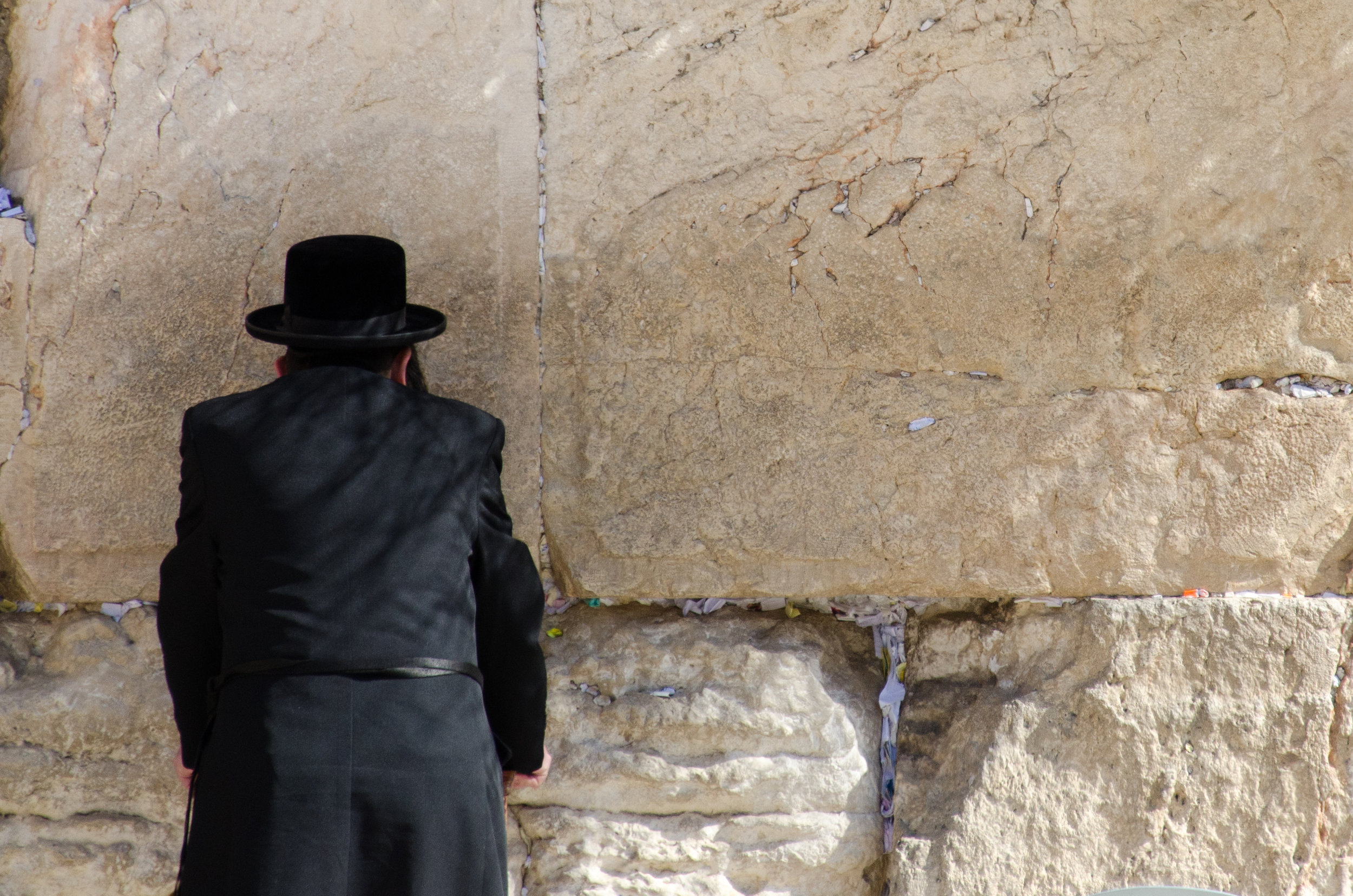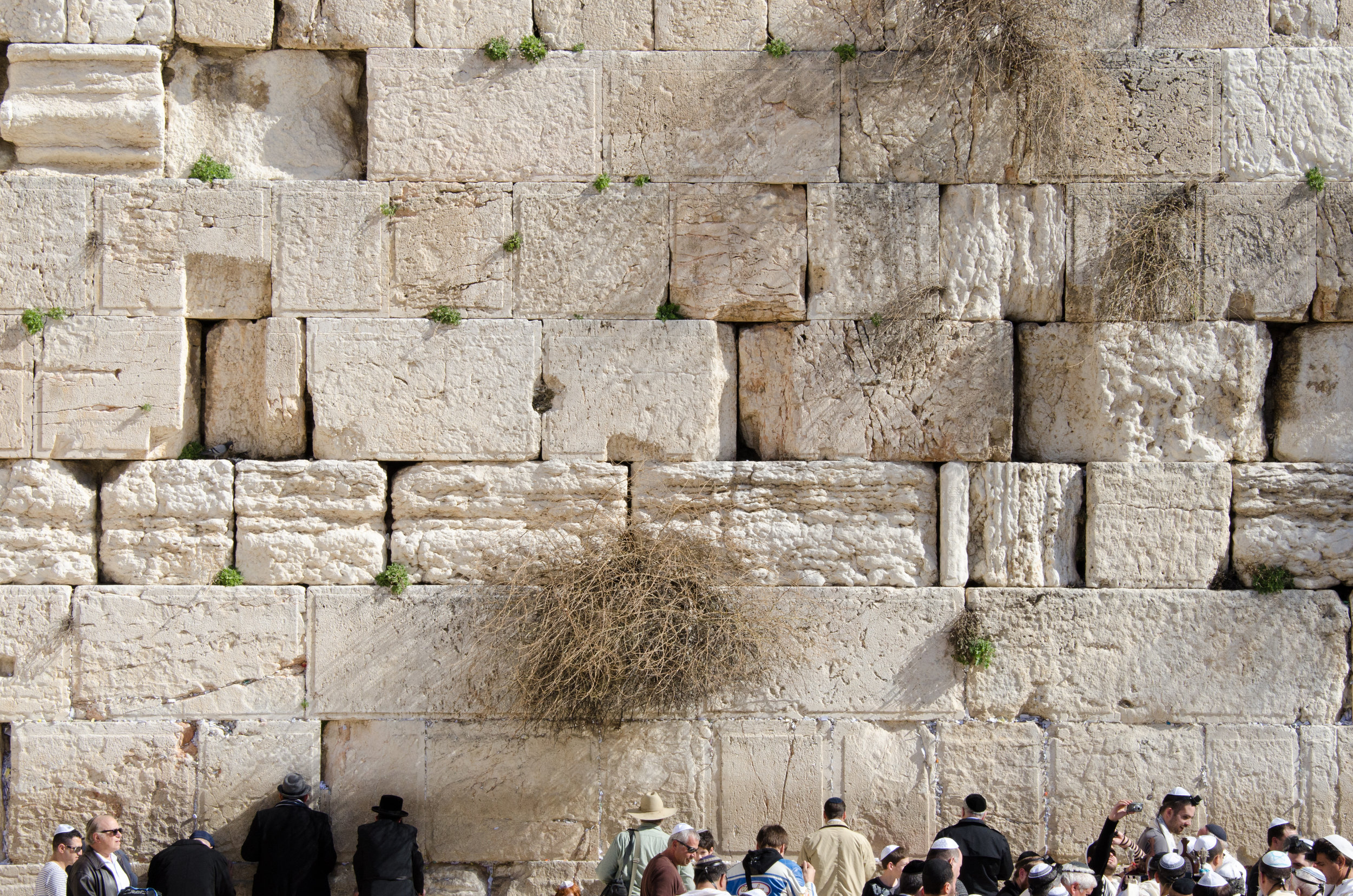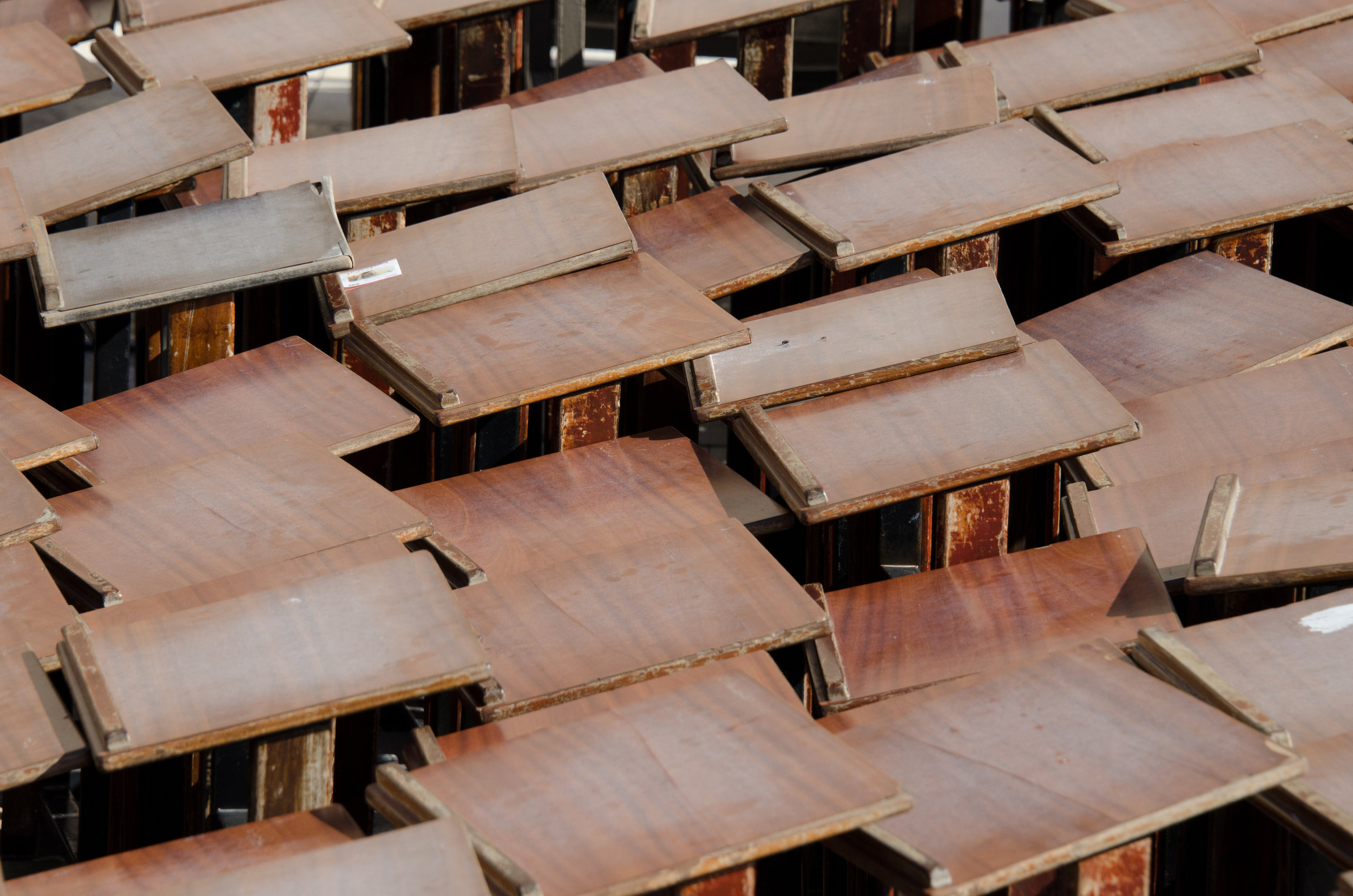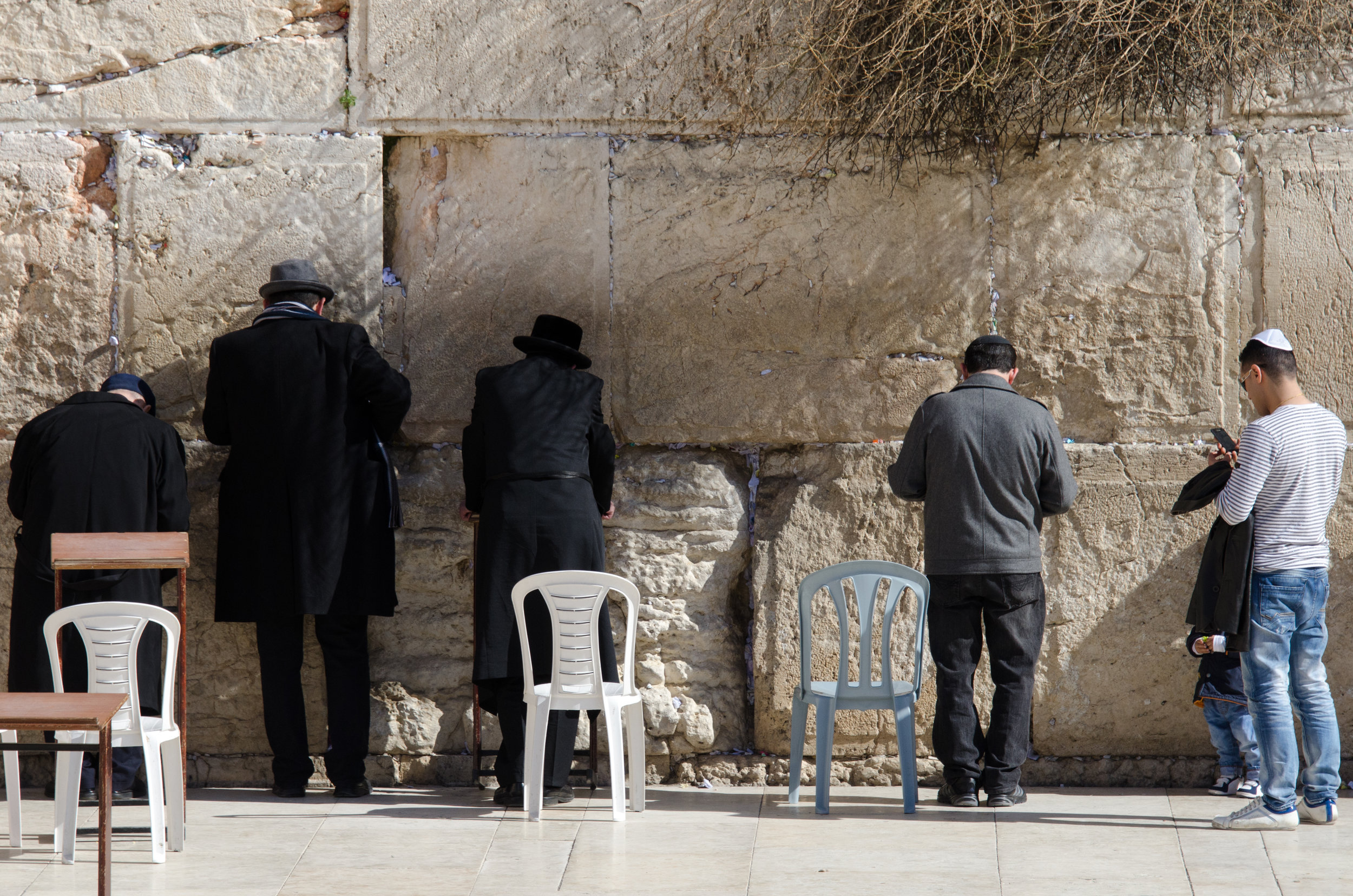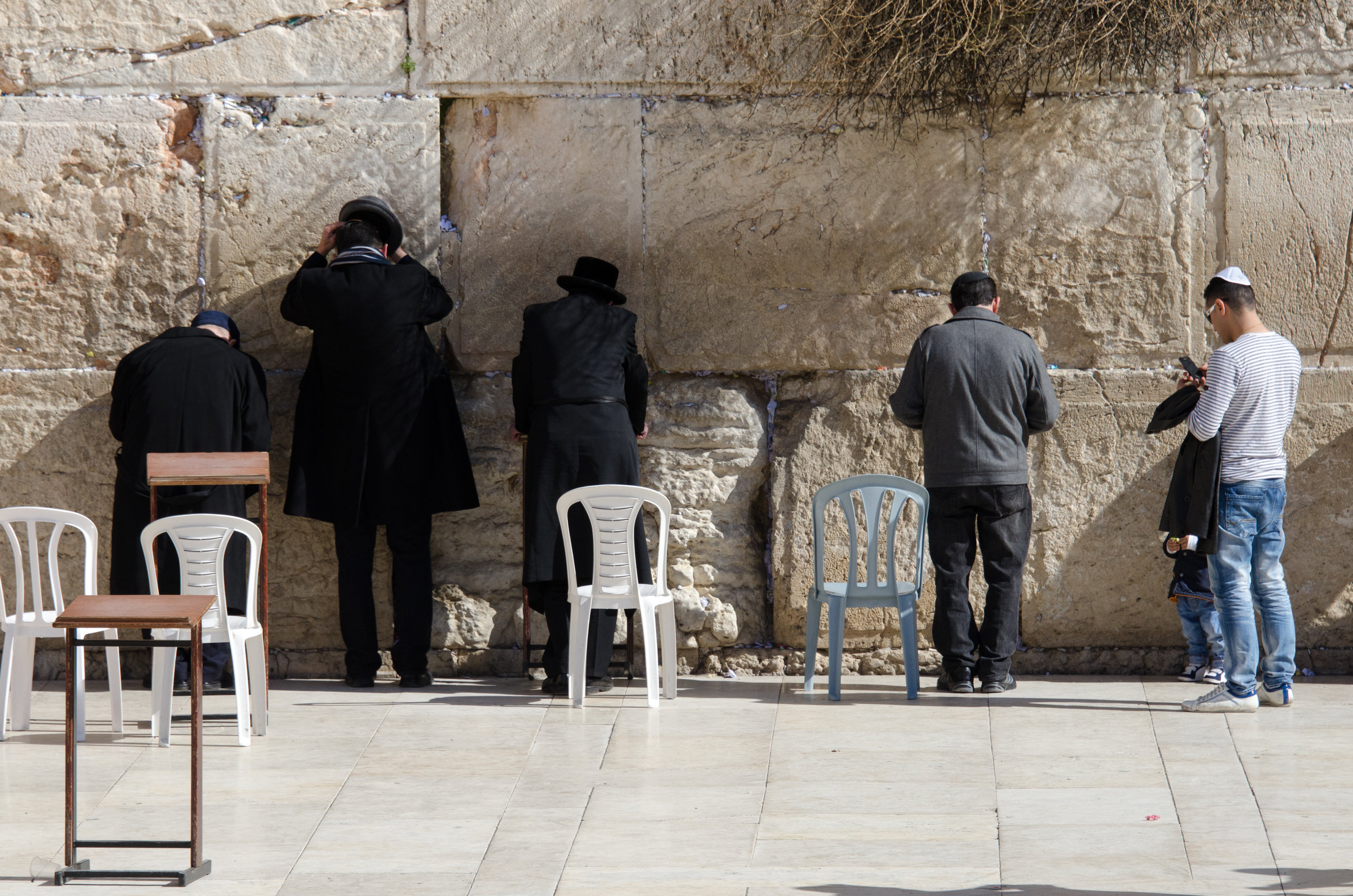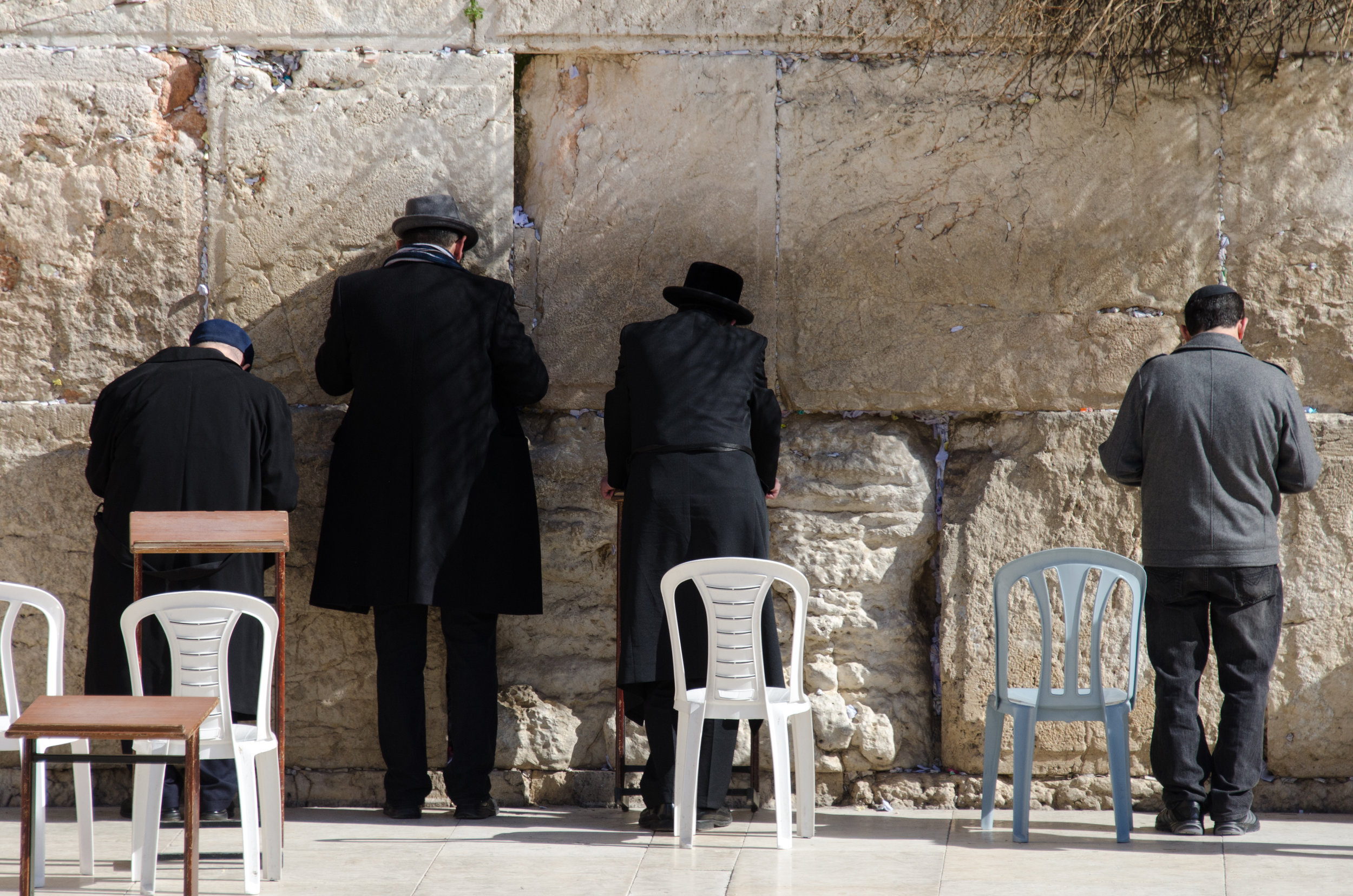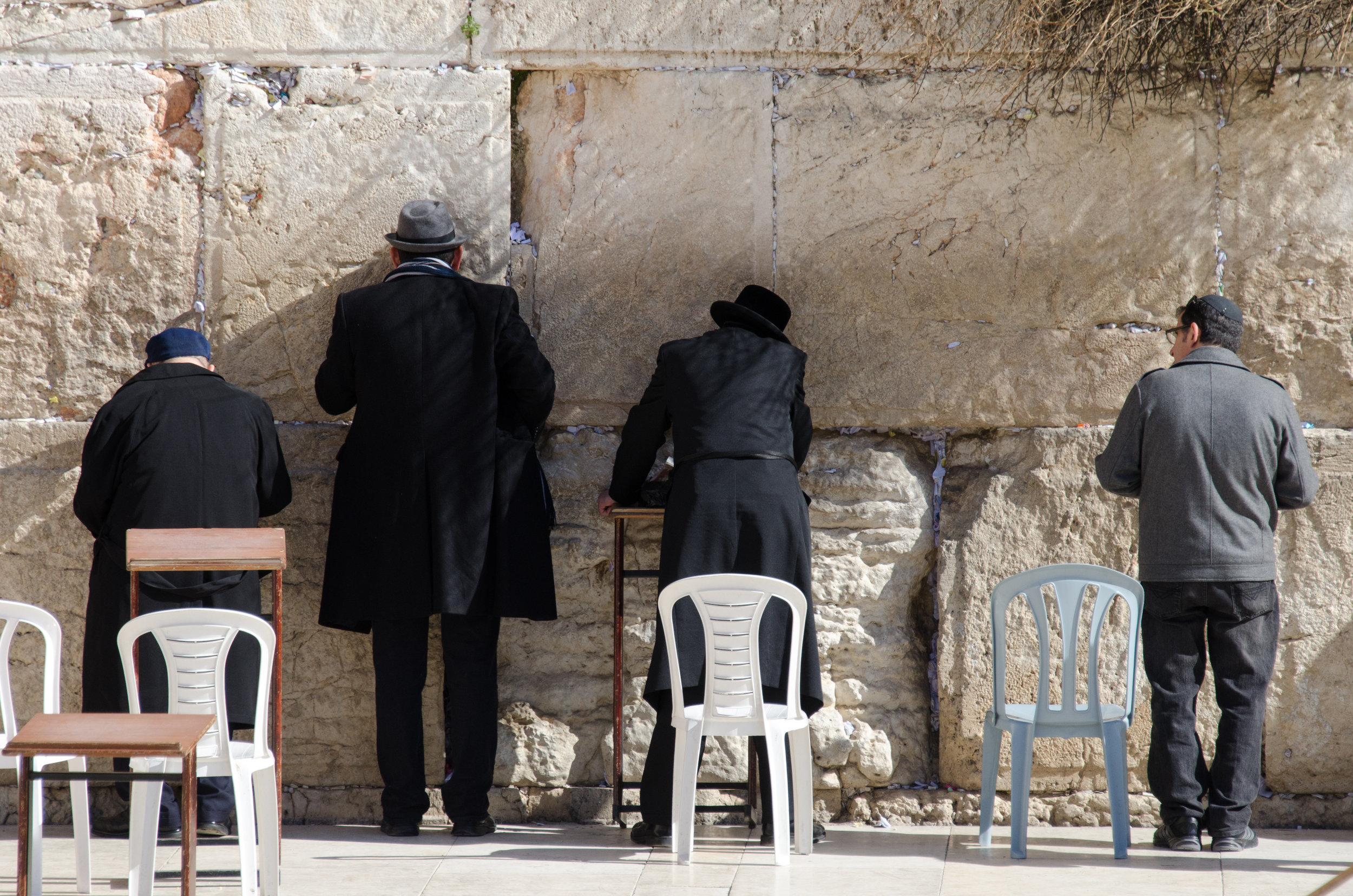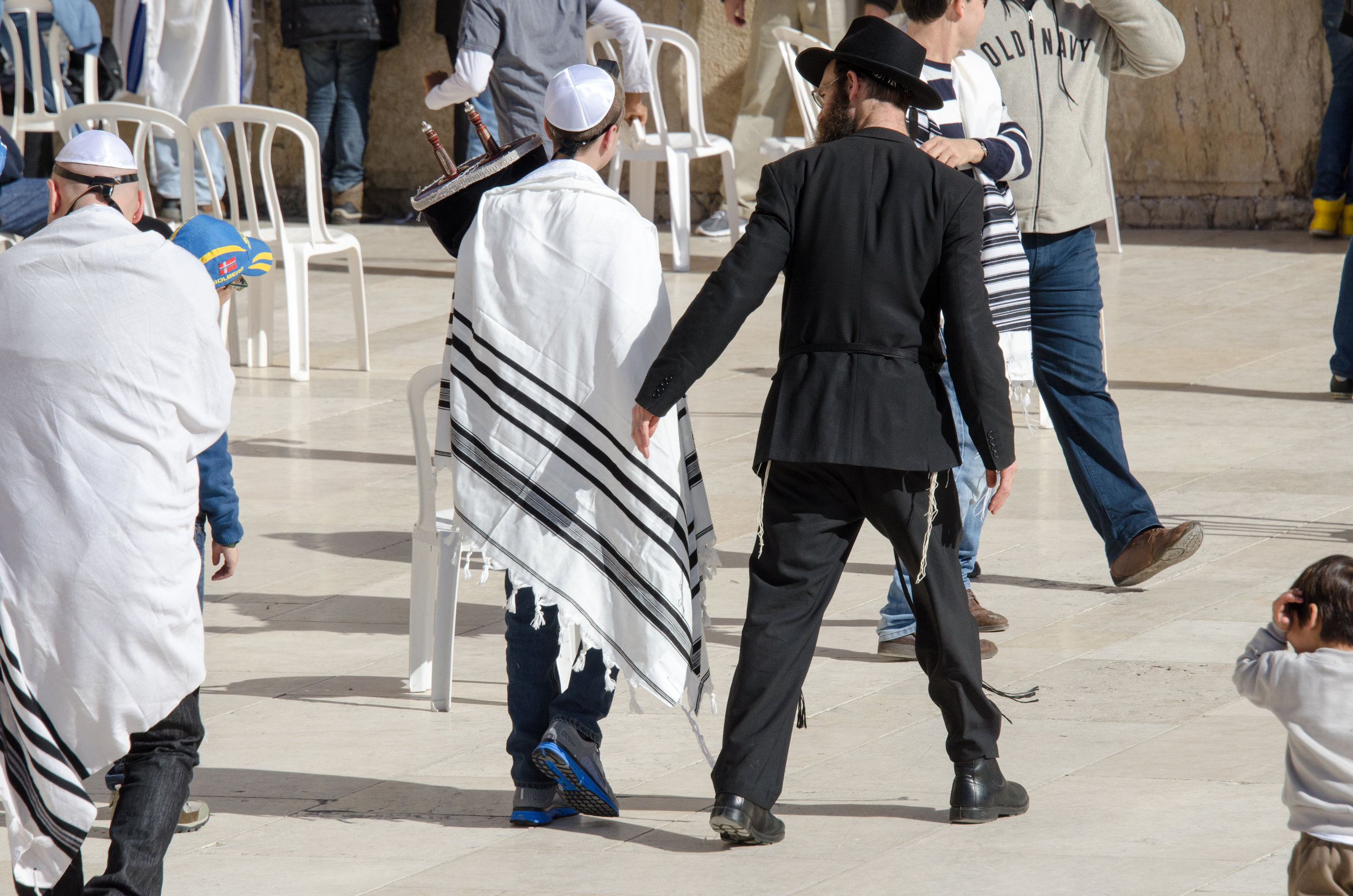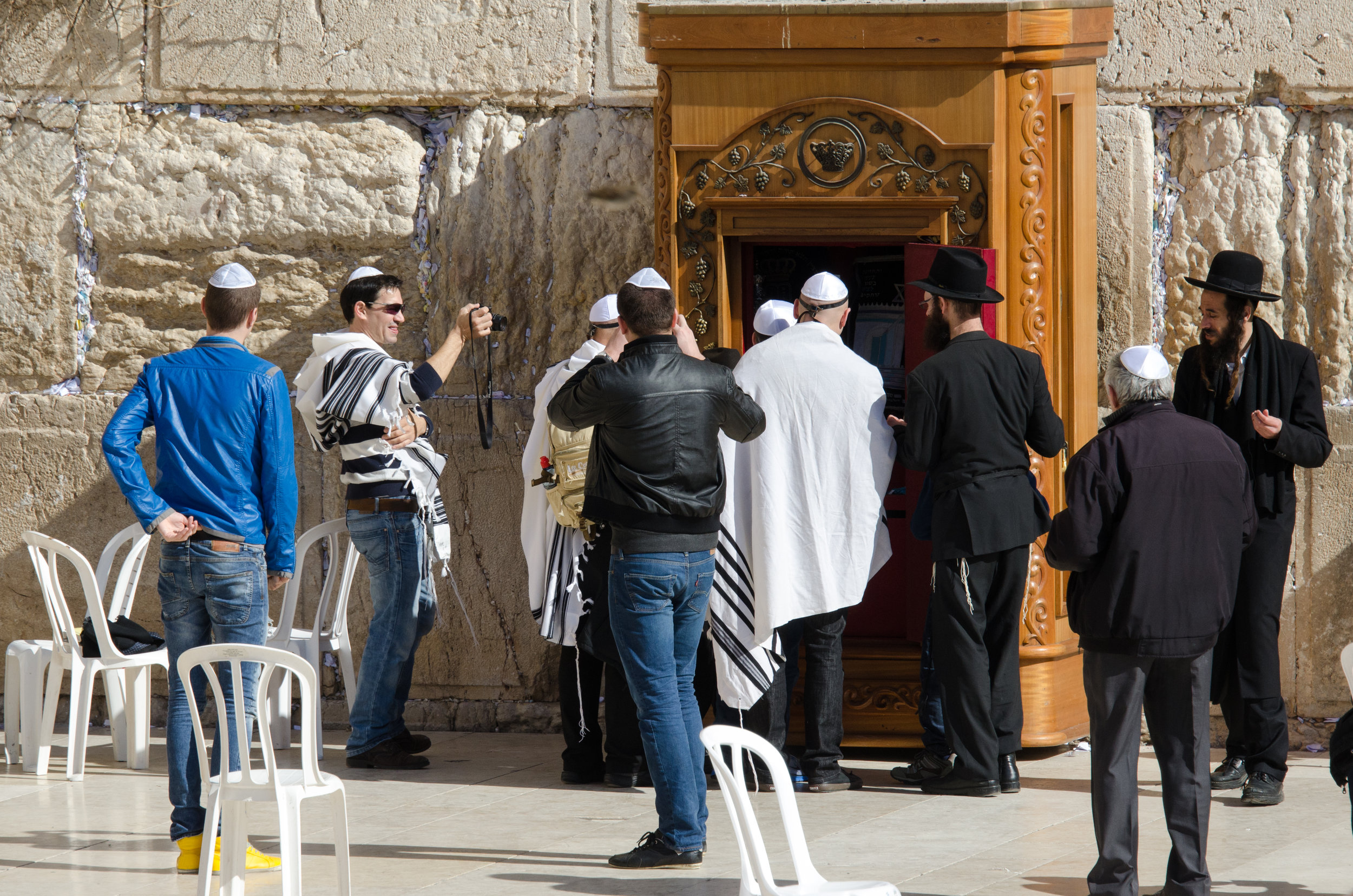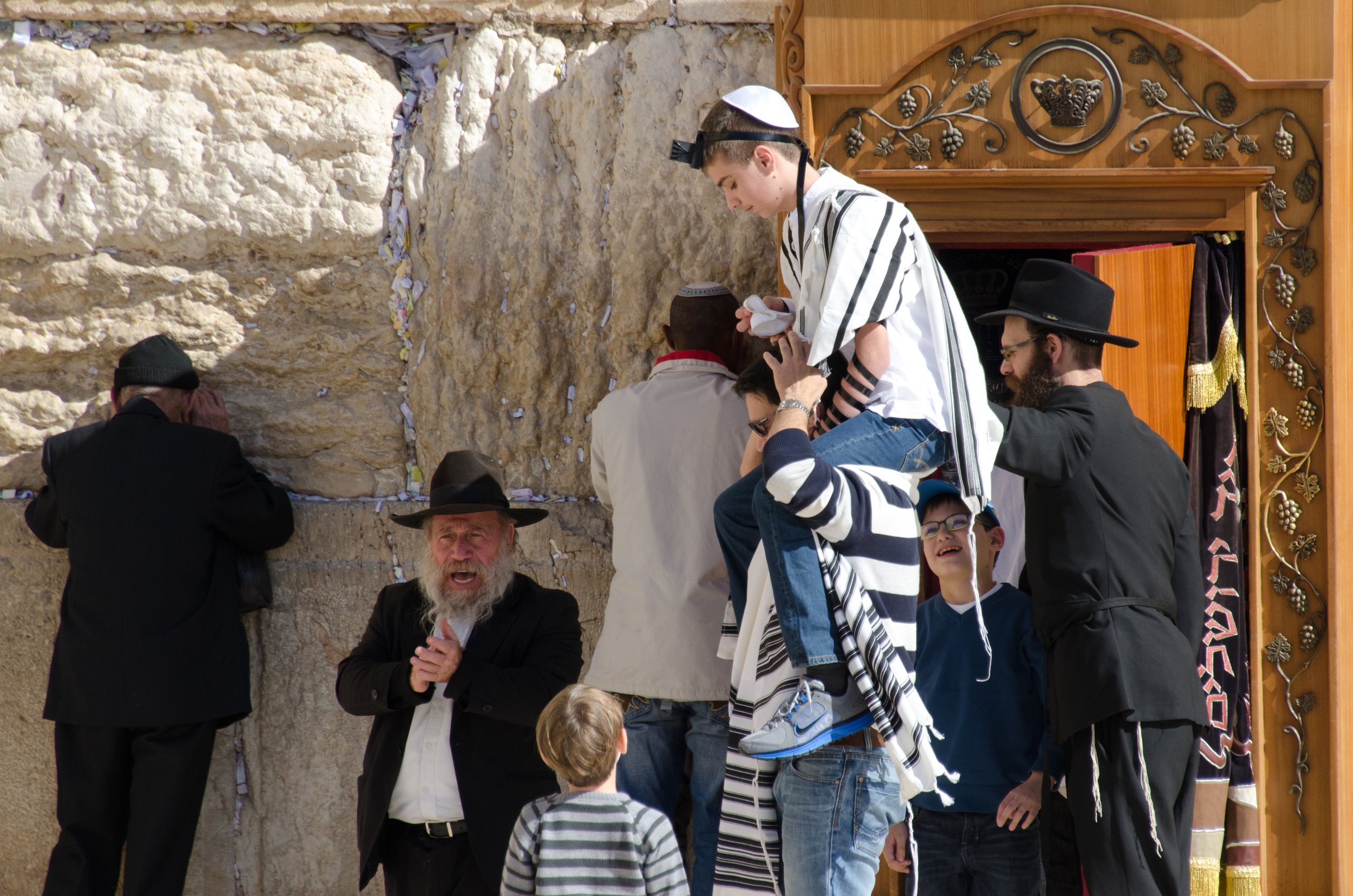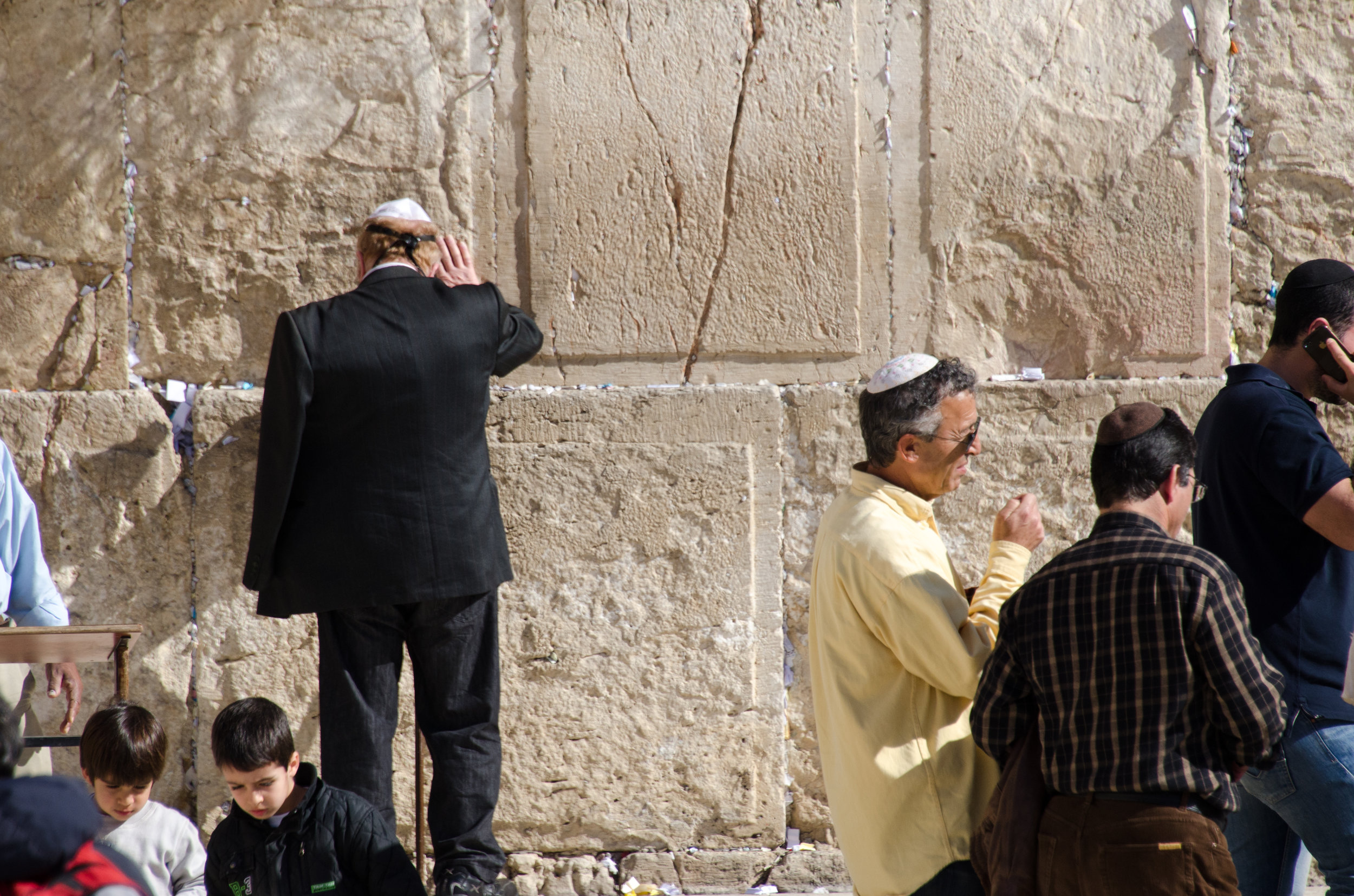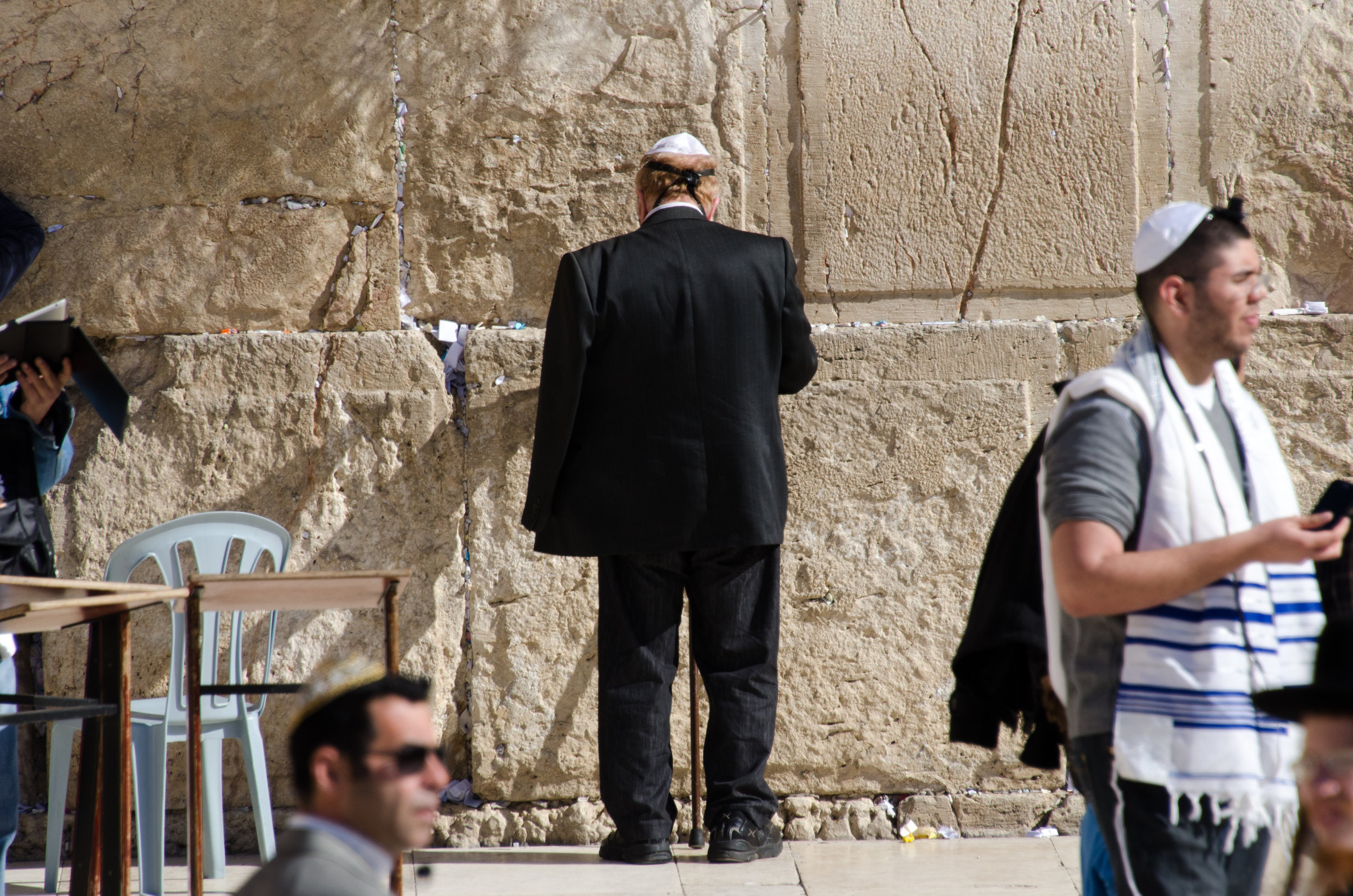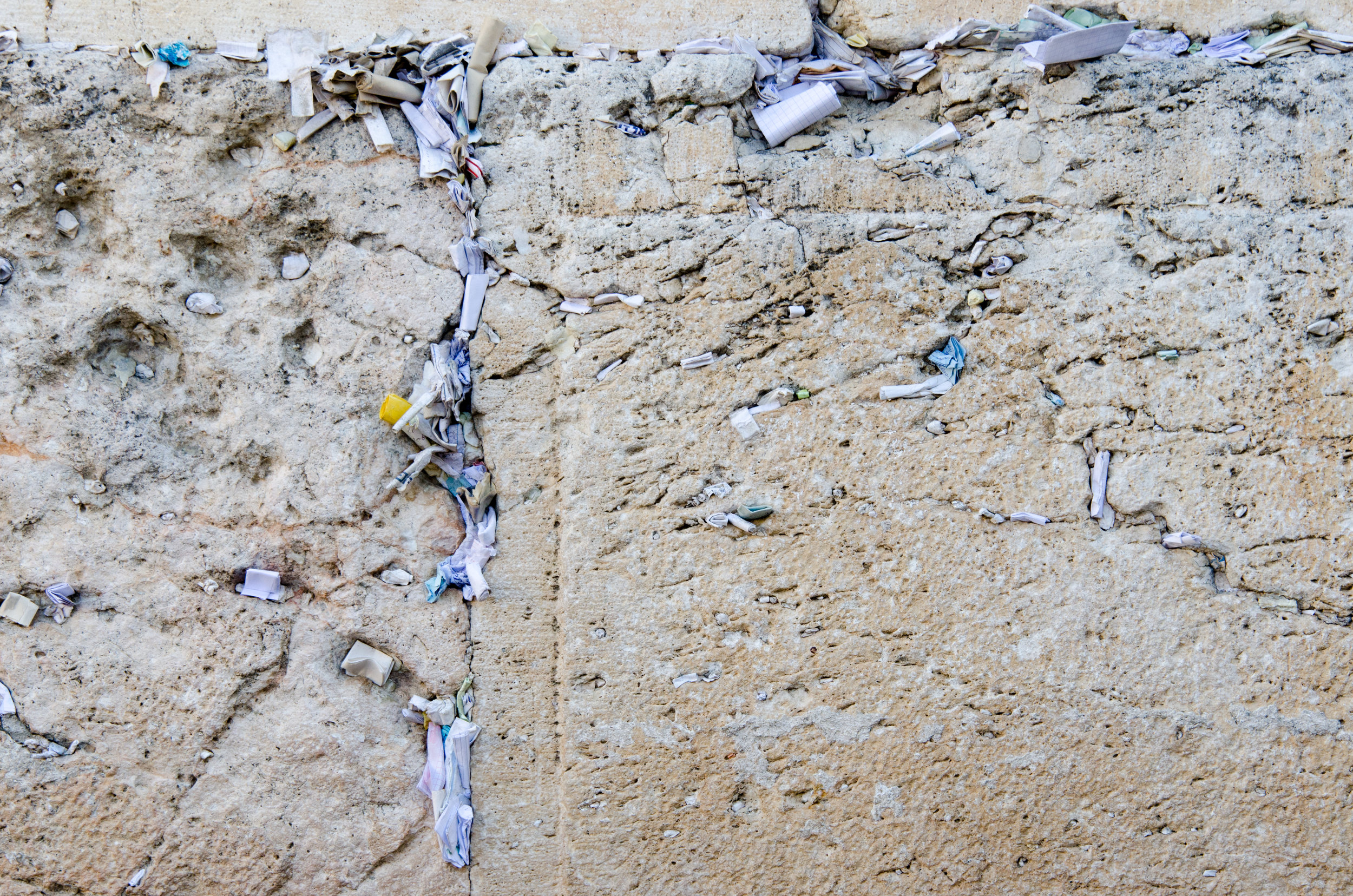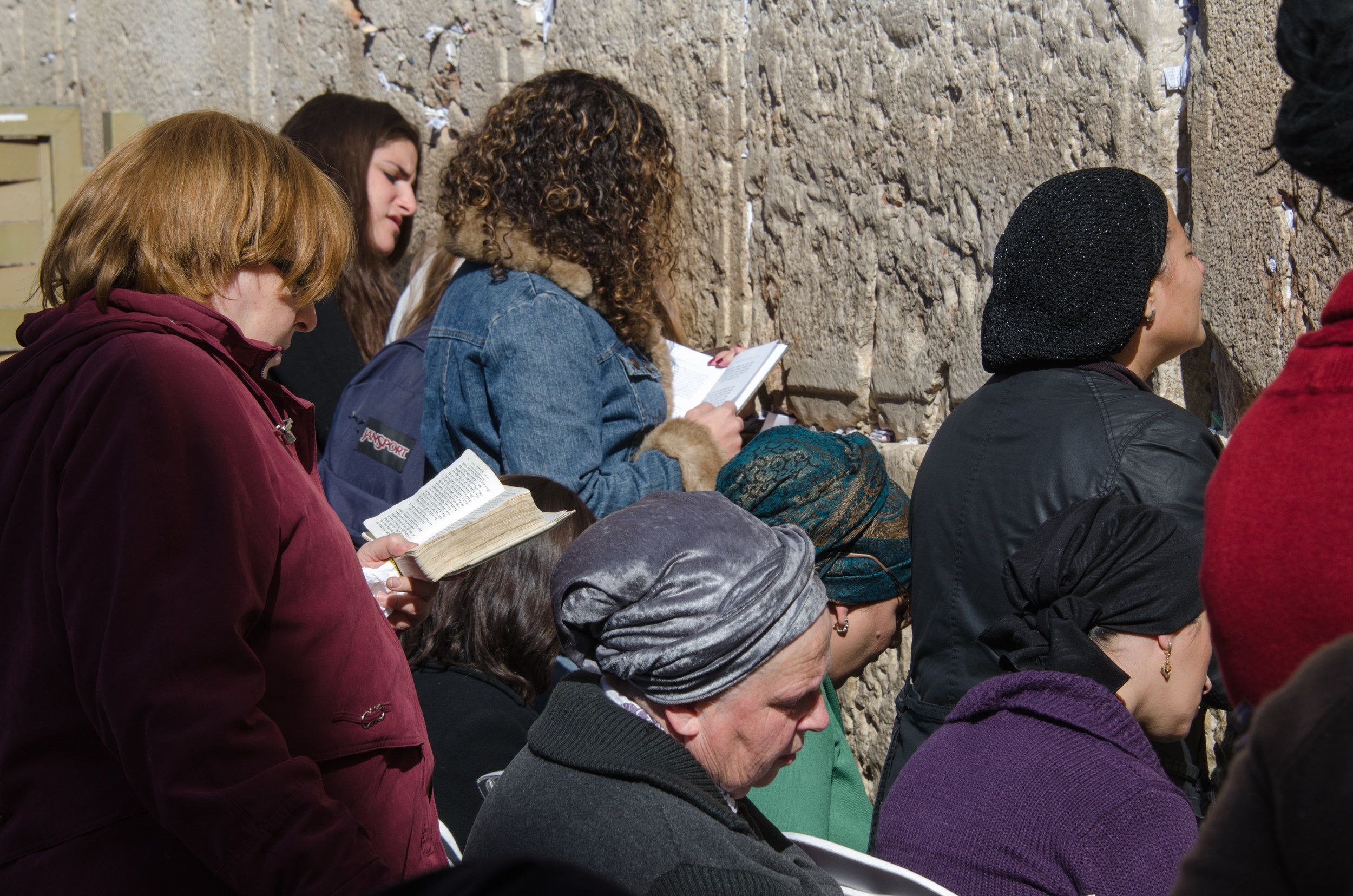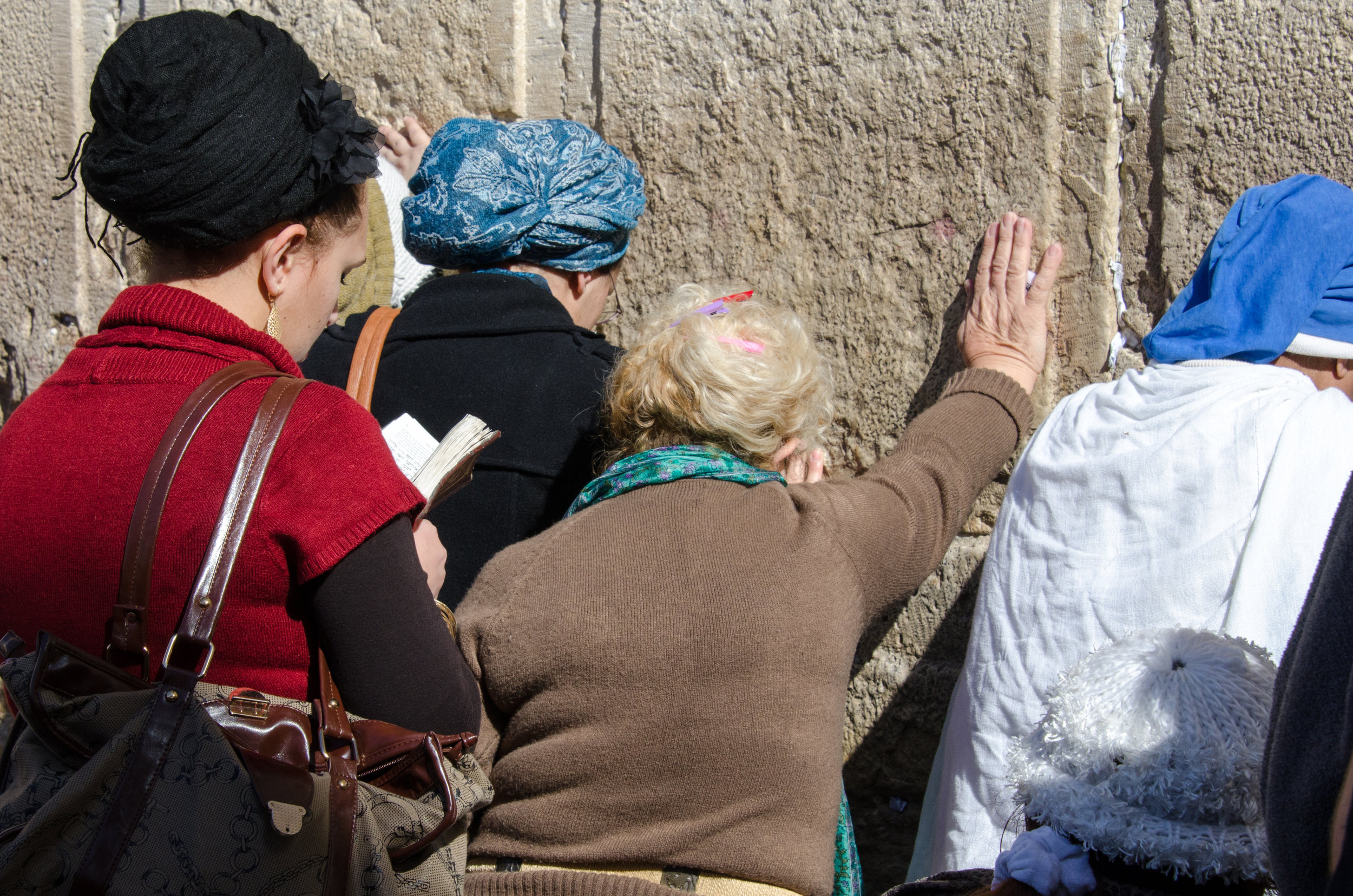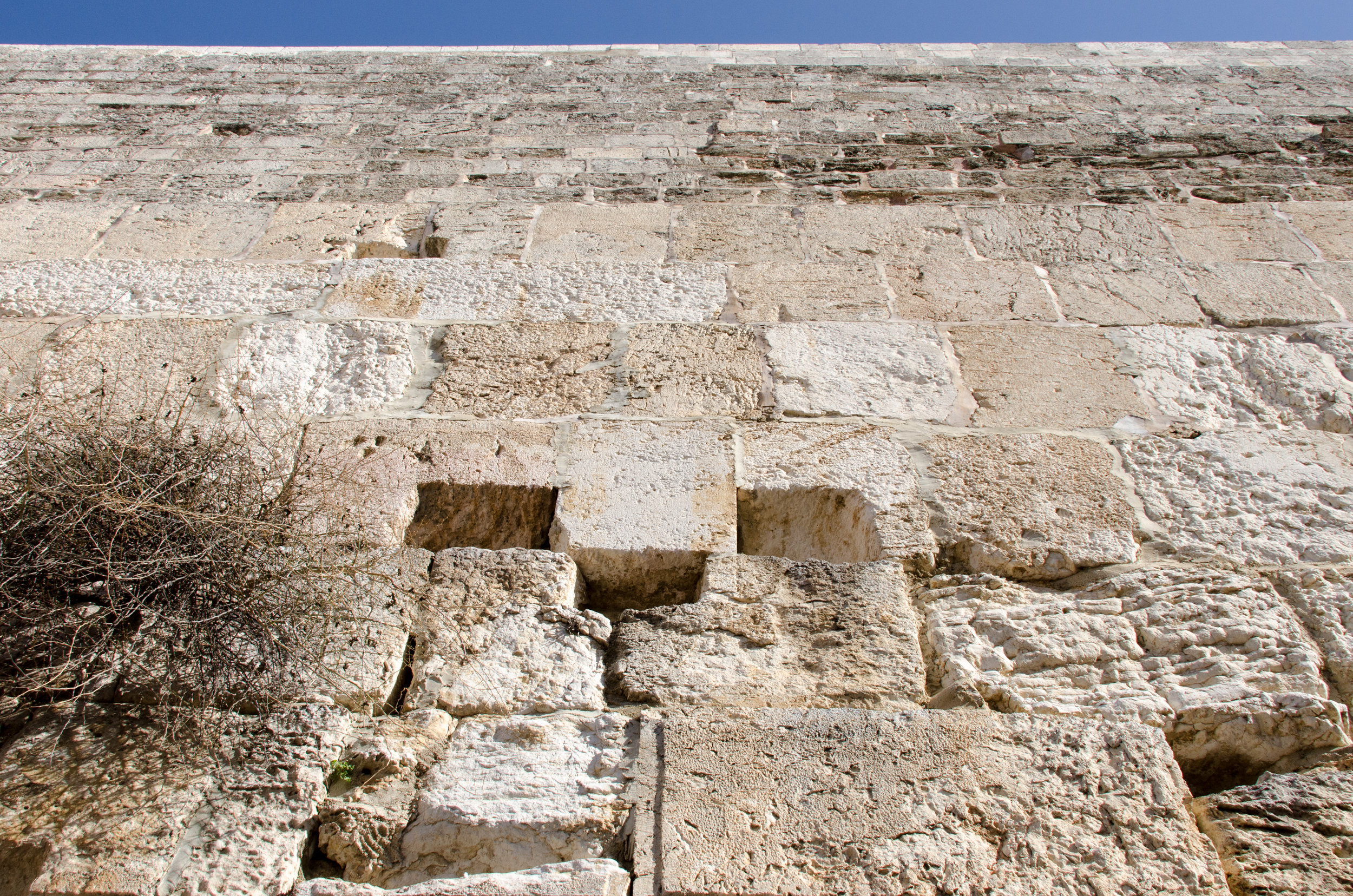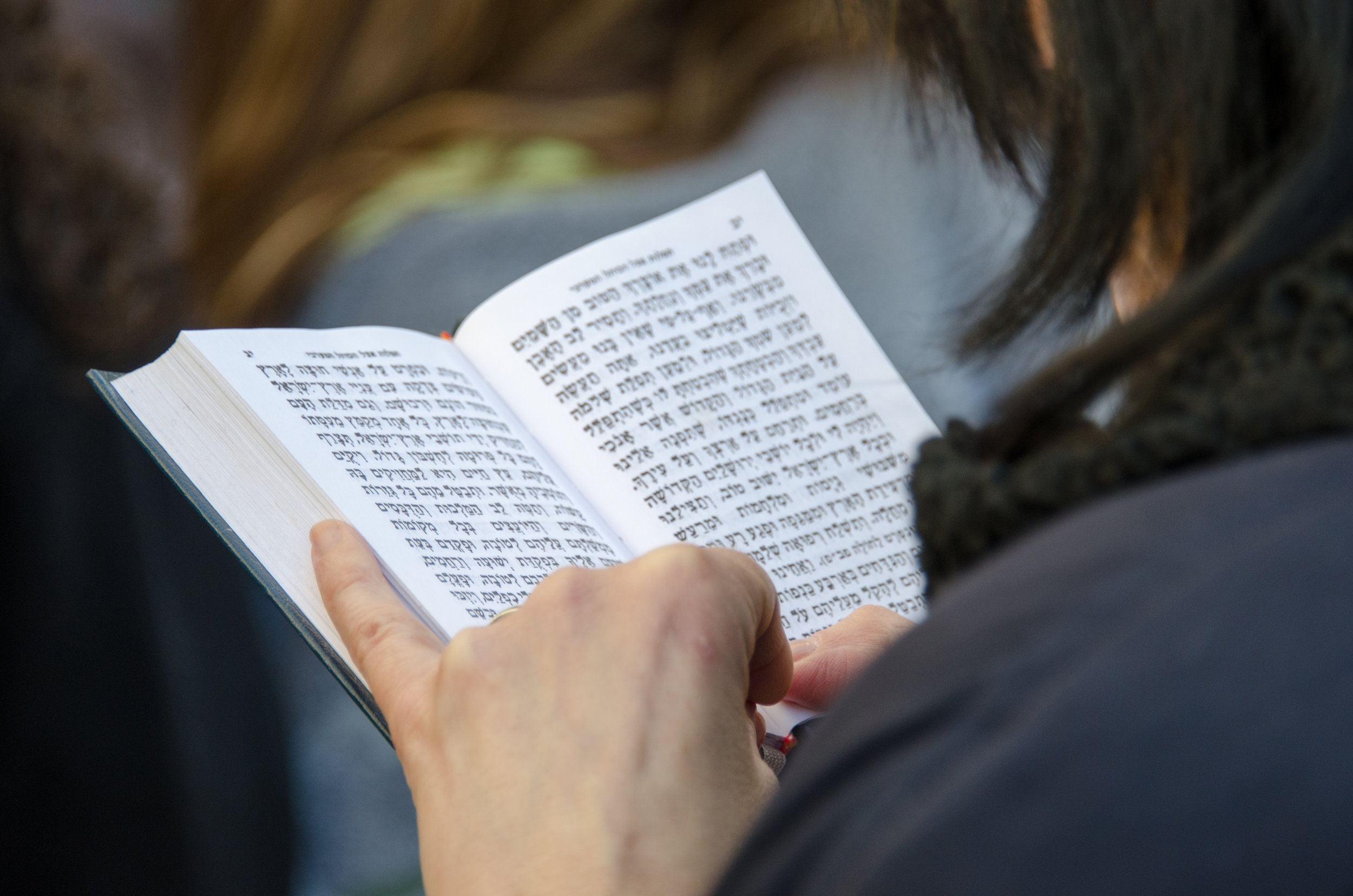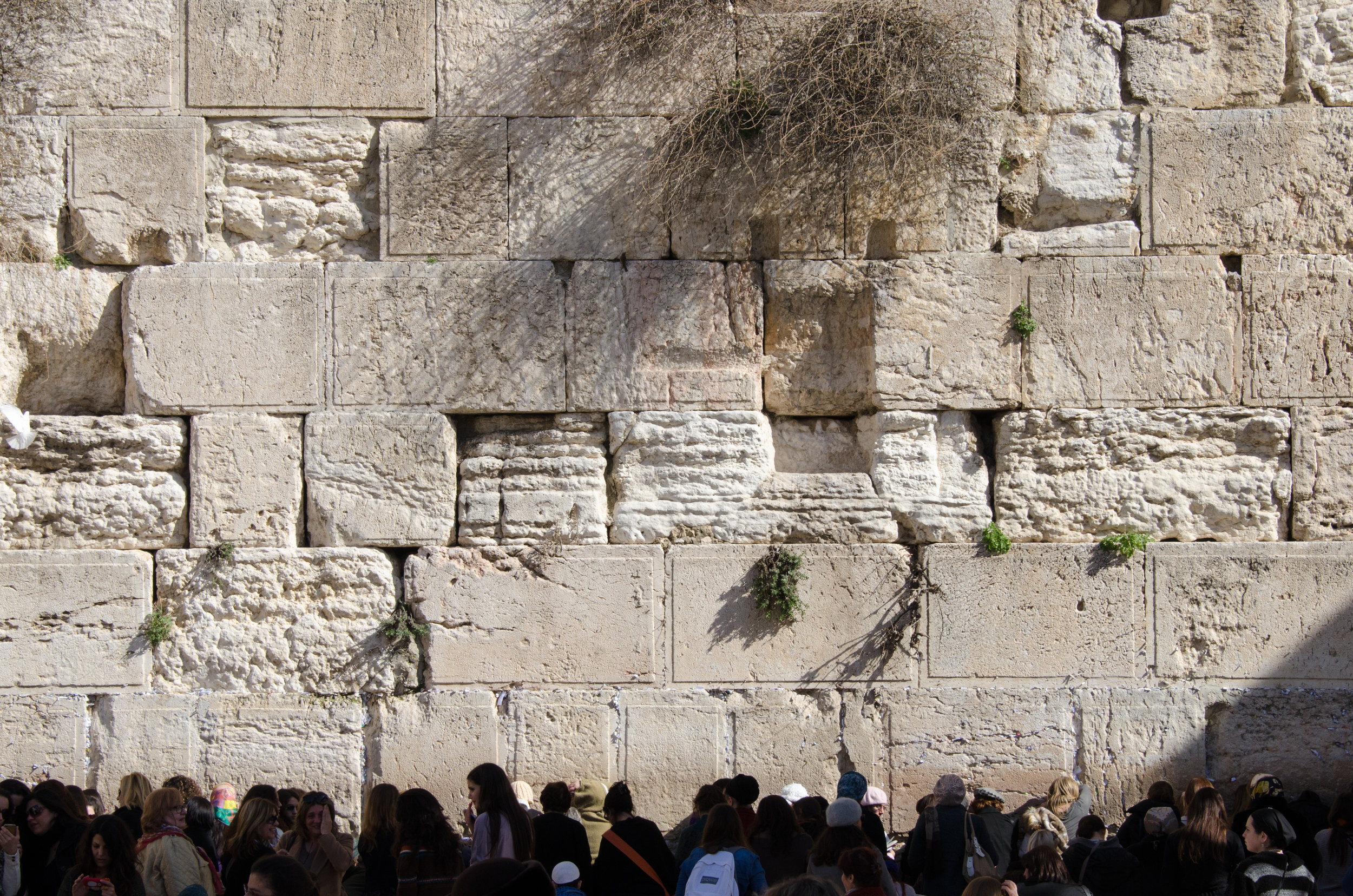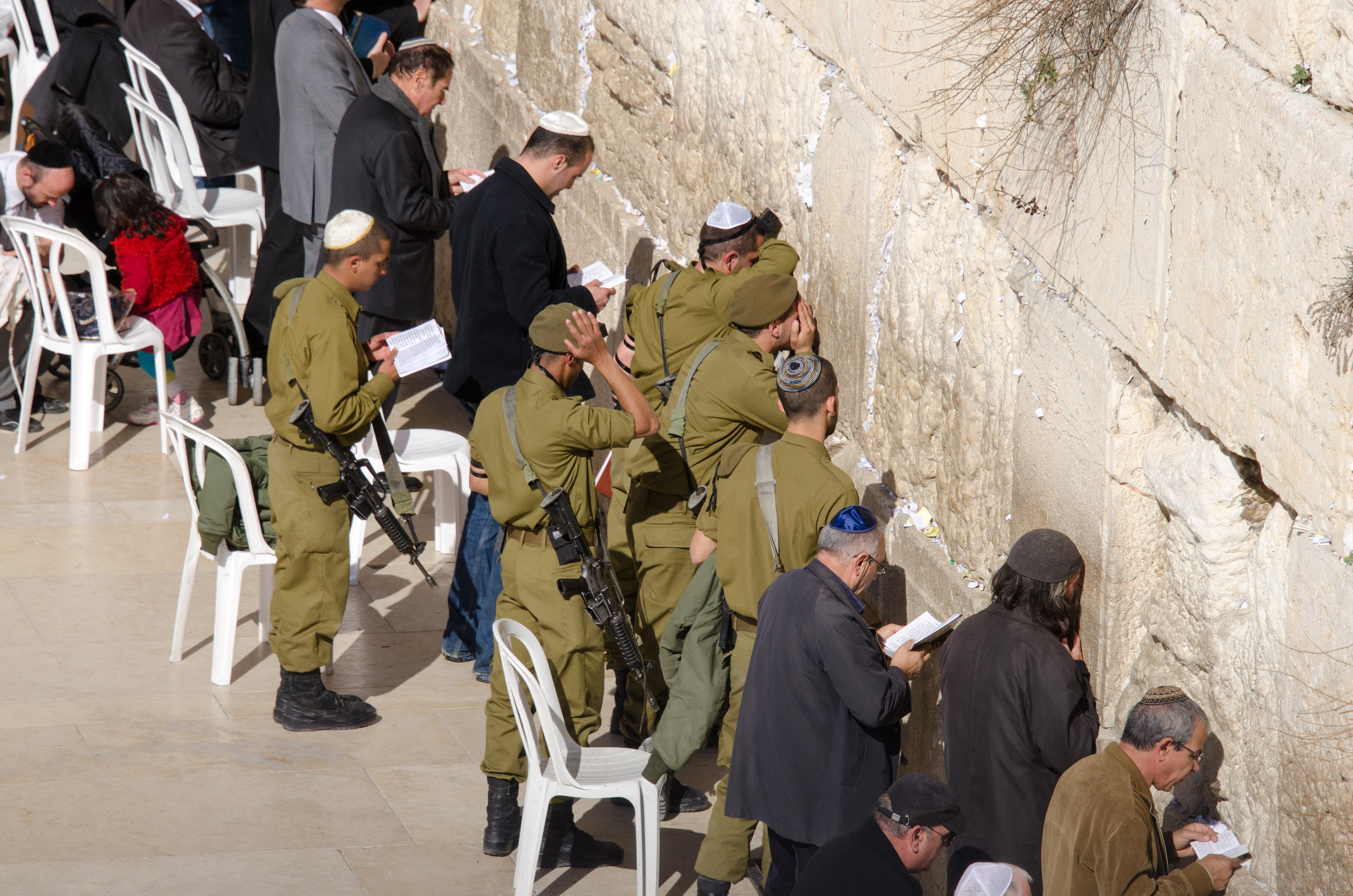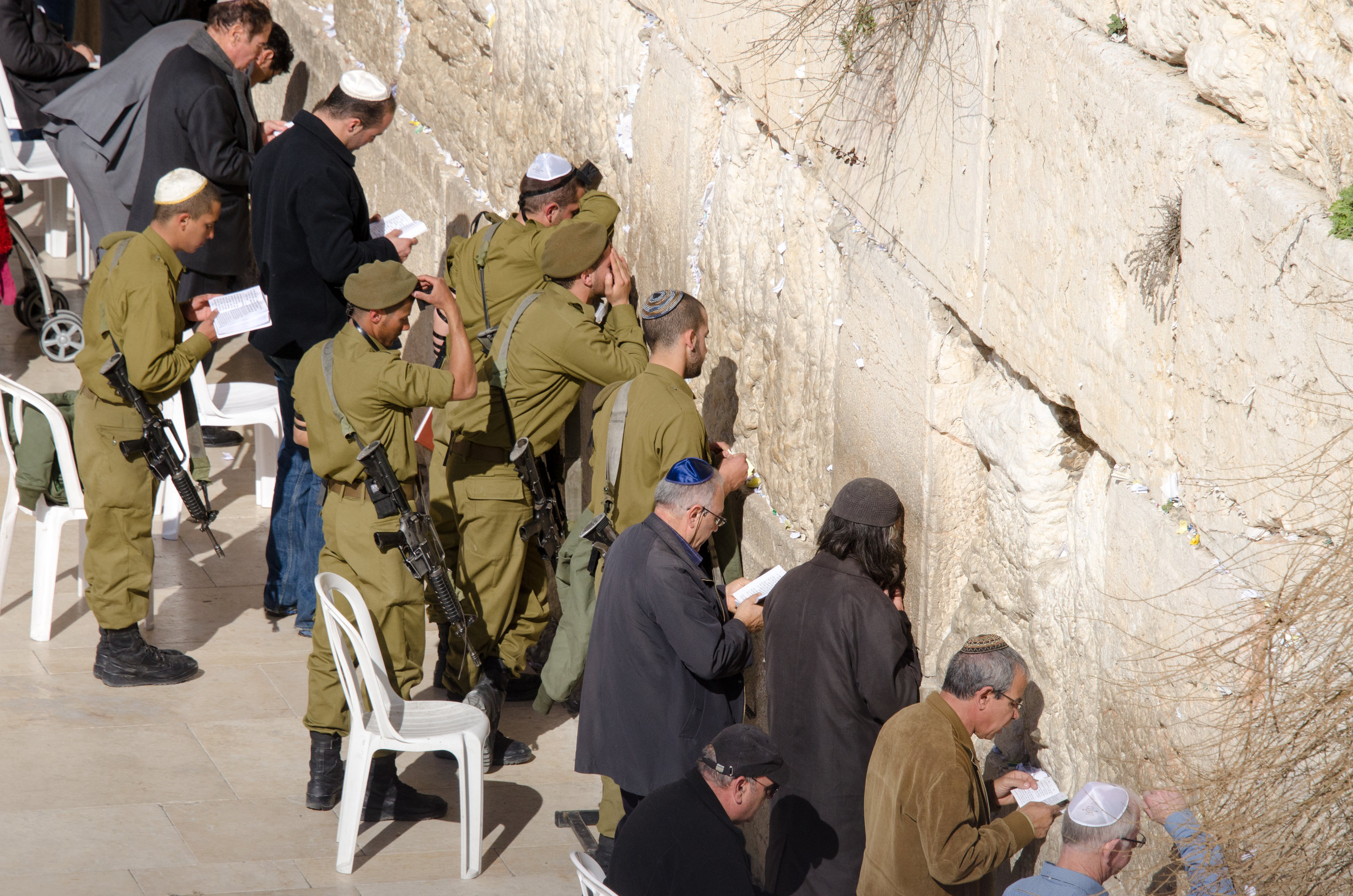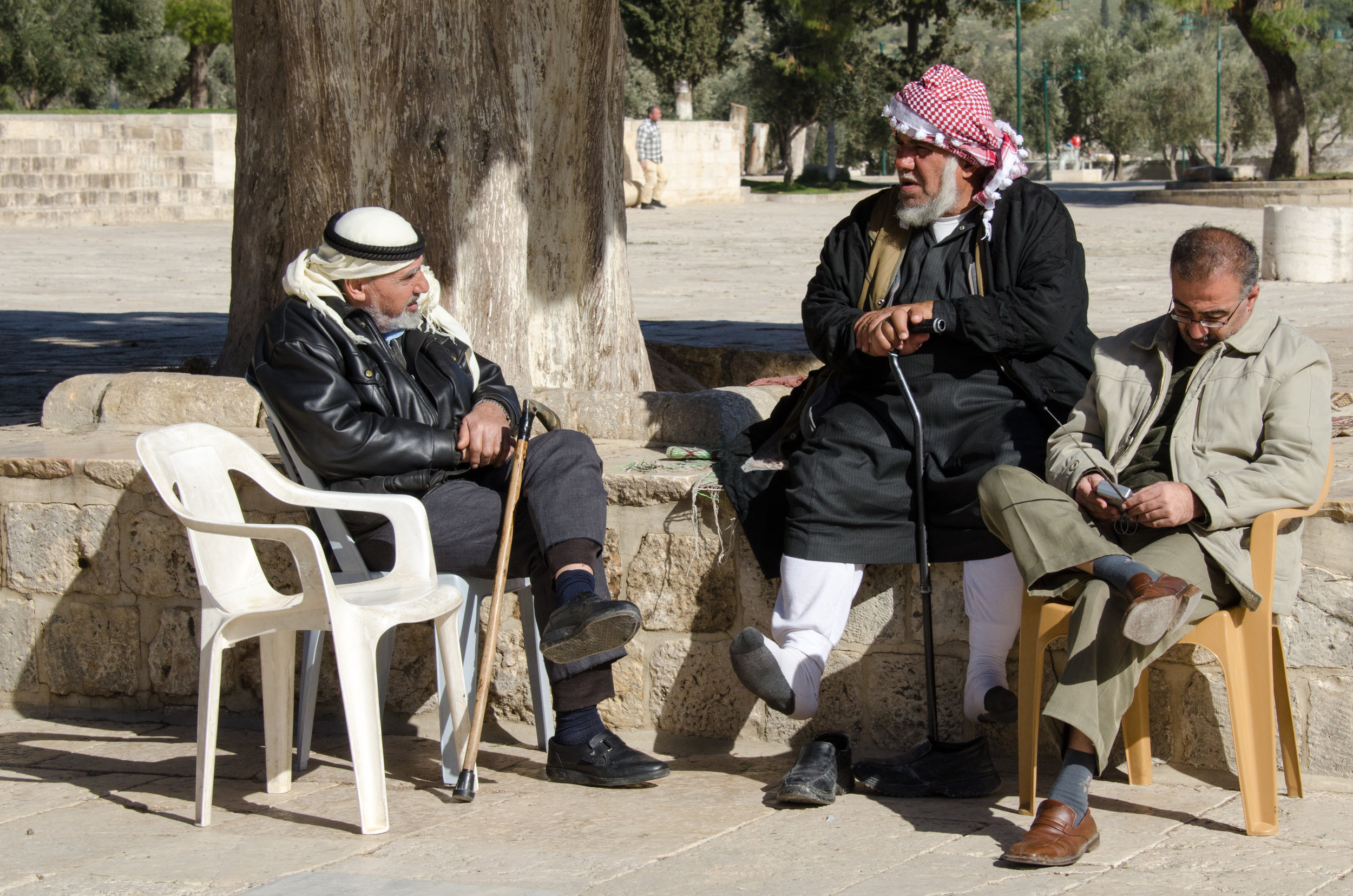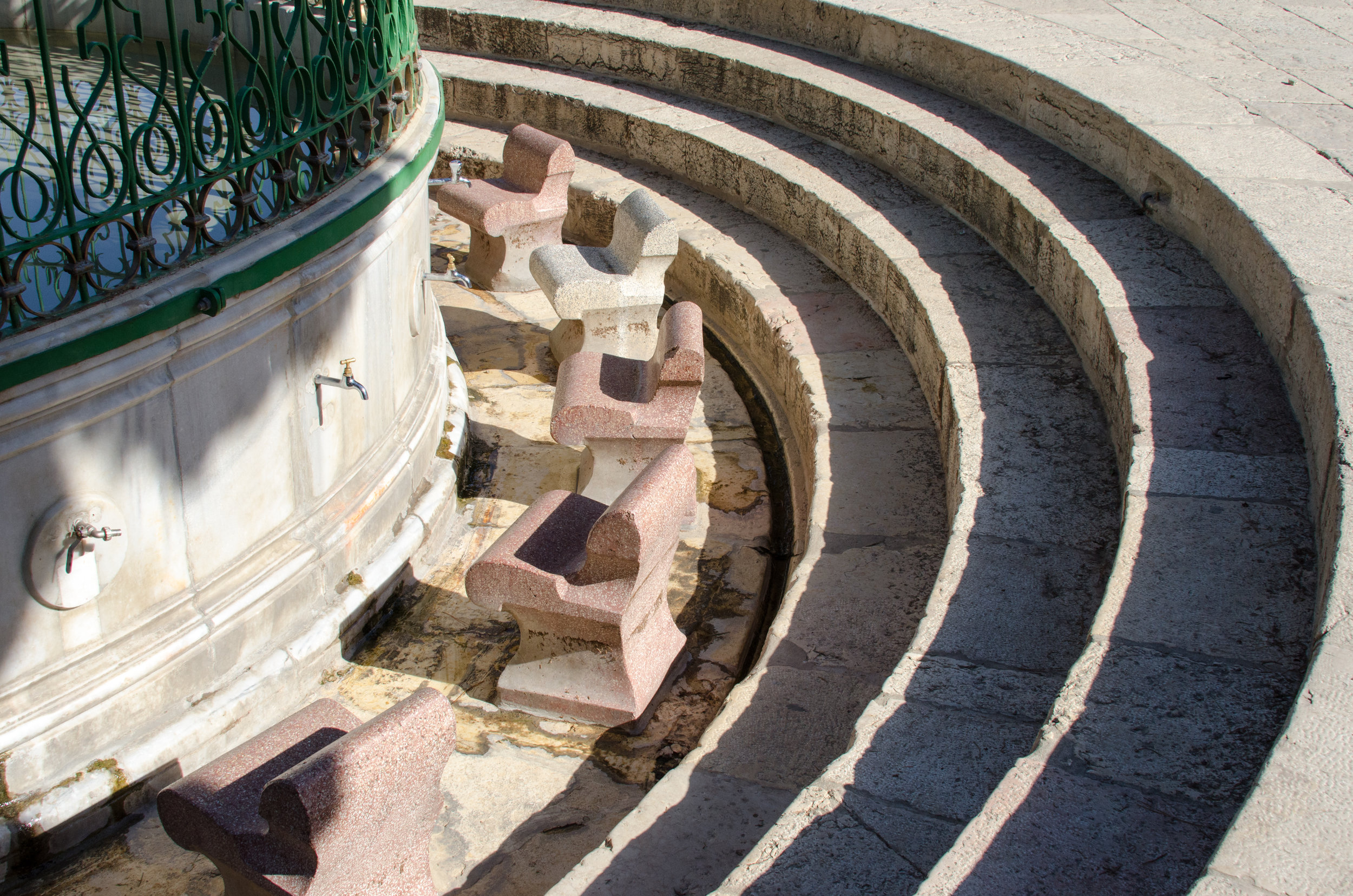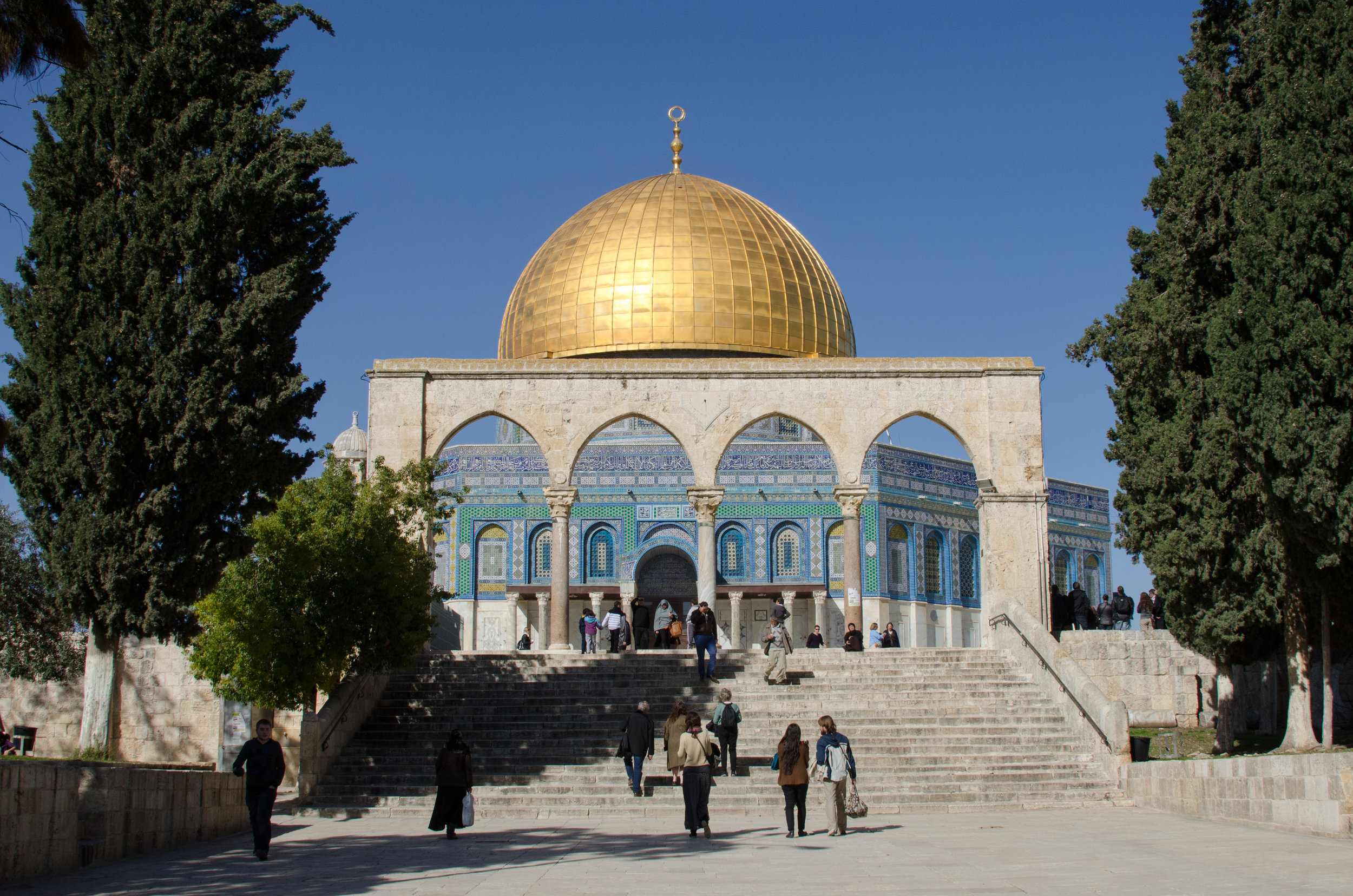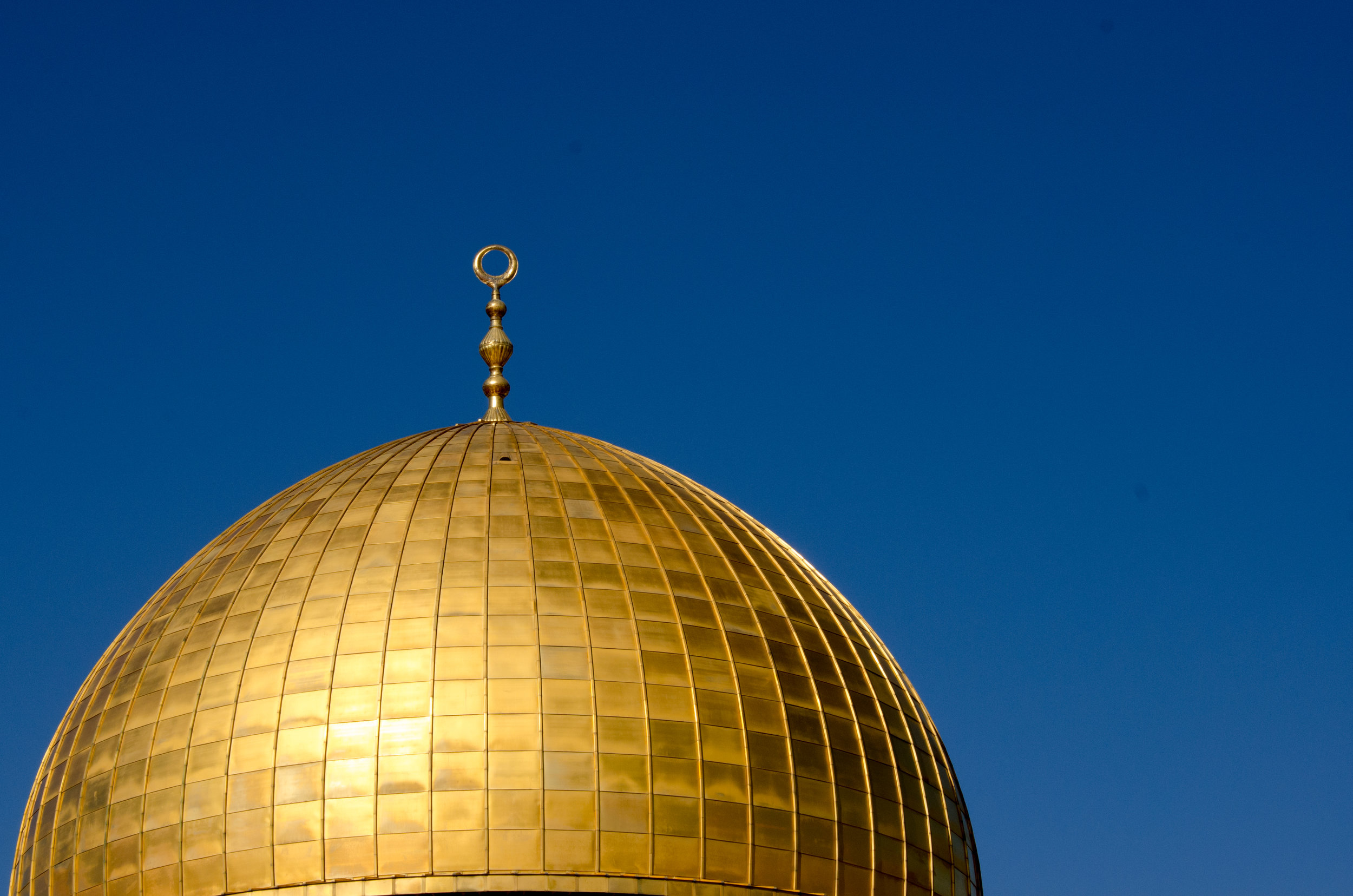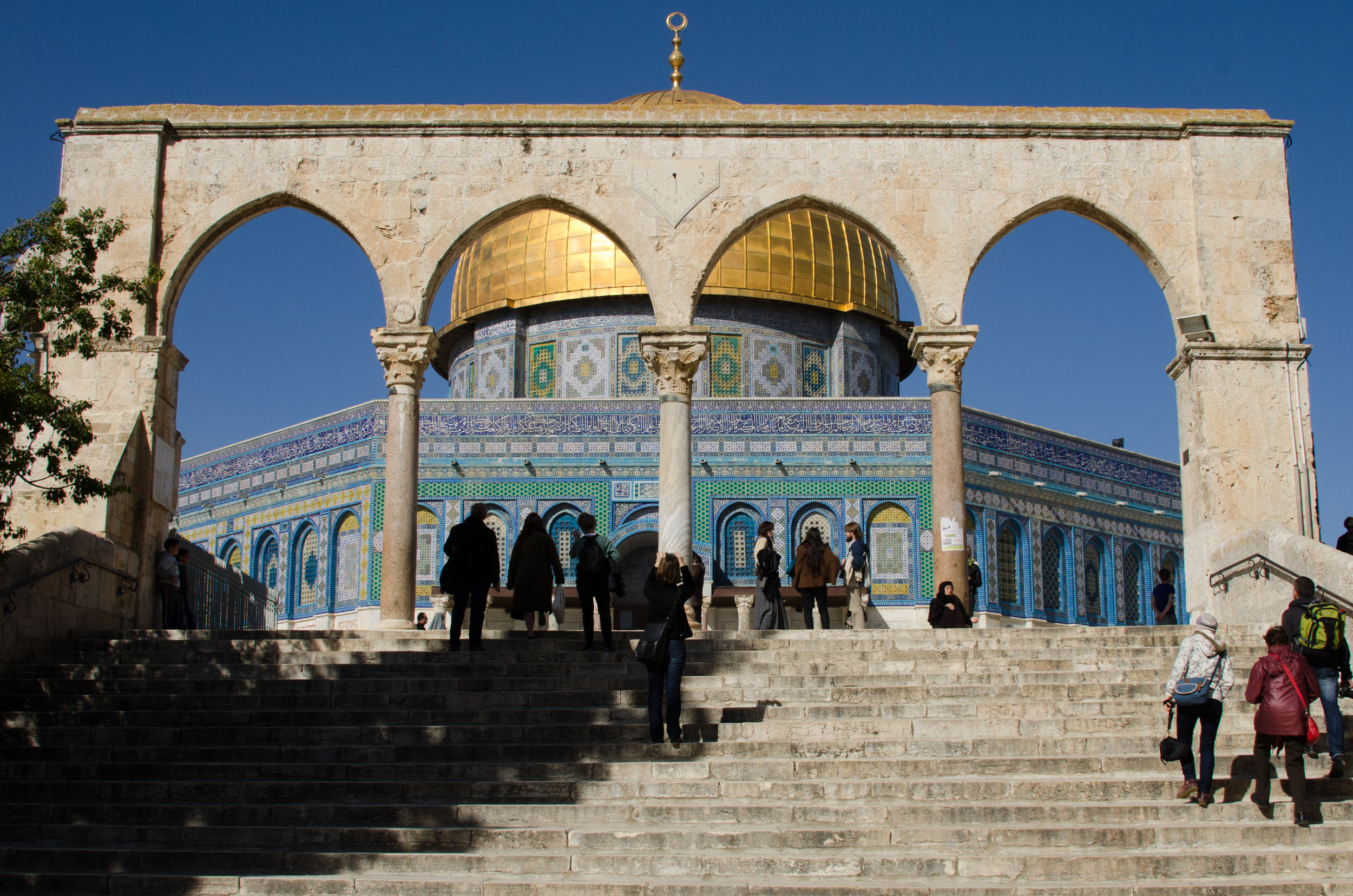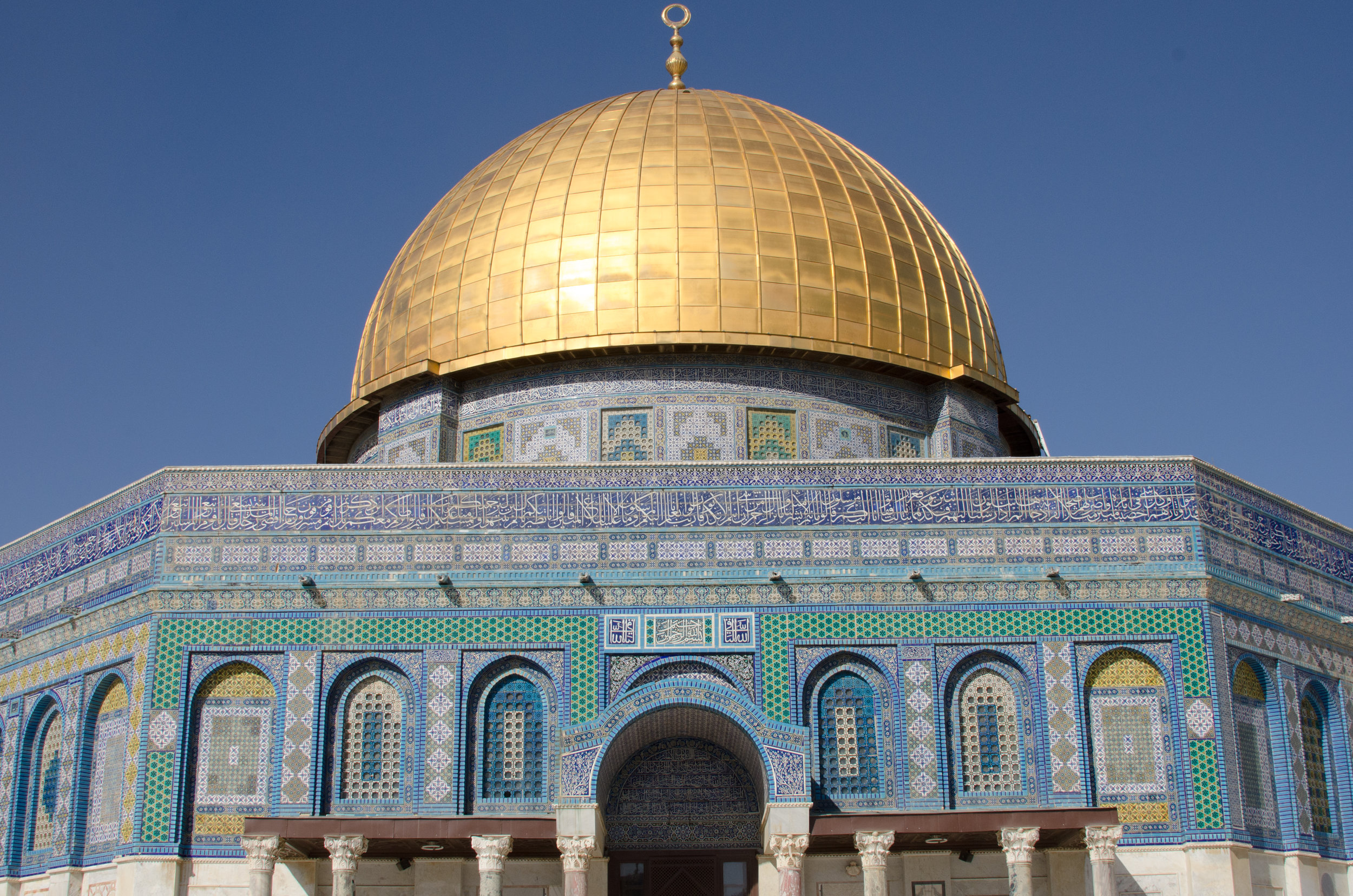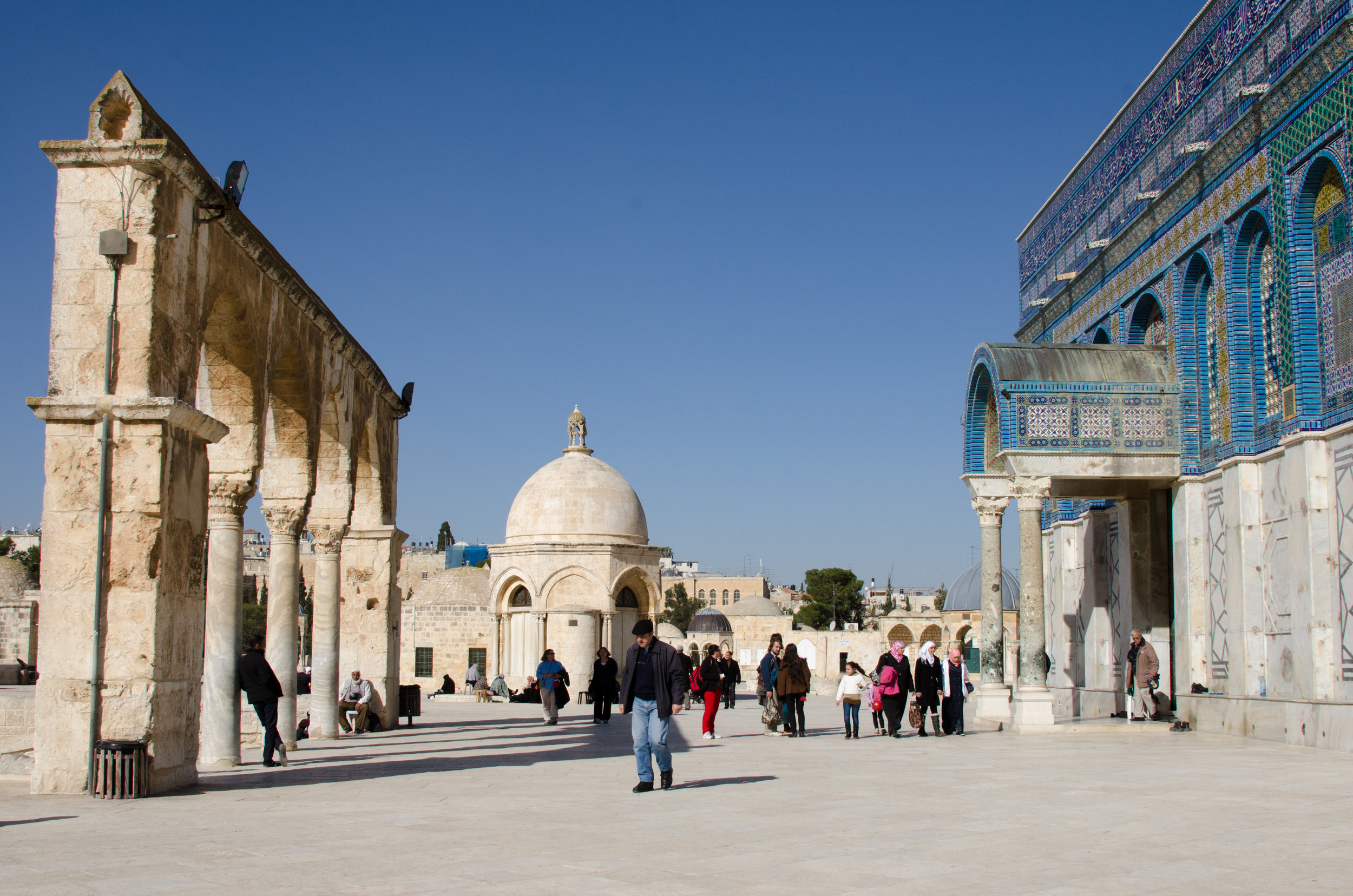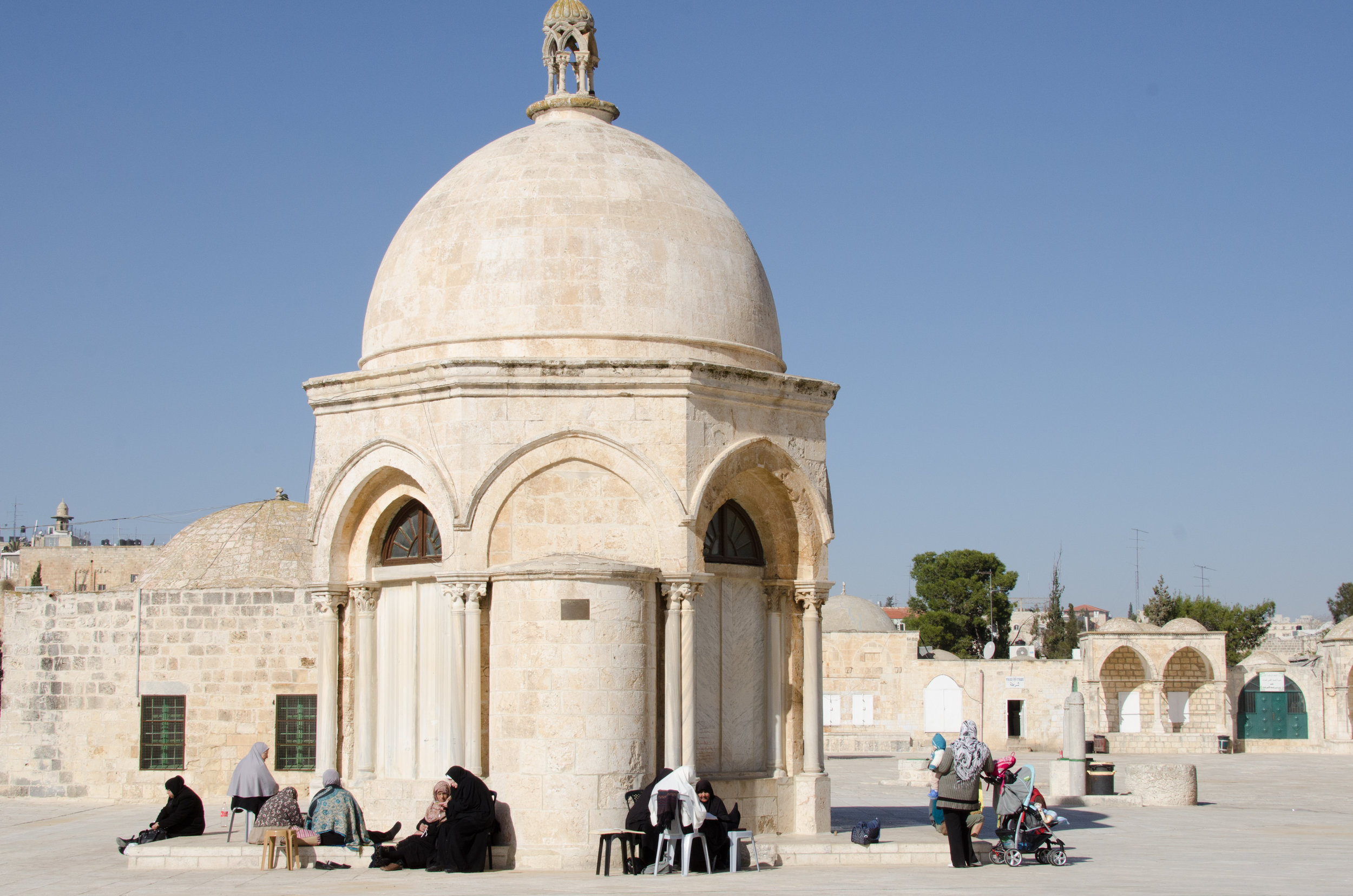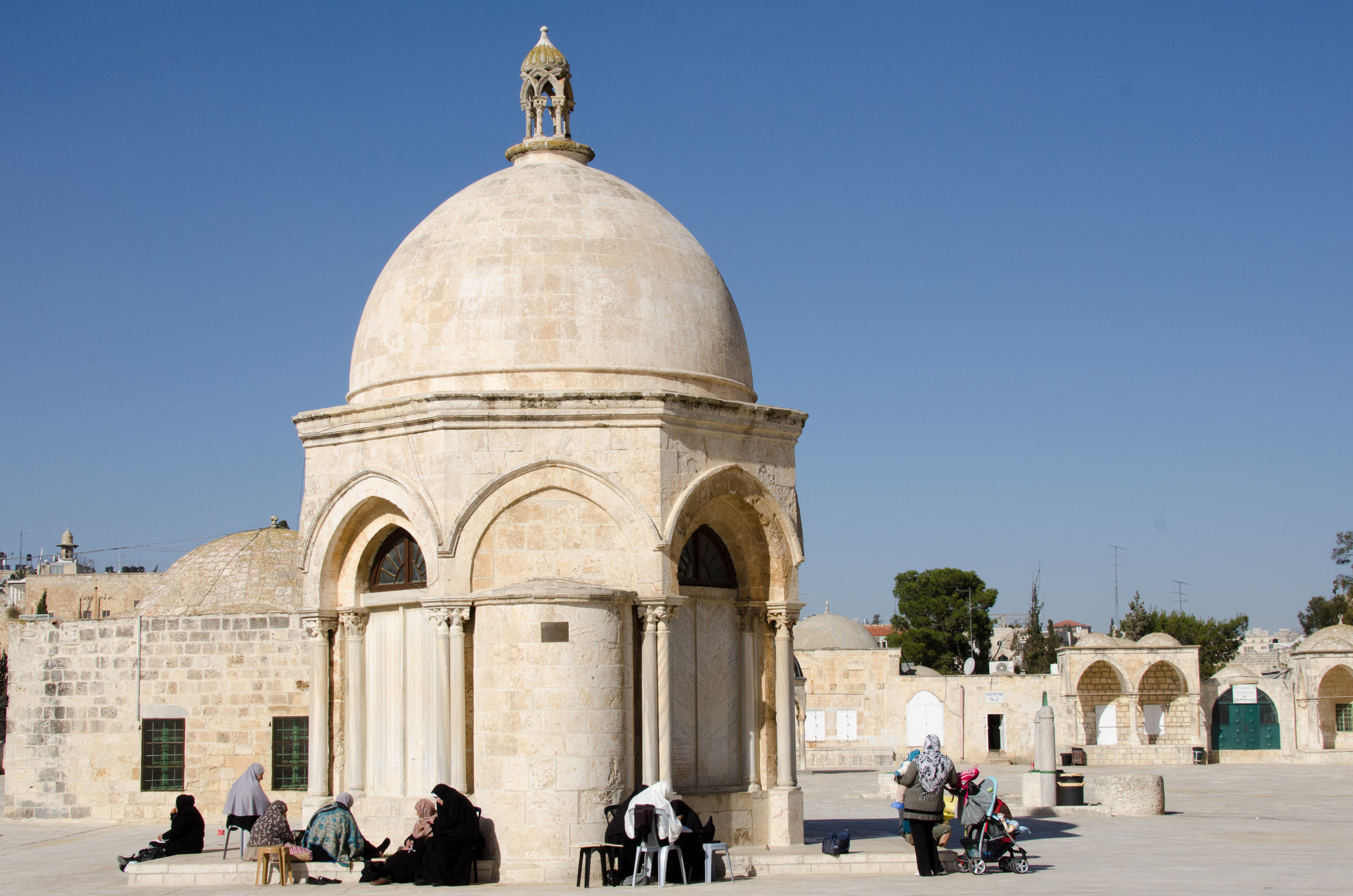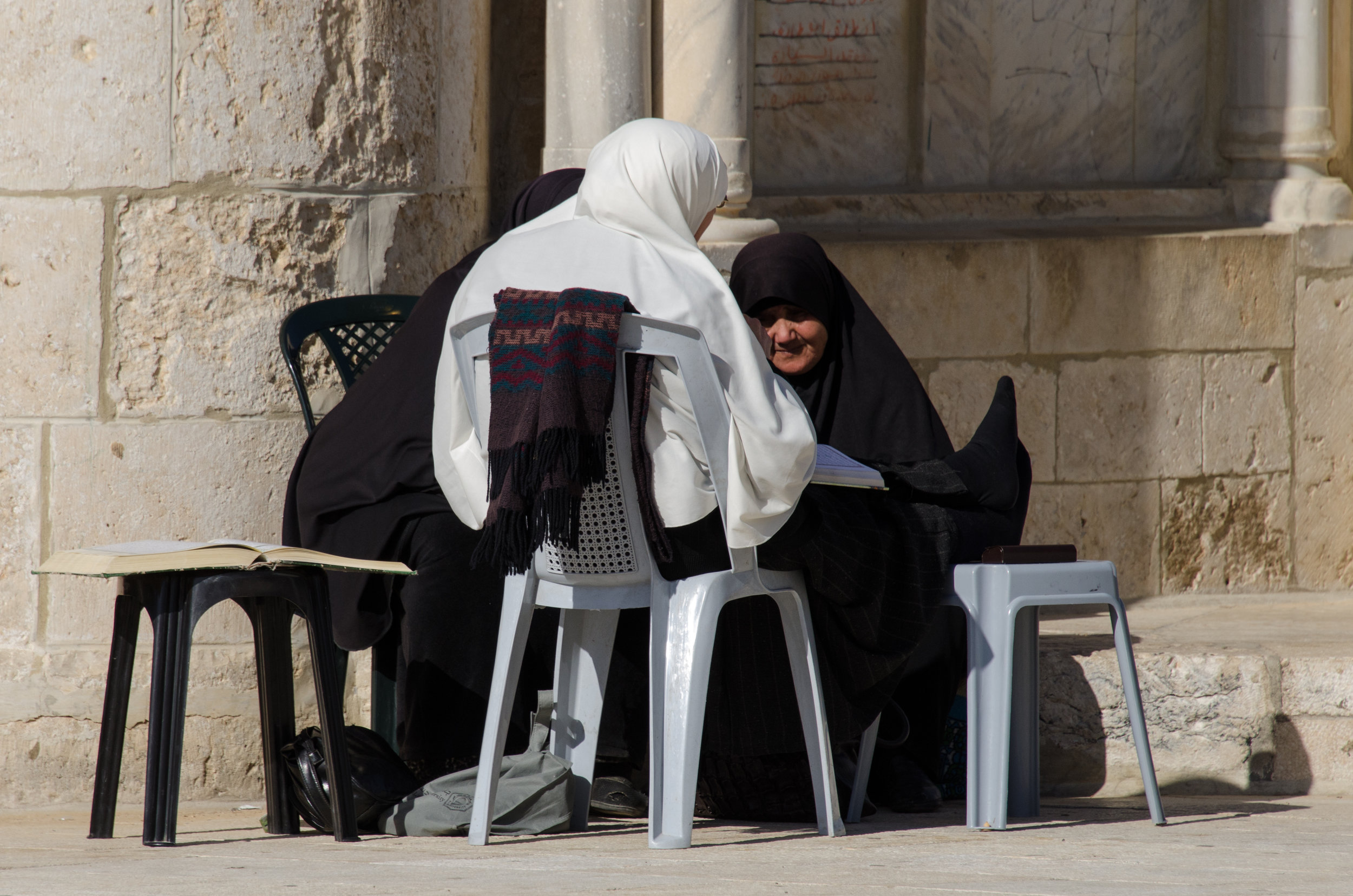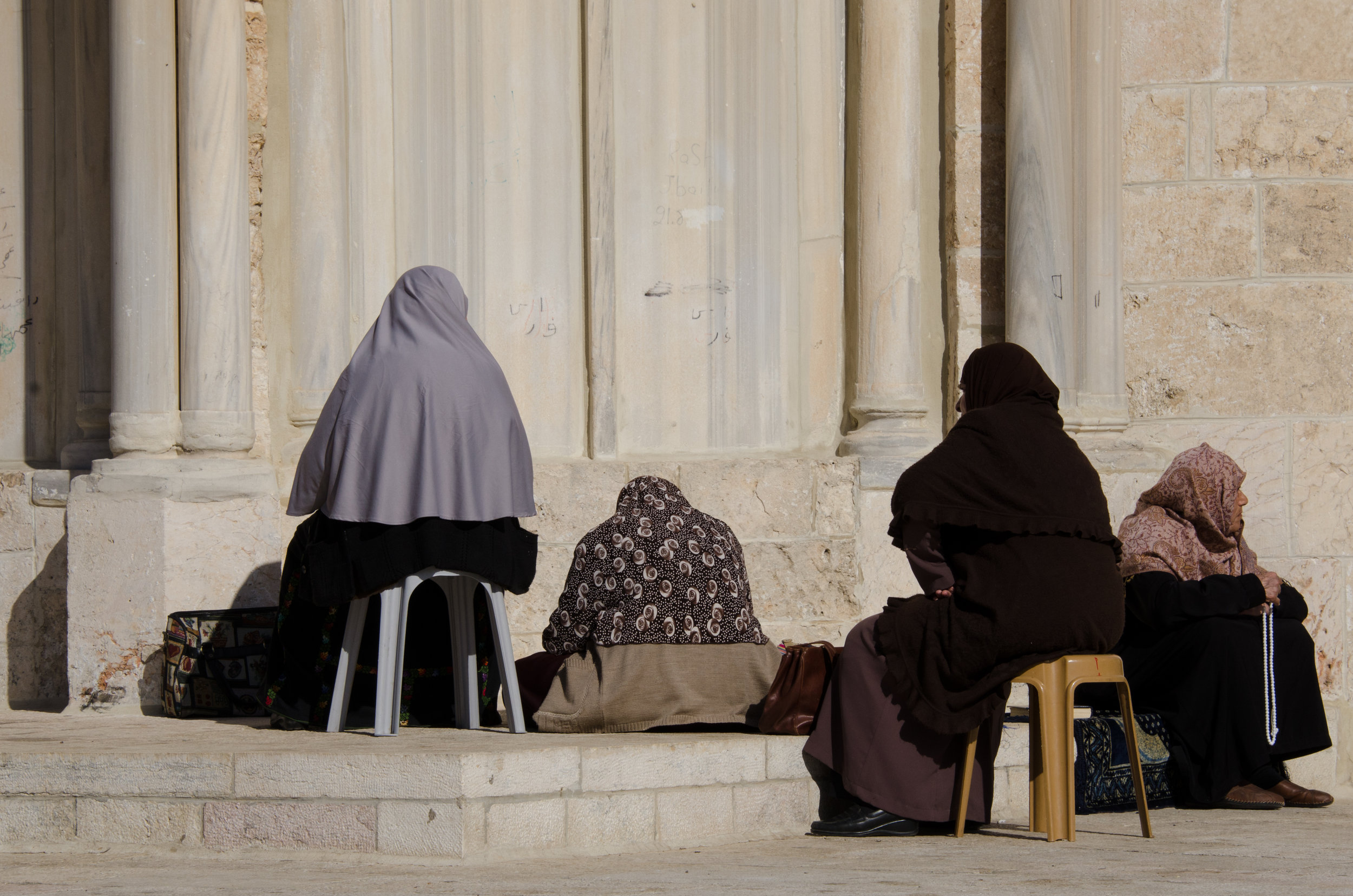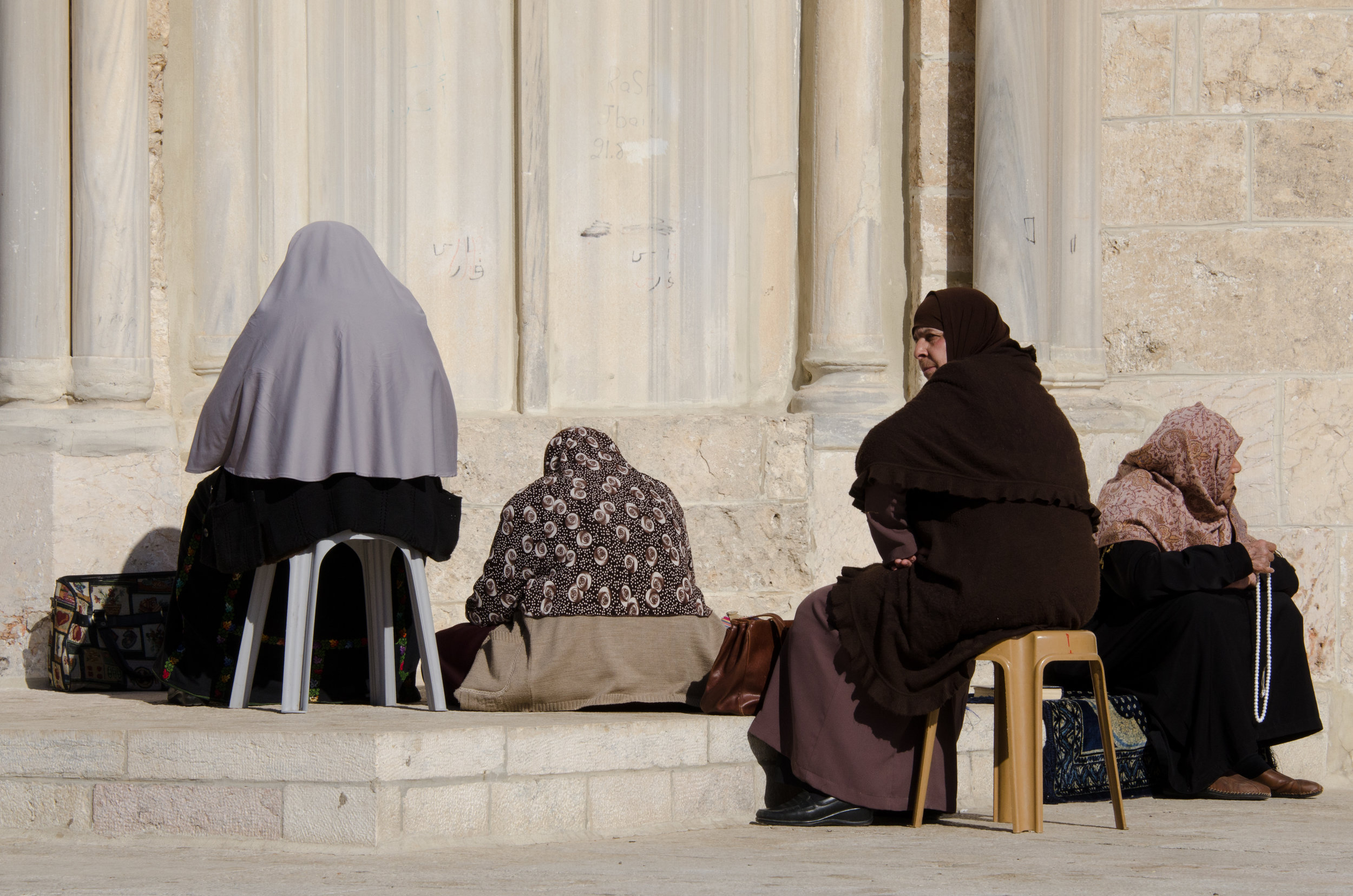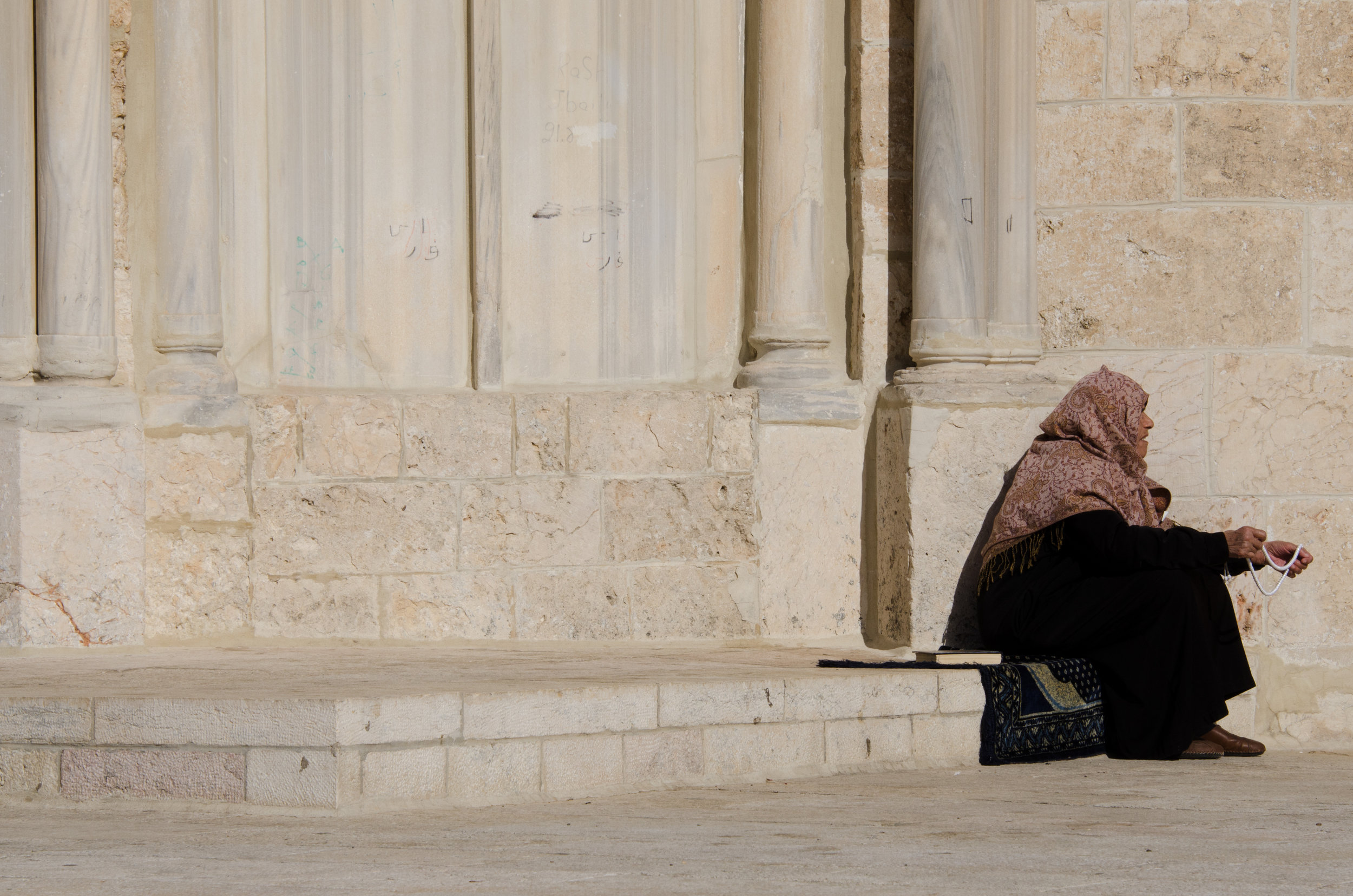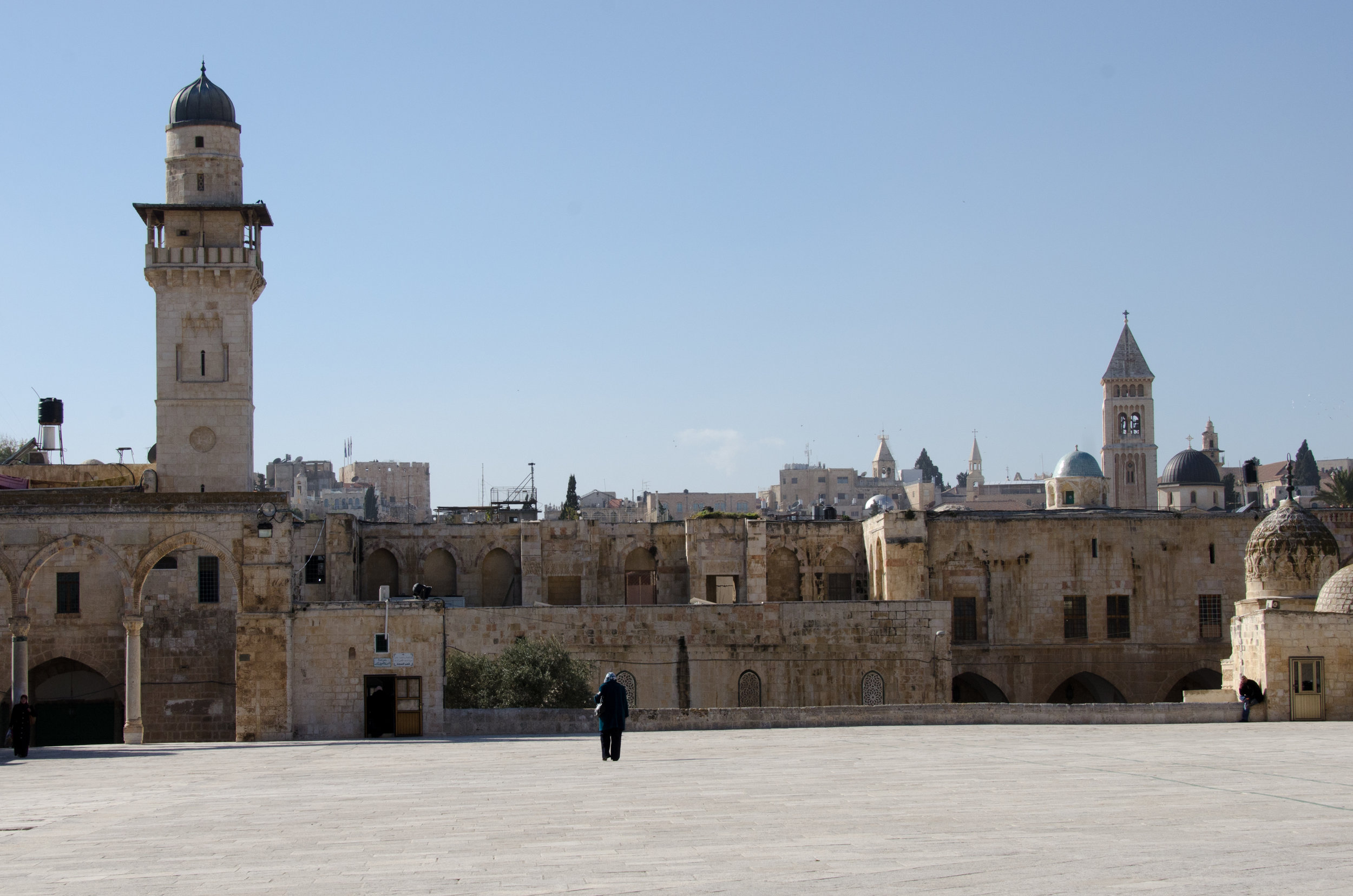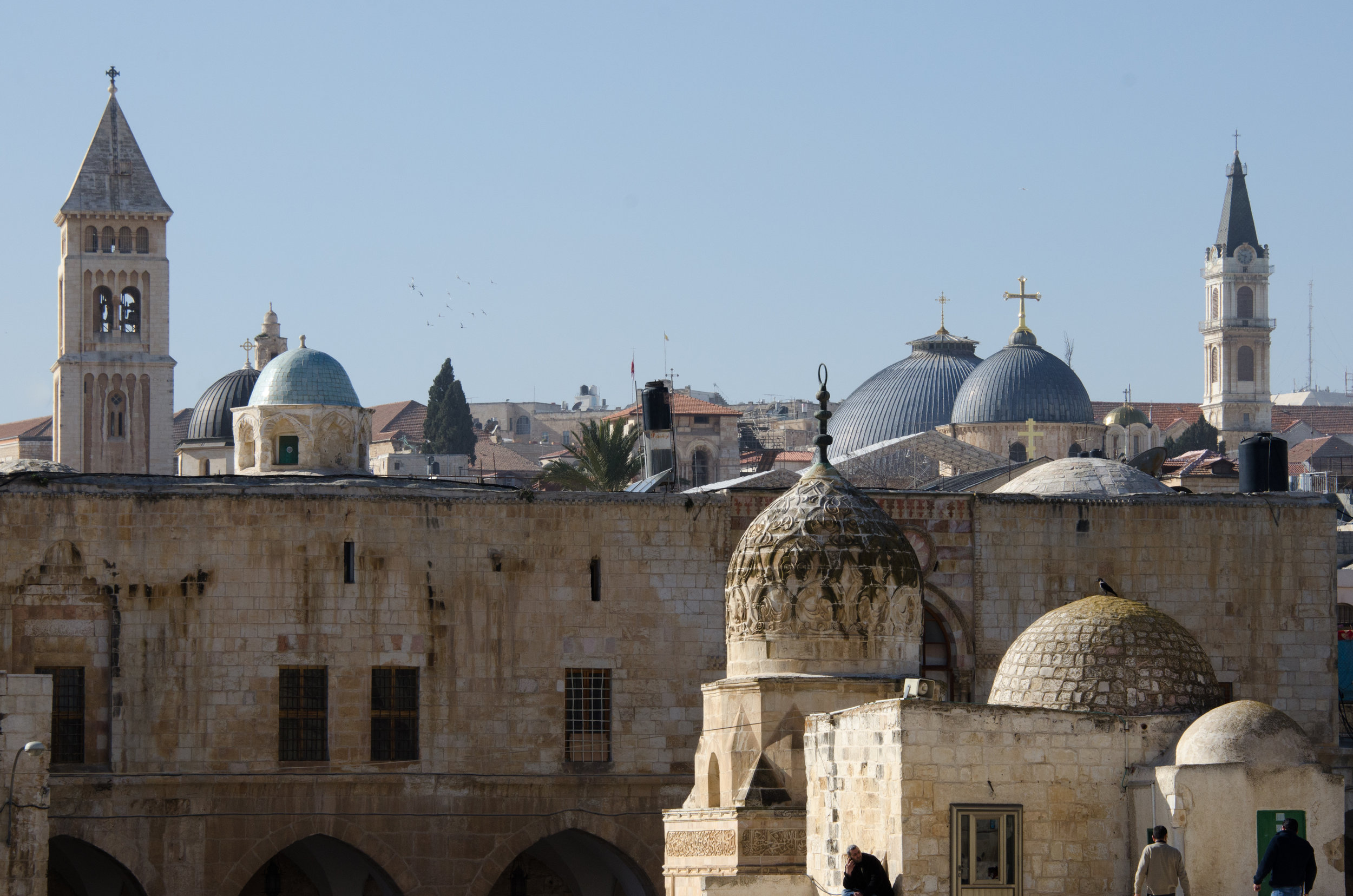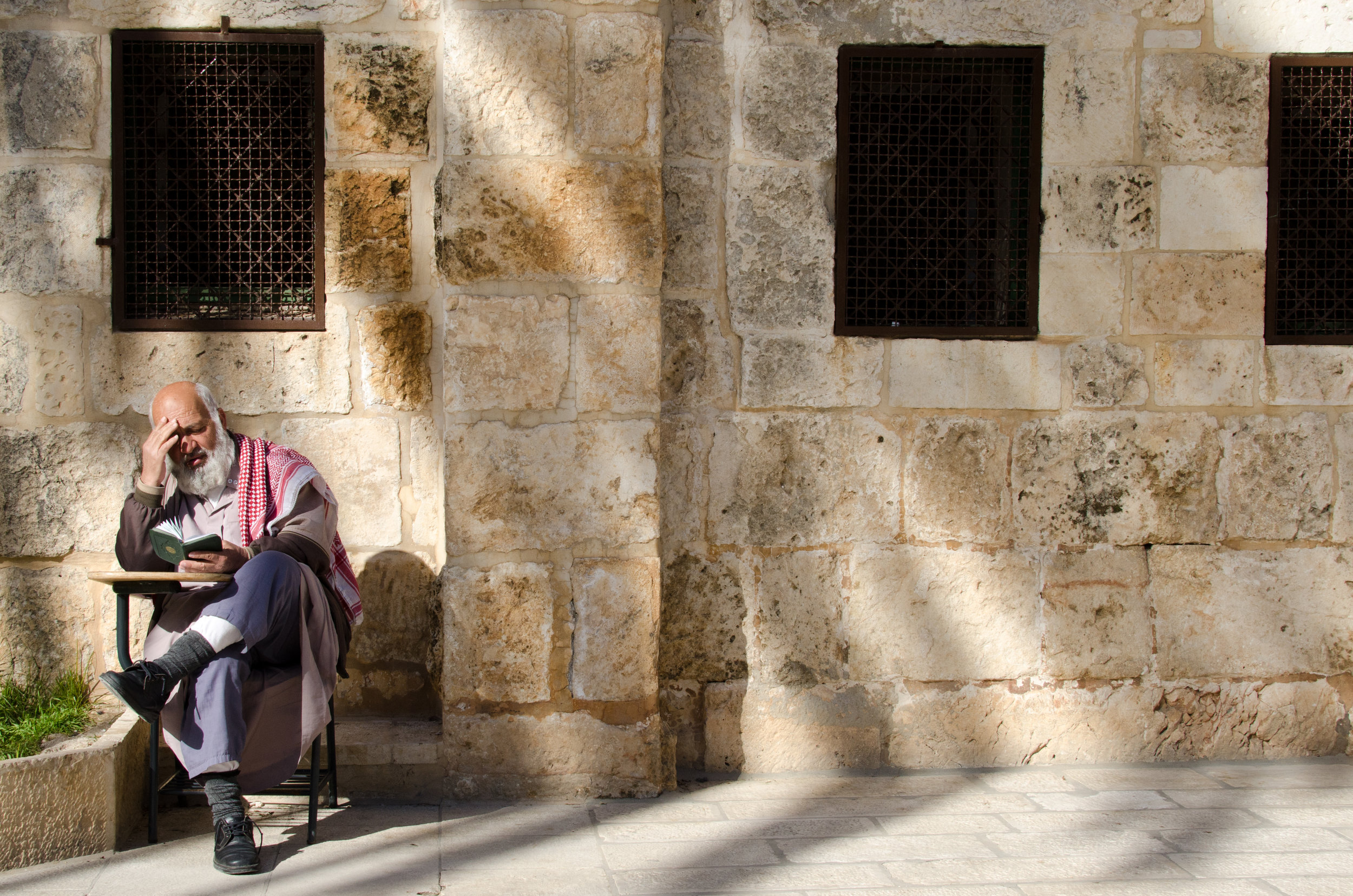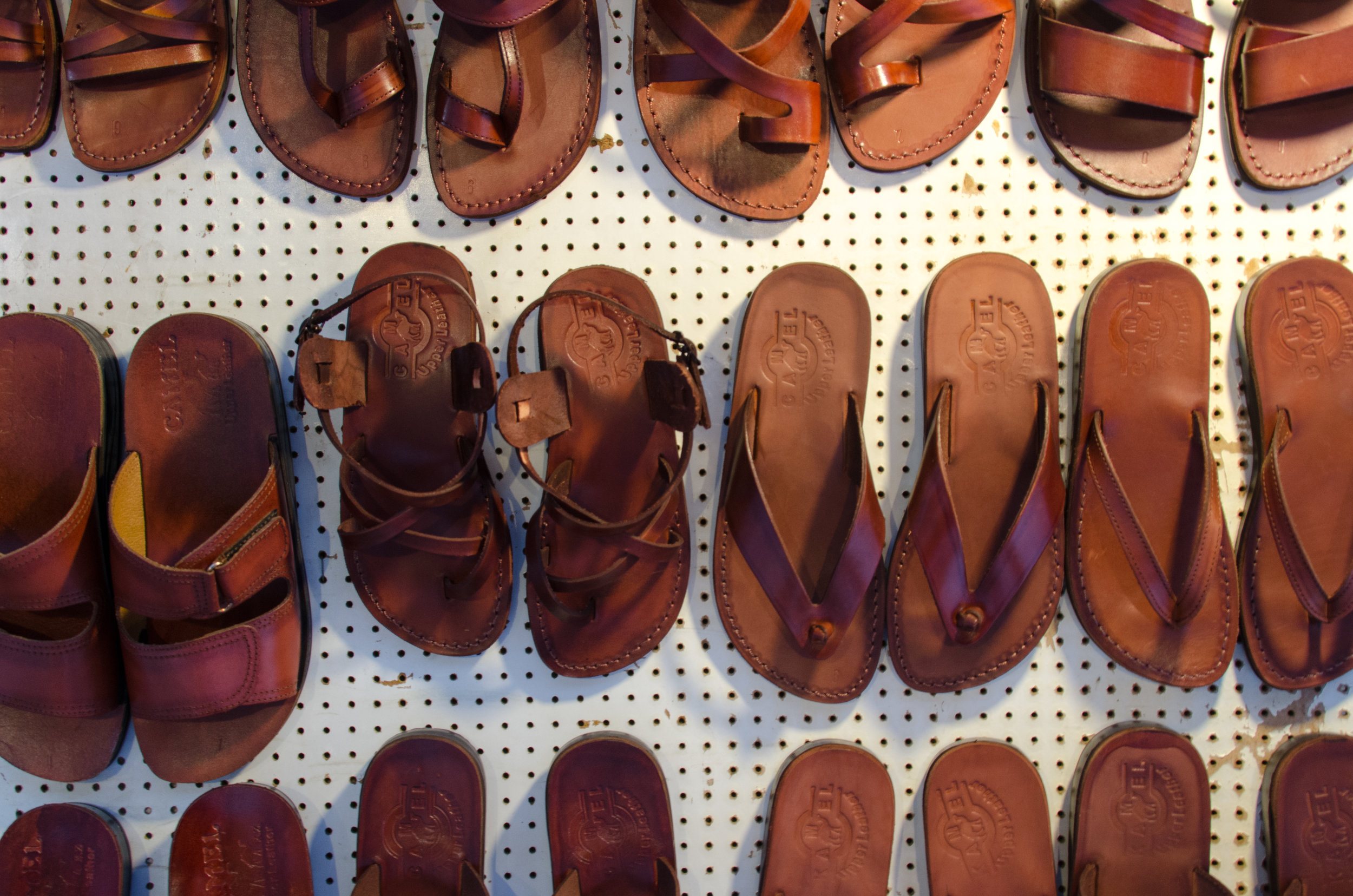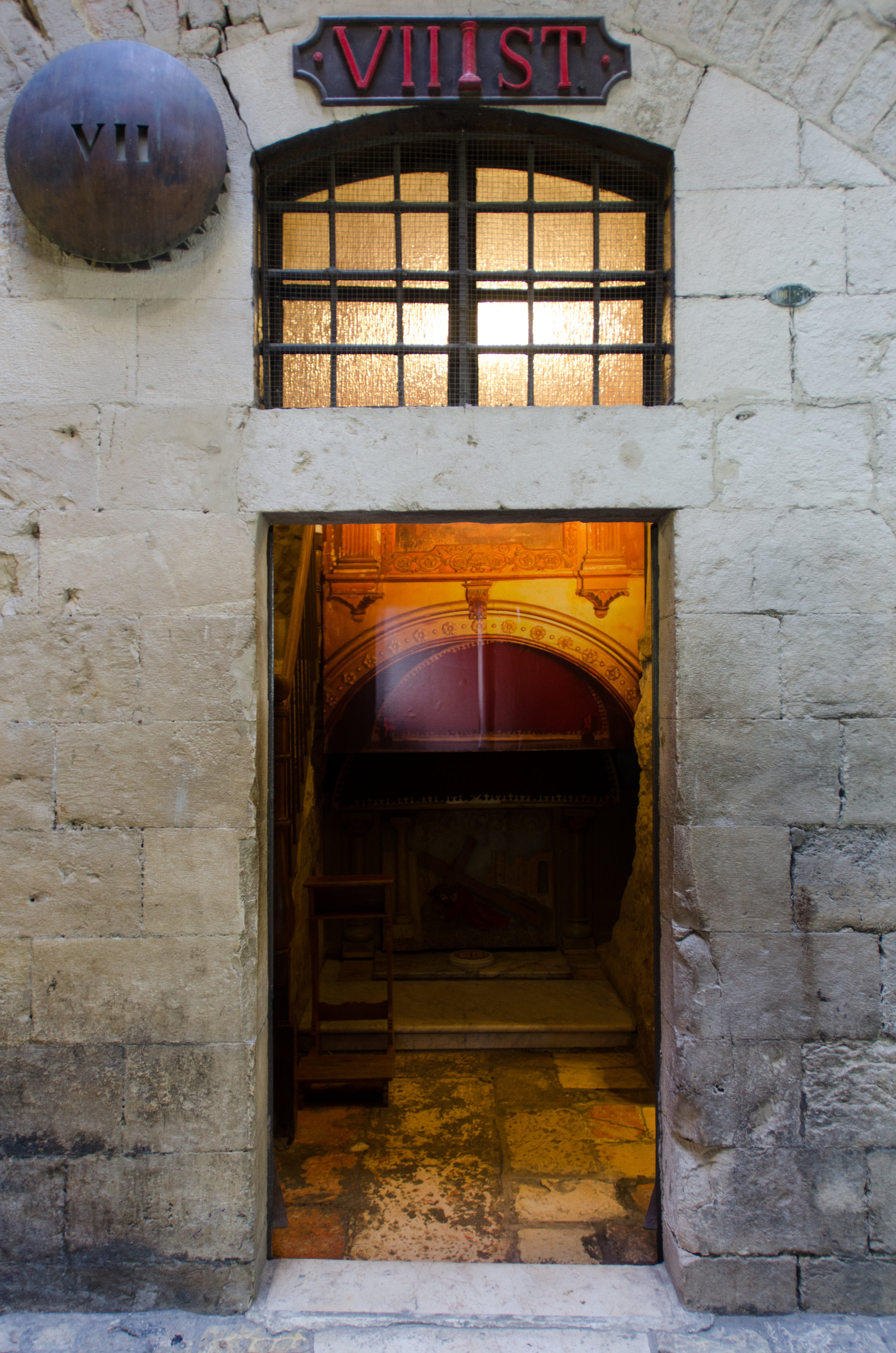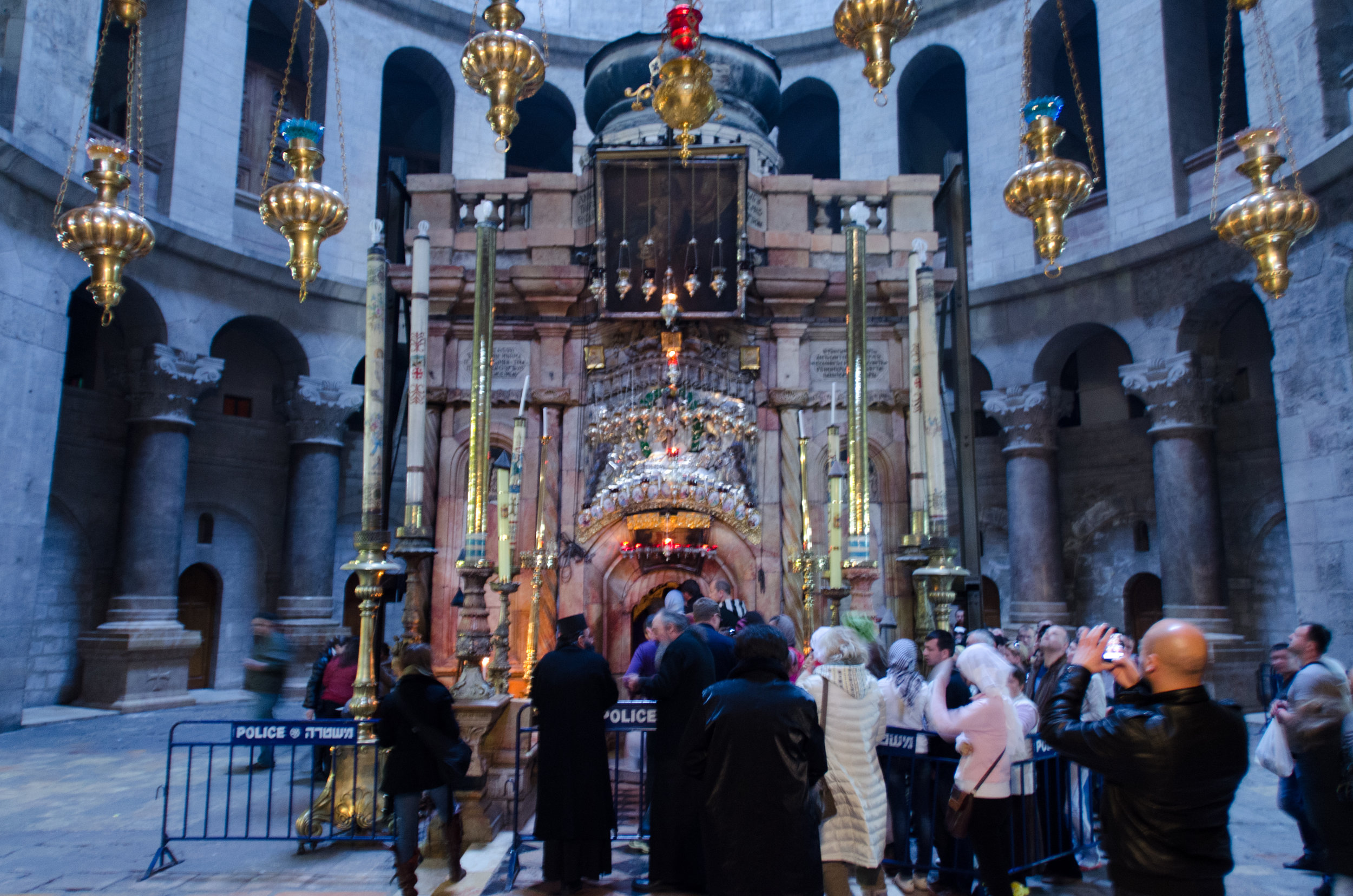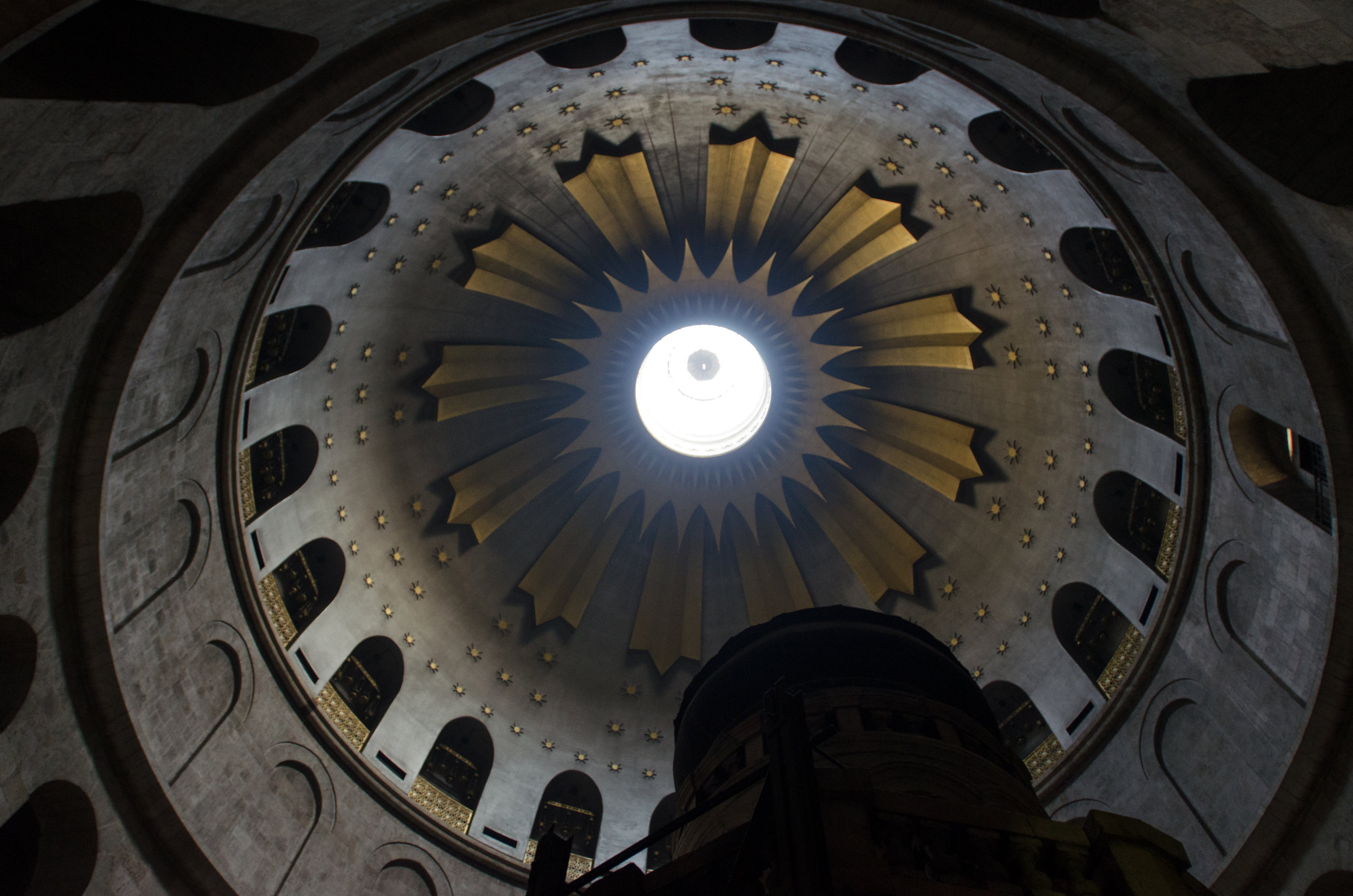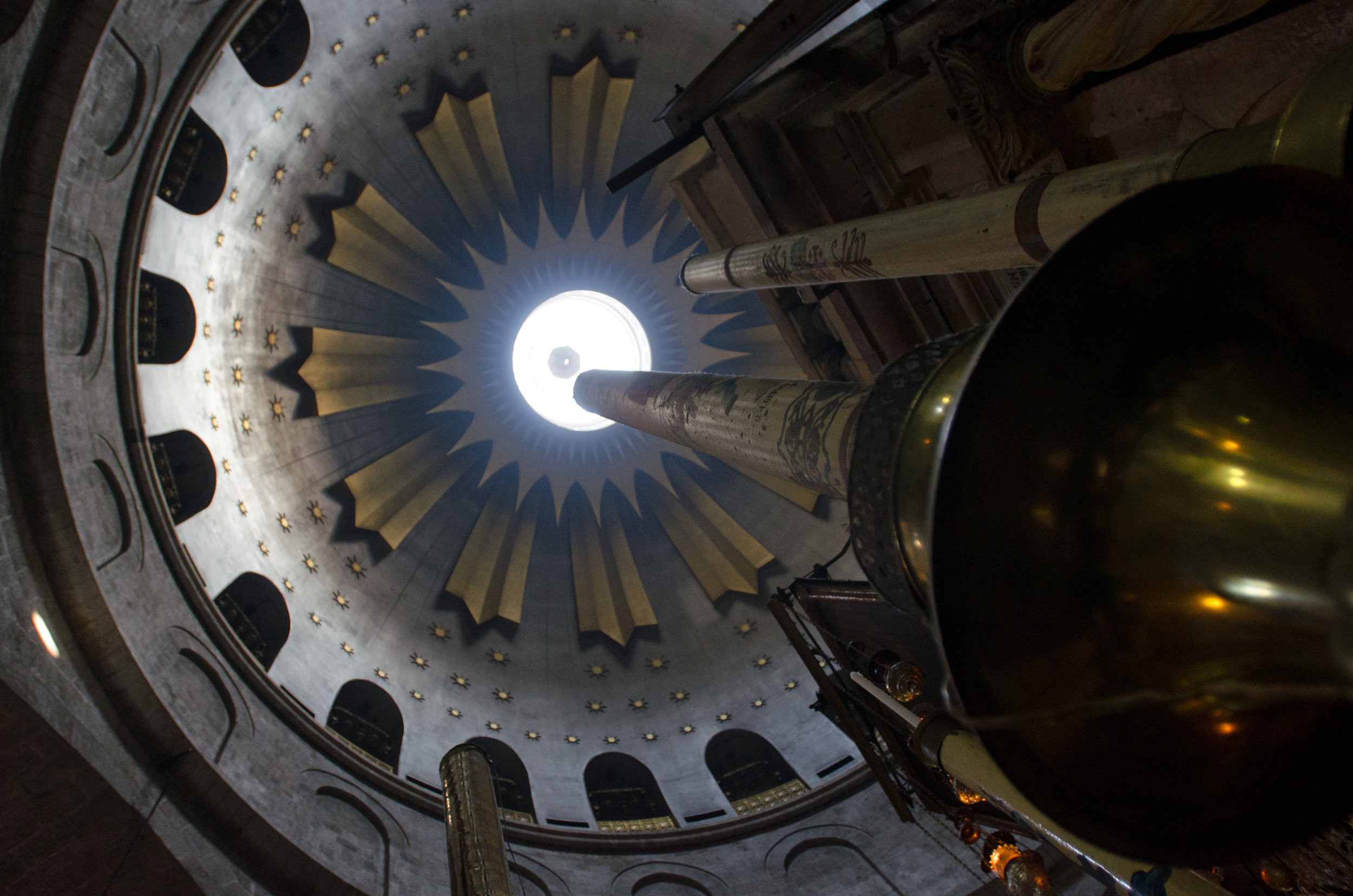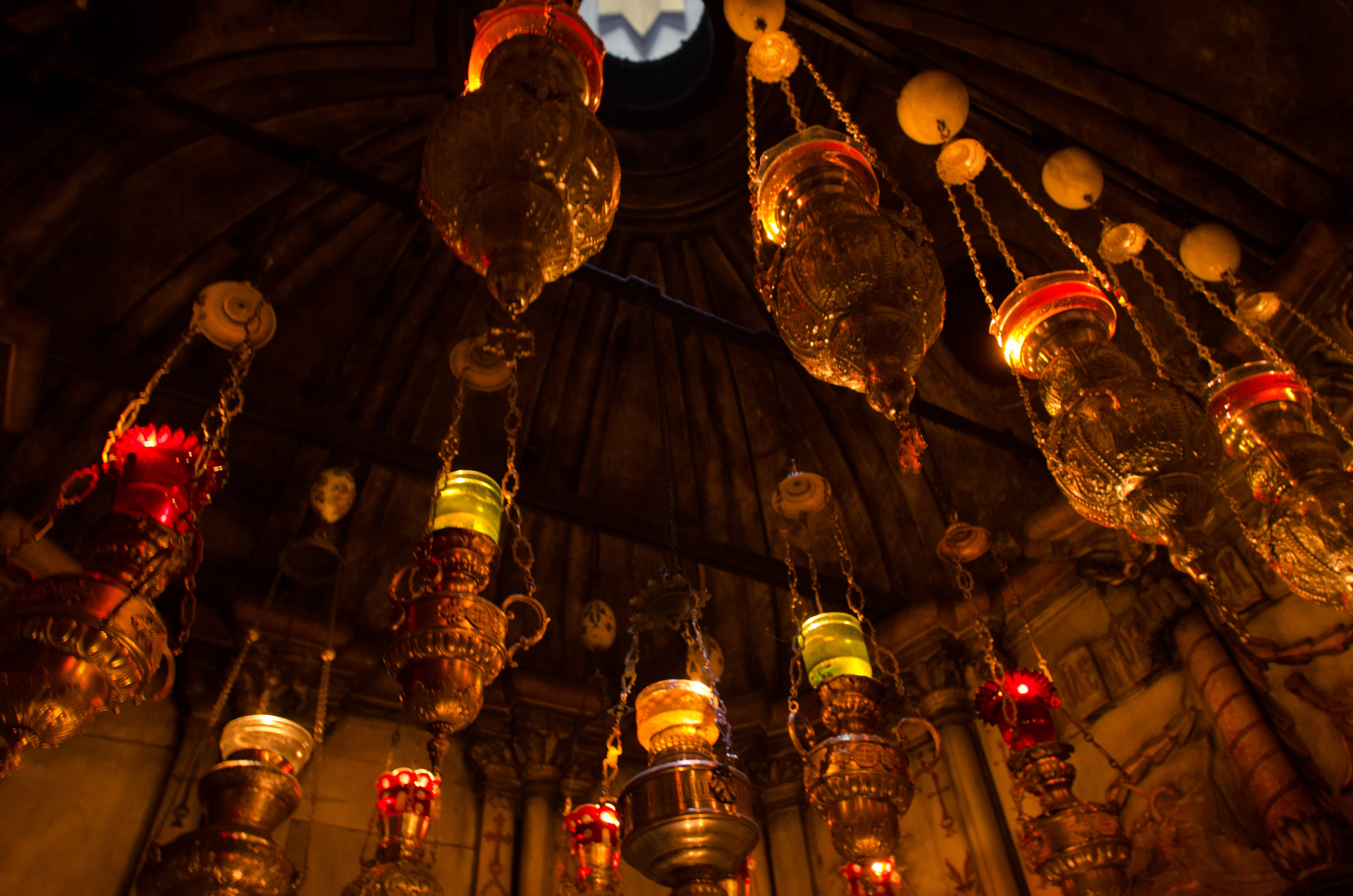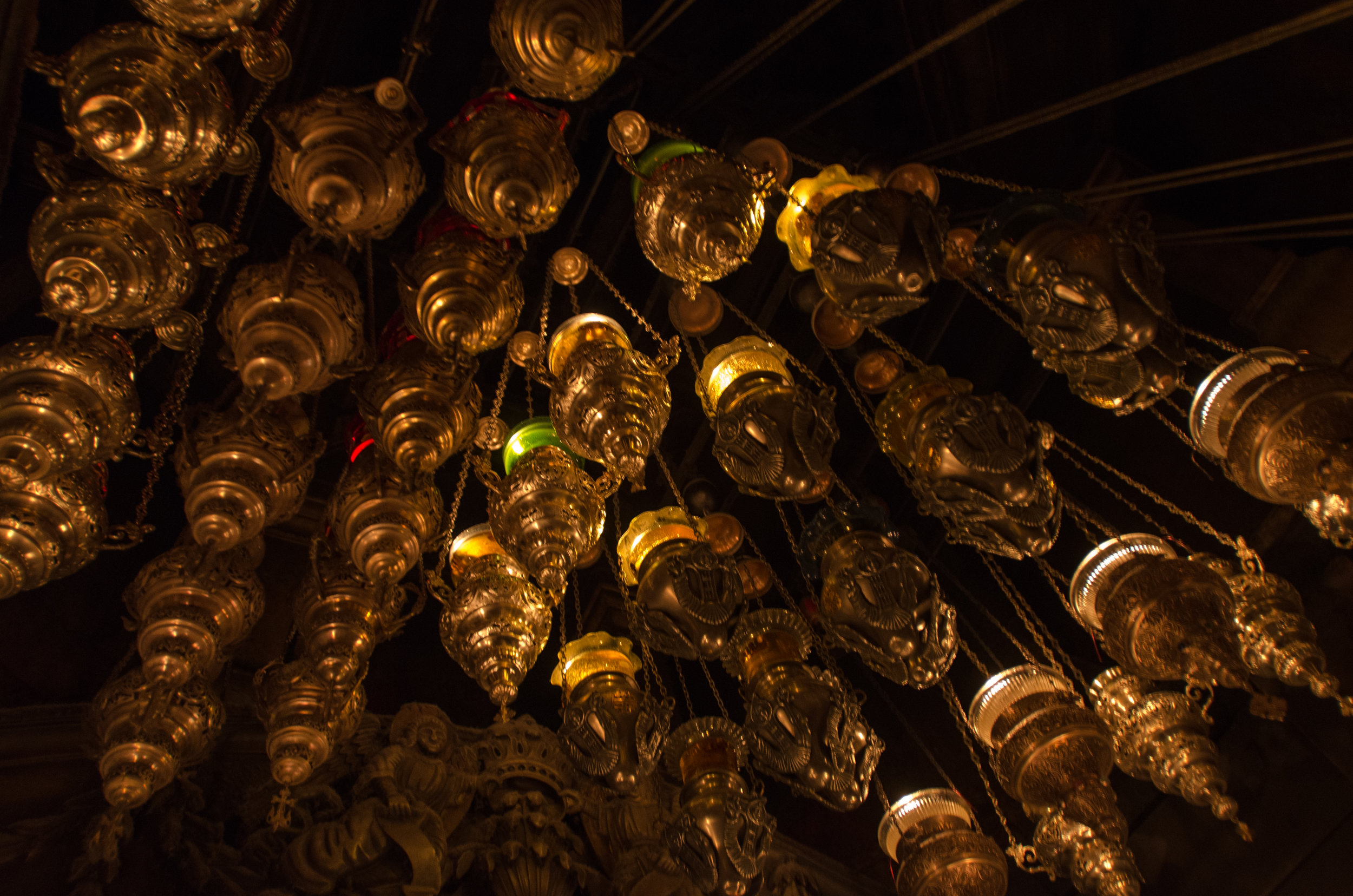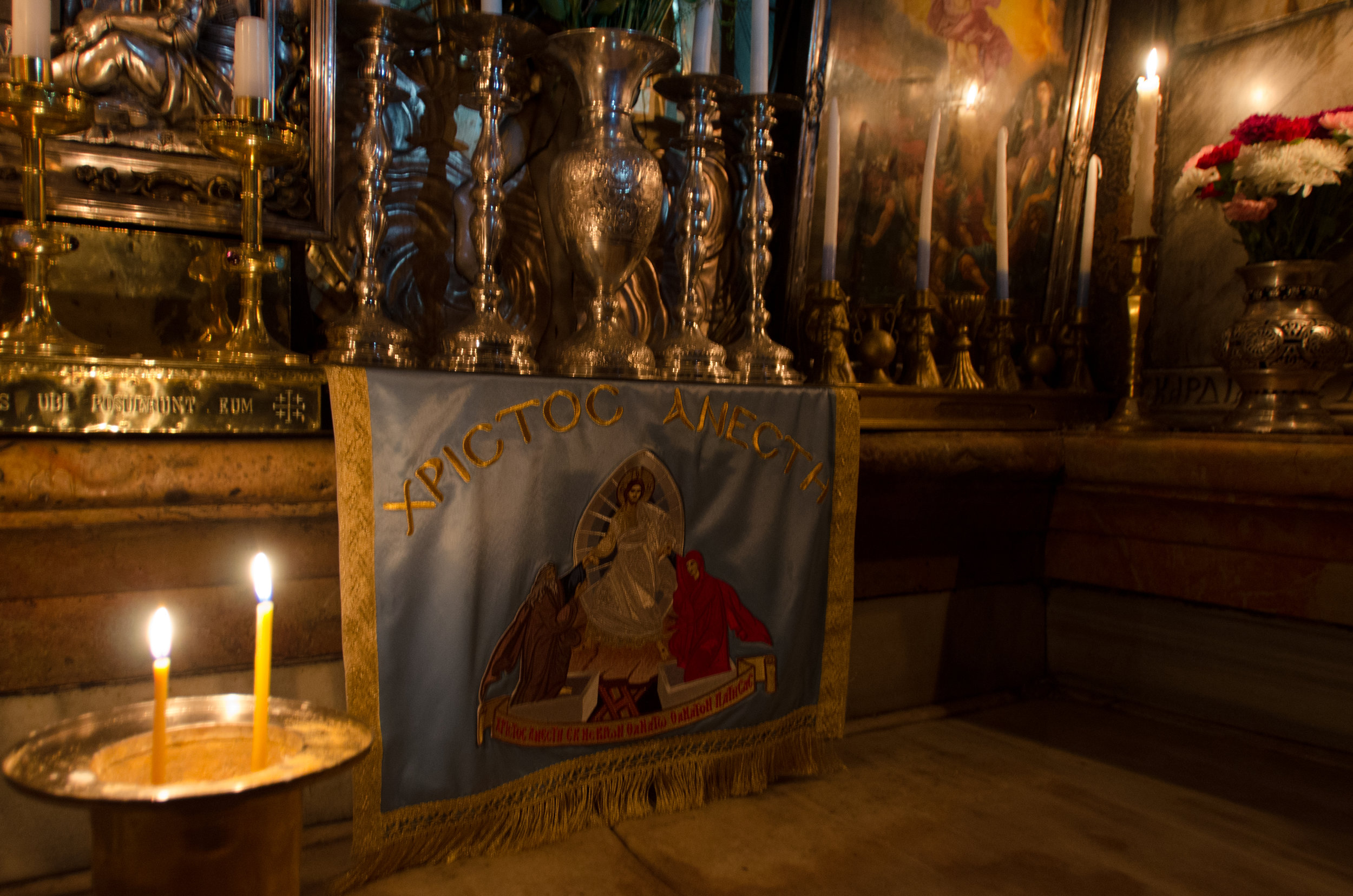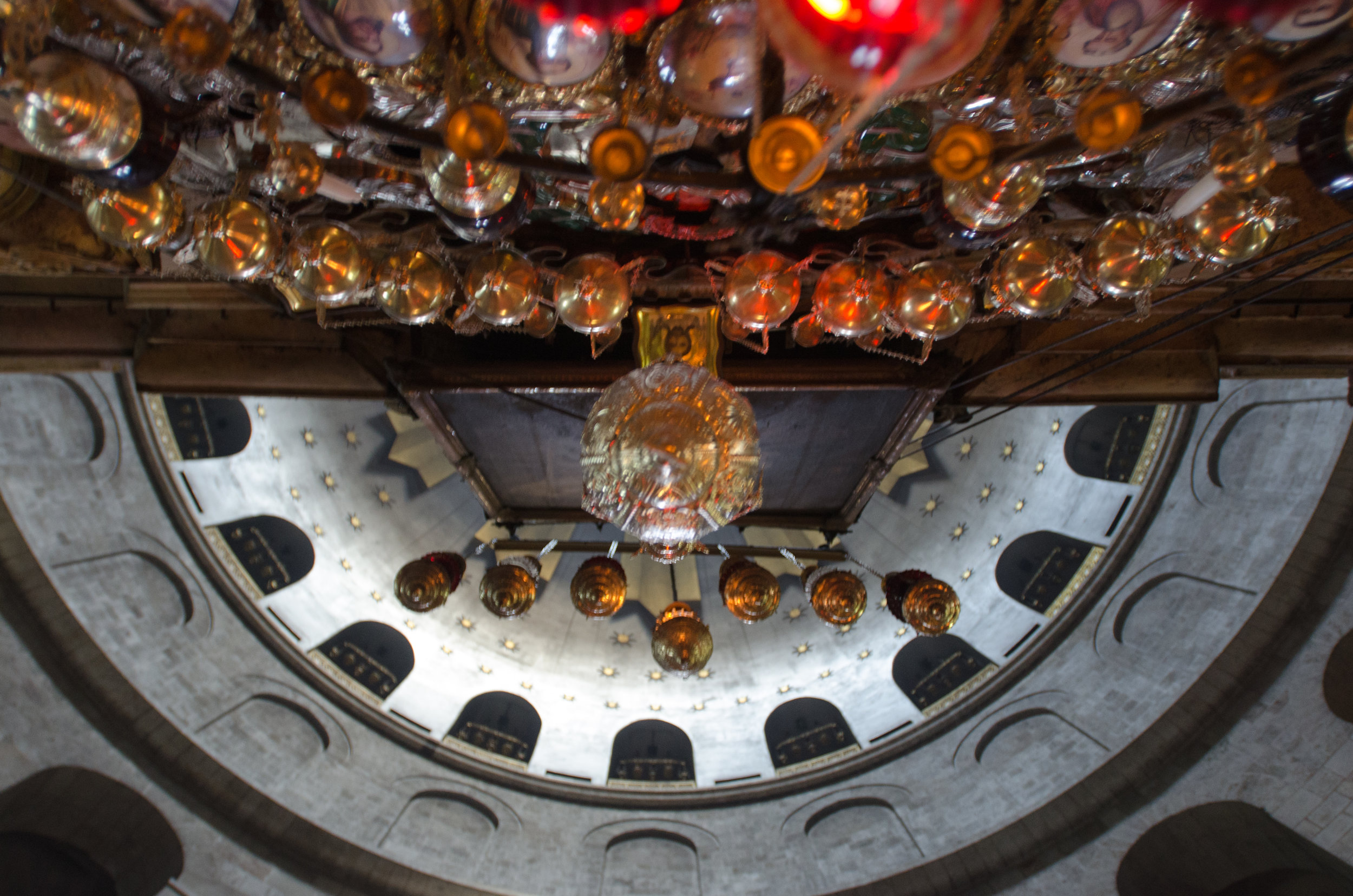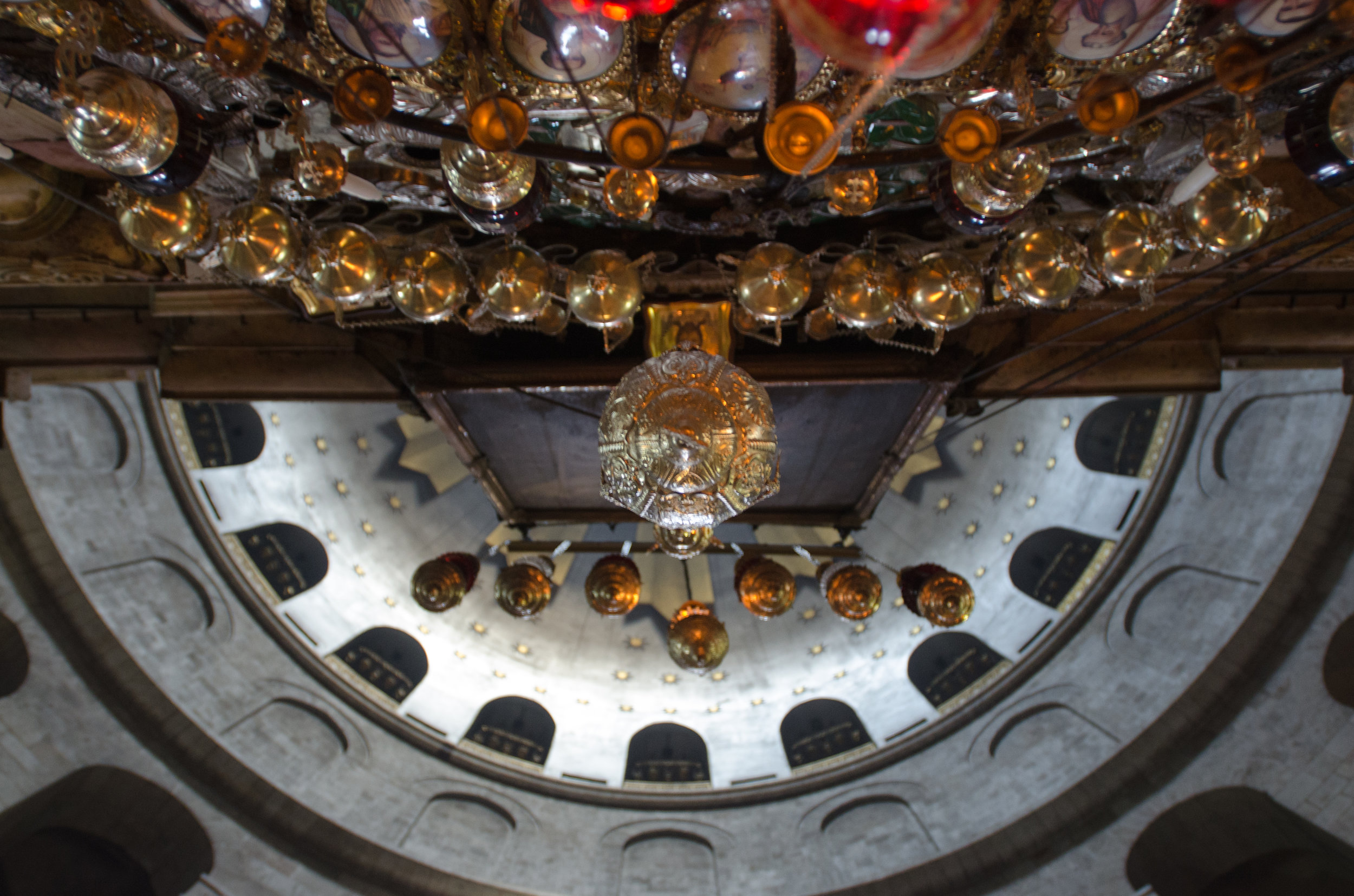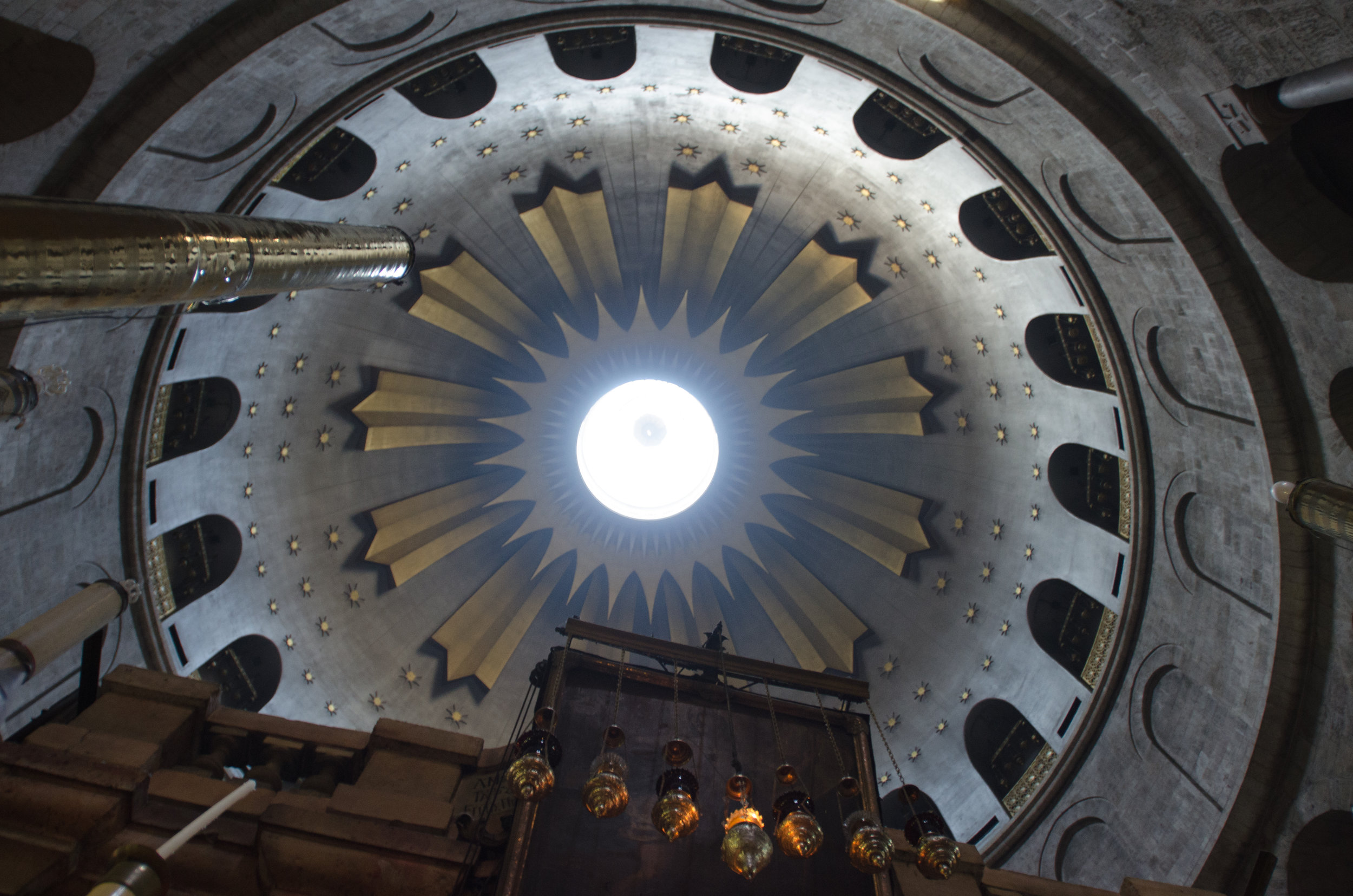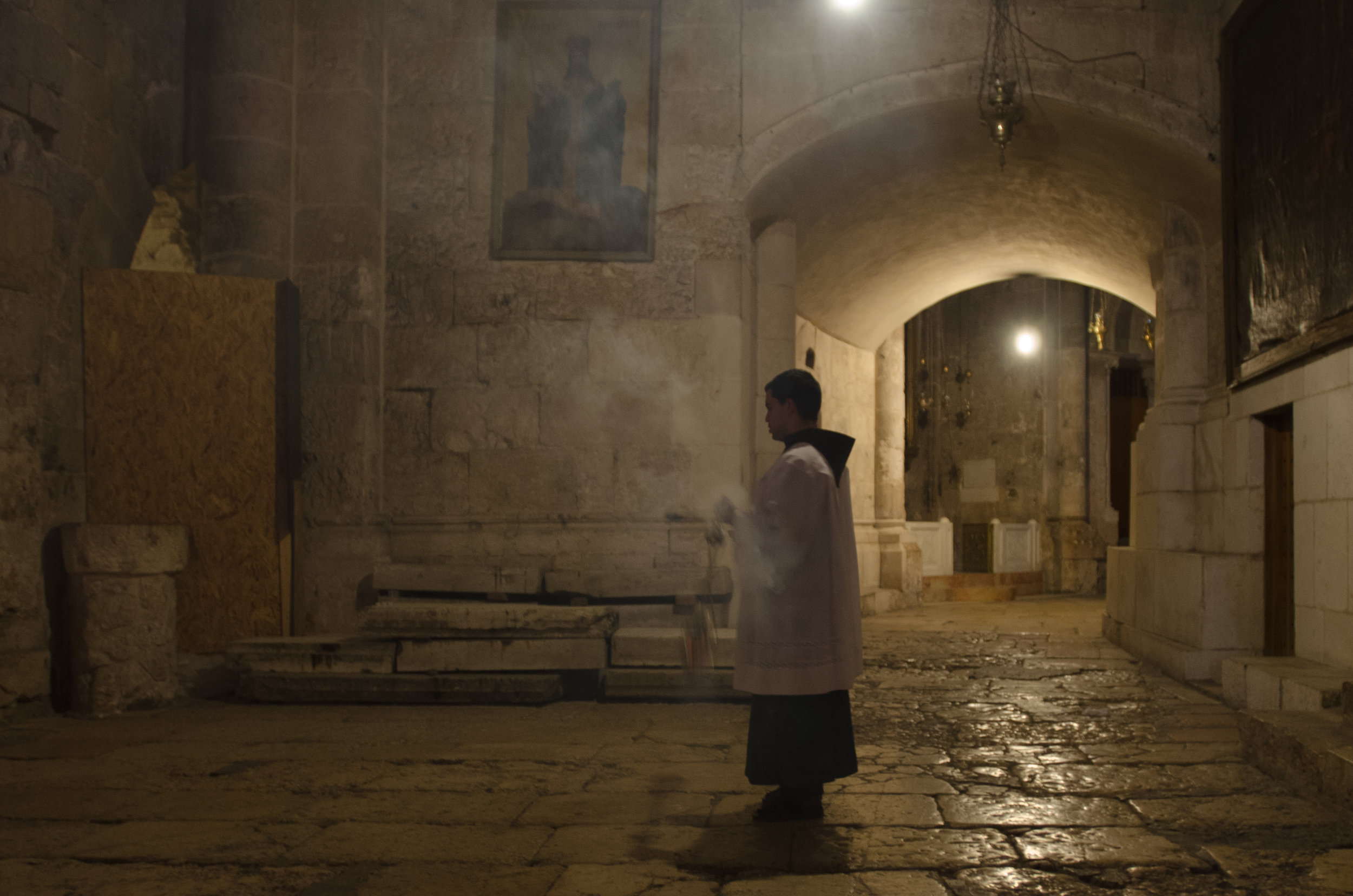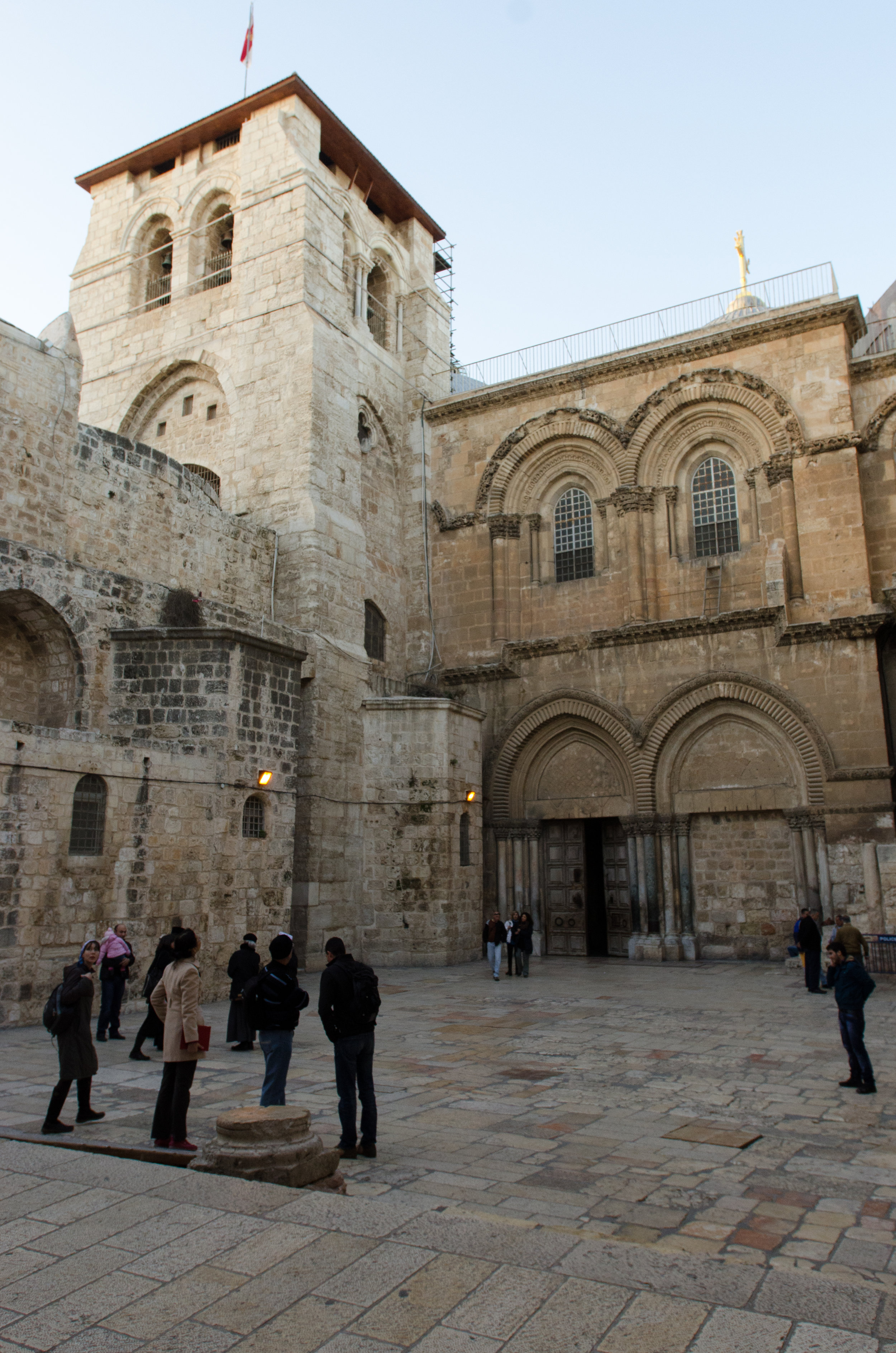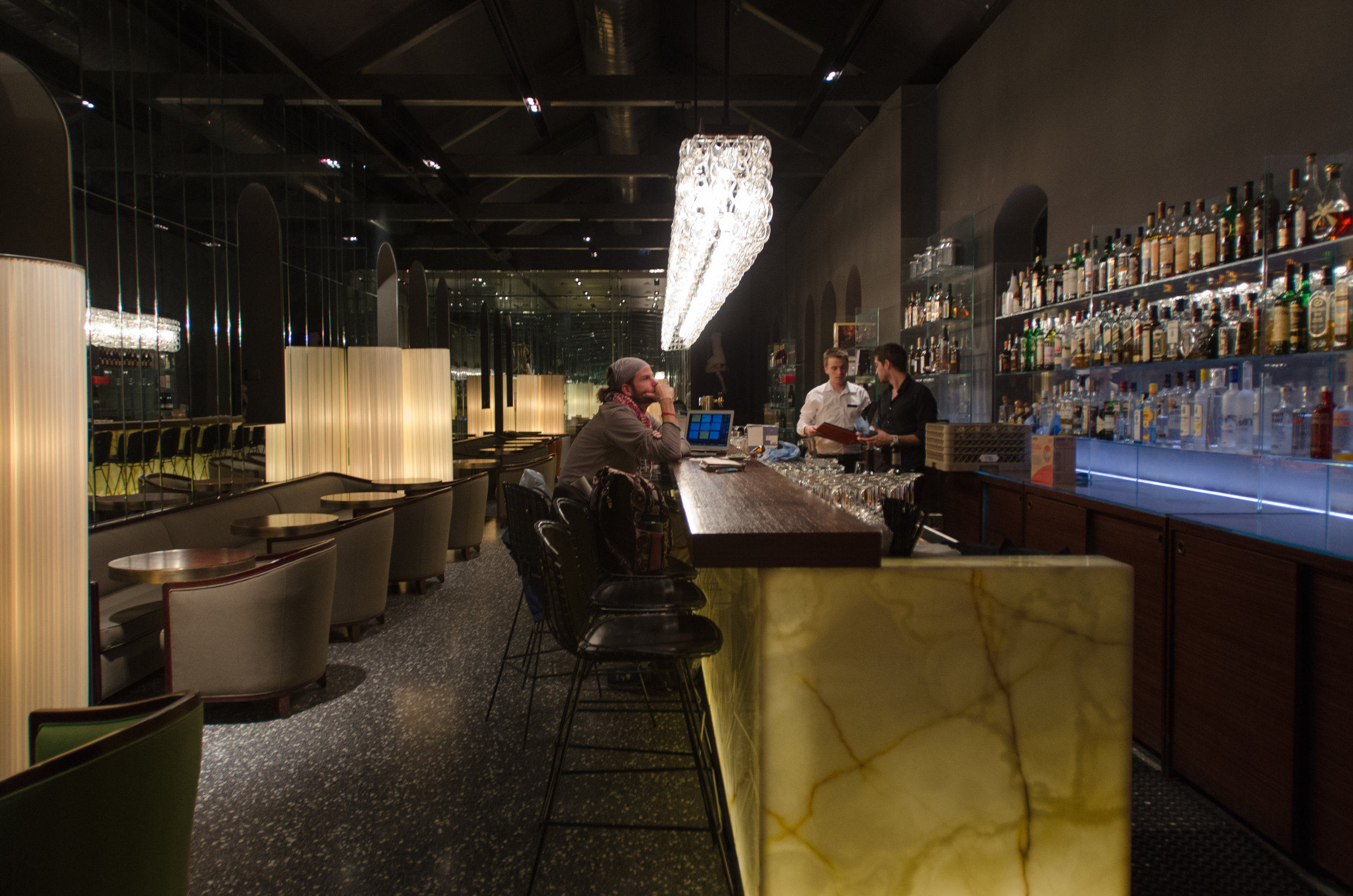When we were in Petra, we met a French girl, Julie, who was volunteering in Aida Camp (a Palestinian refugee camp butting up against the security wall that was built on the 1949 ‘Green Line’ between Israel and Palestine). Nearing the end of her three month stay working with teens filming a documentary about the camp, she invited us to the camp and offered to show us around. How could we refuse? Banksy art on the wall, a guided tour, and a better understanding of the Israeli-Palestinian conflict? Yes, please!
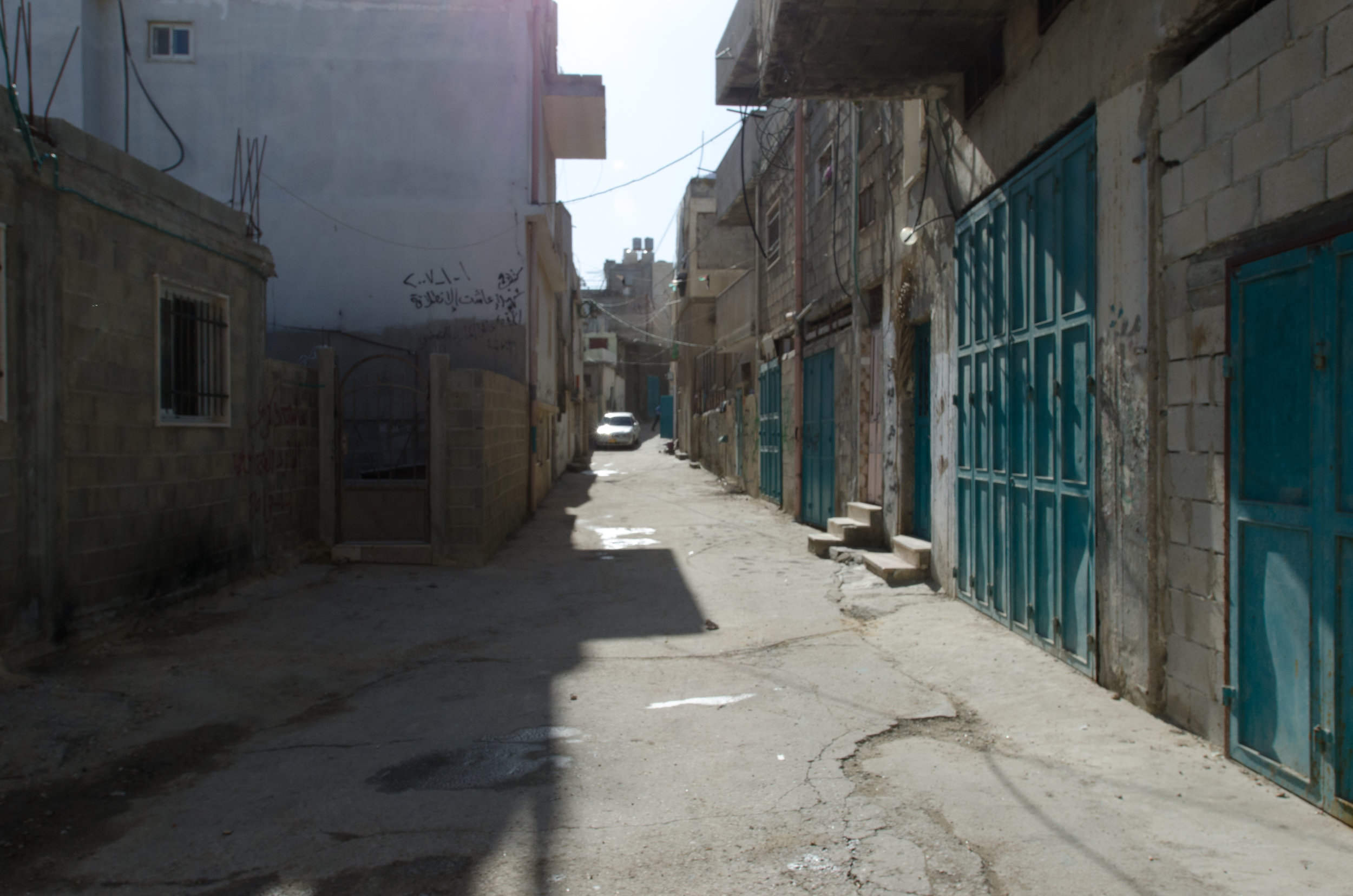
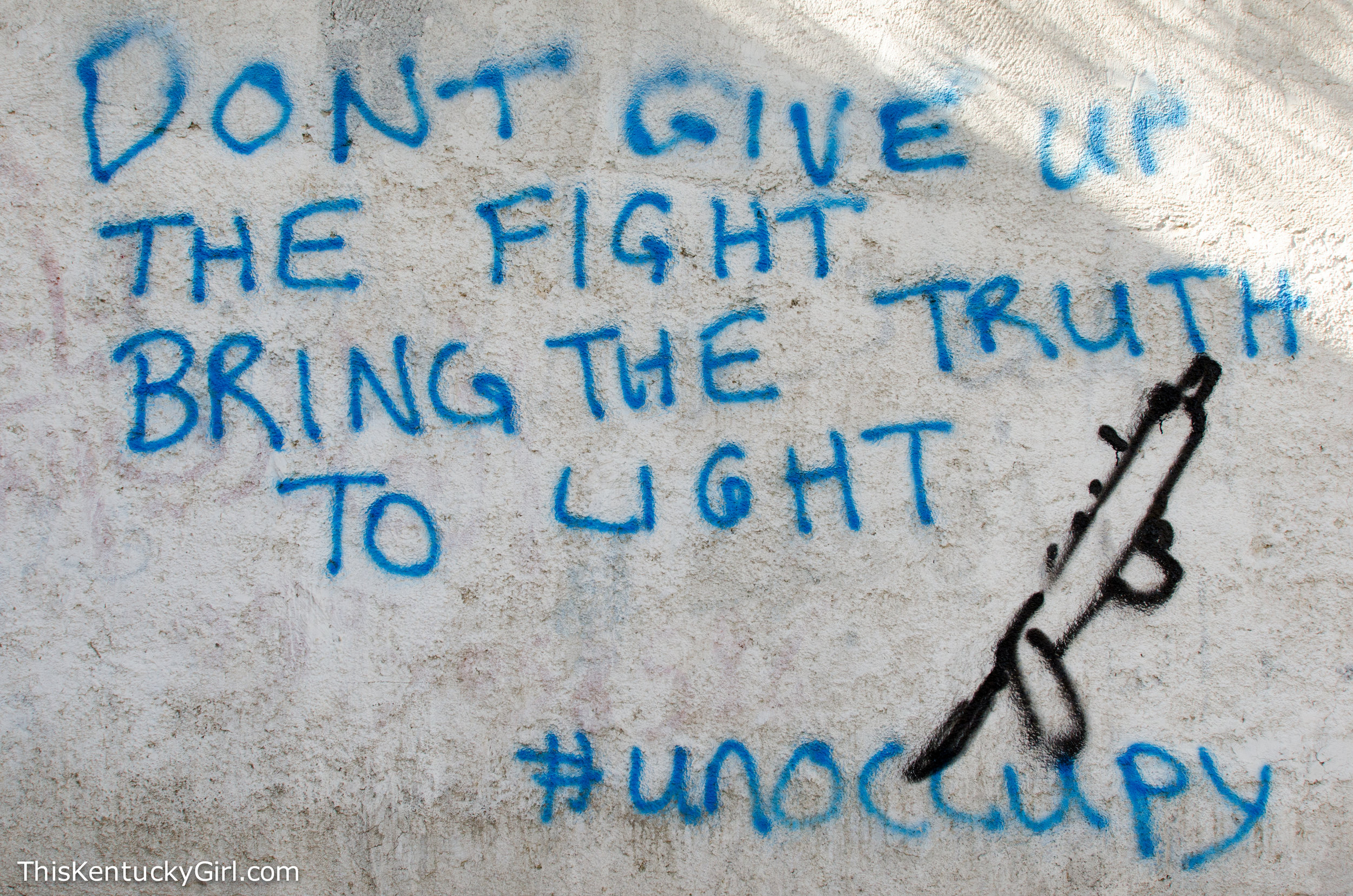
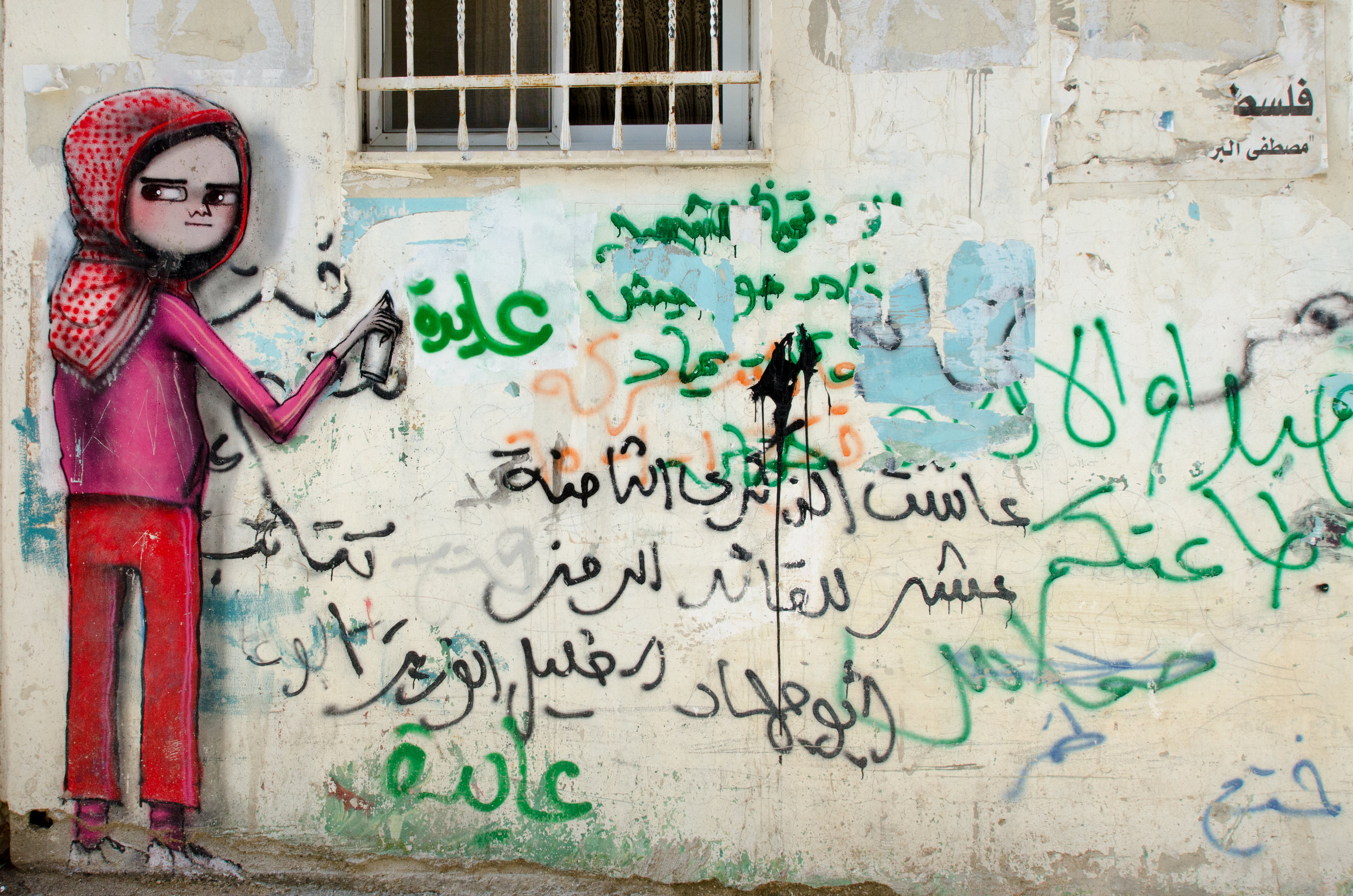
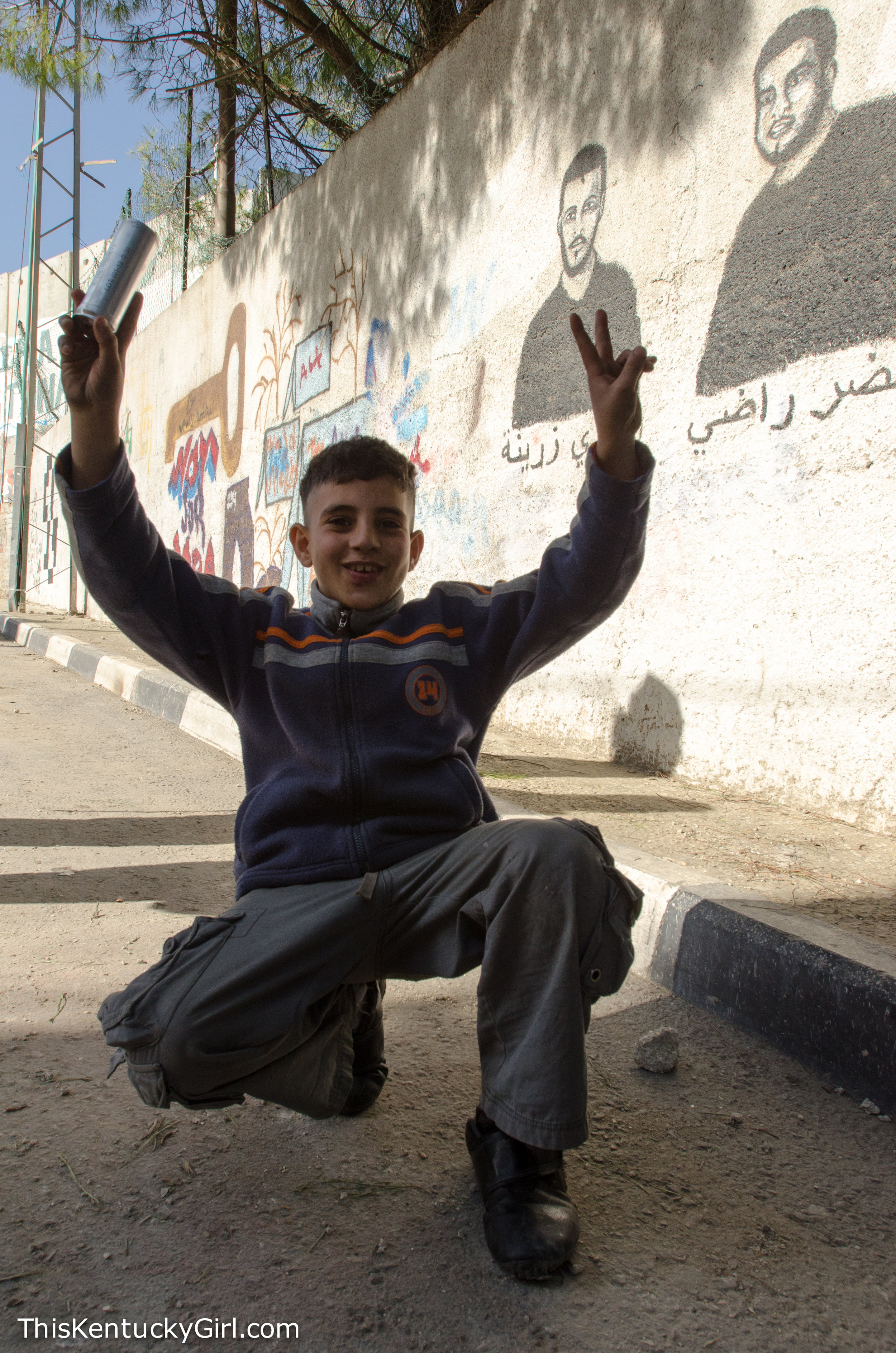
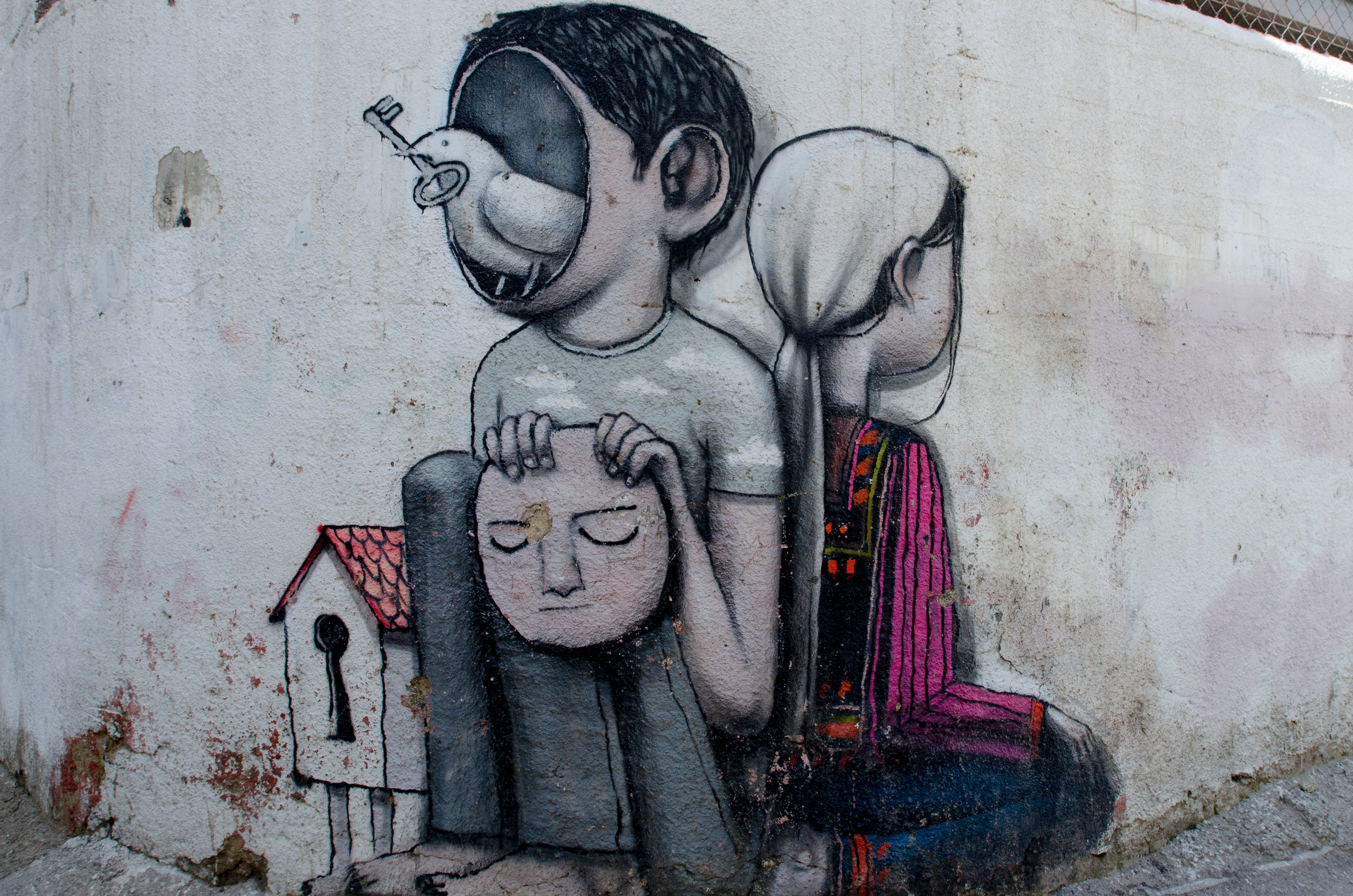
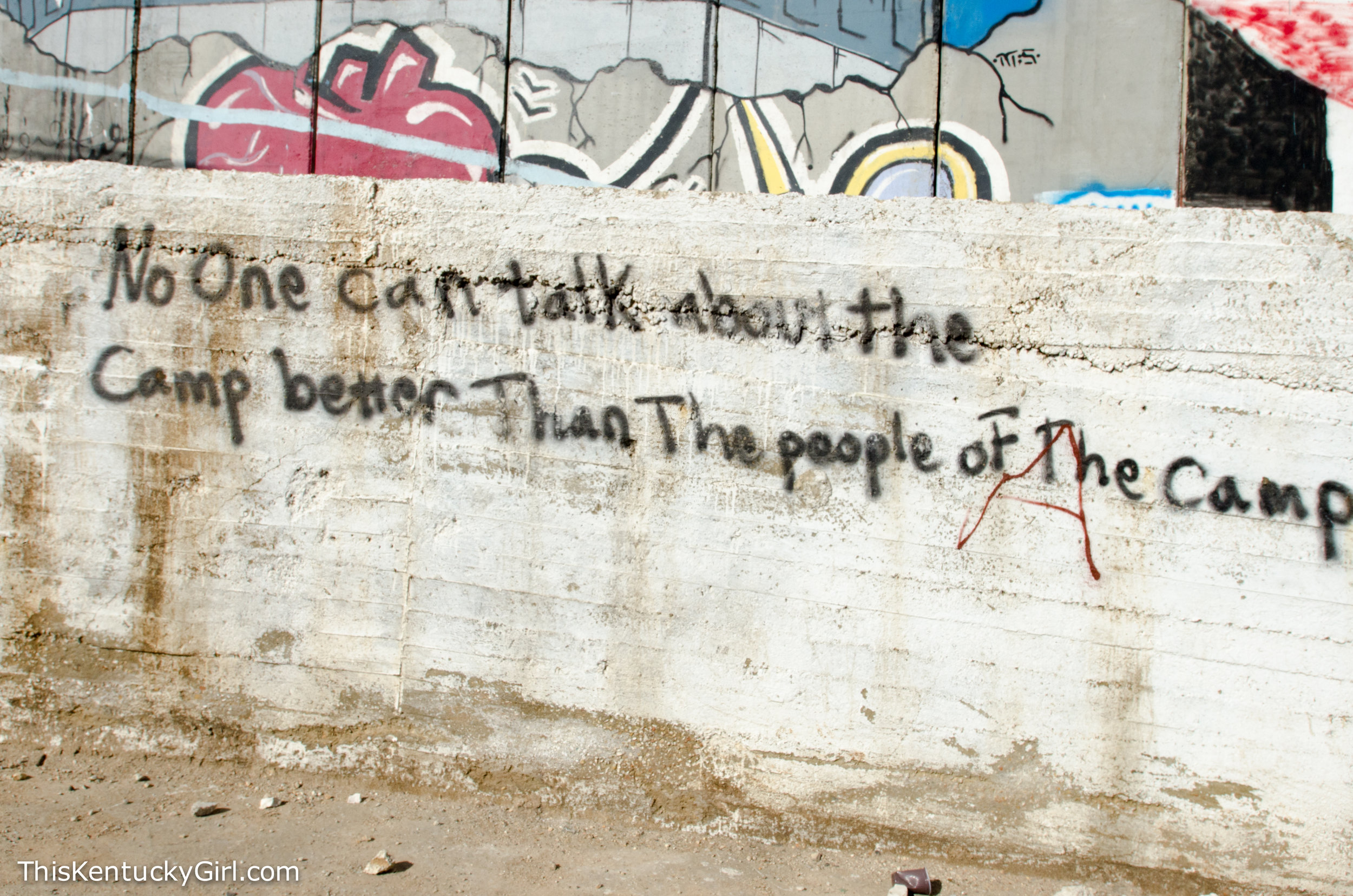
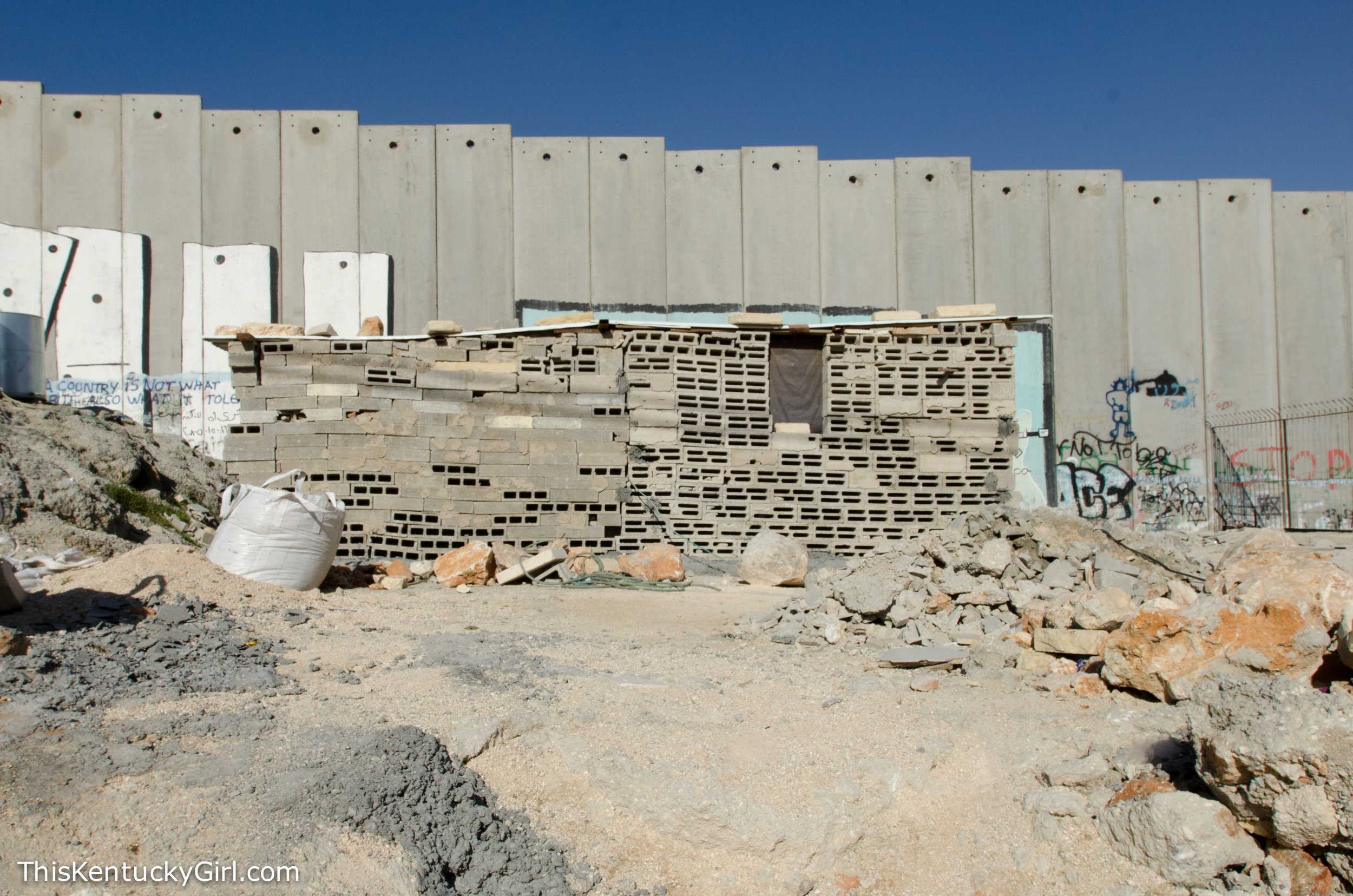
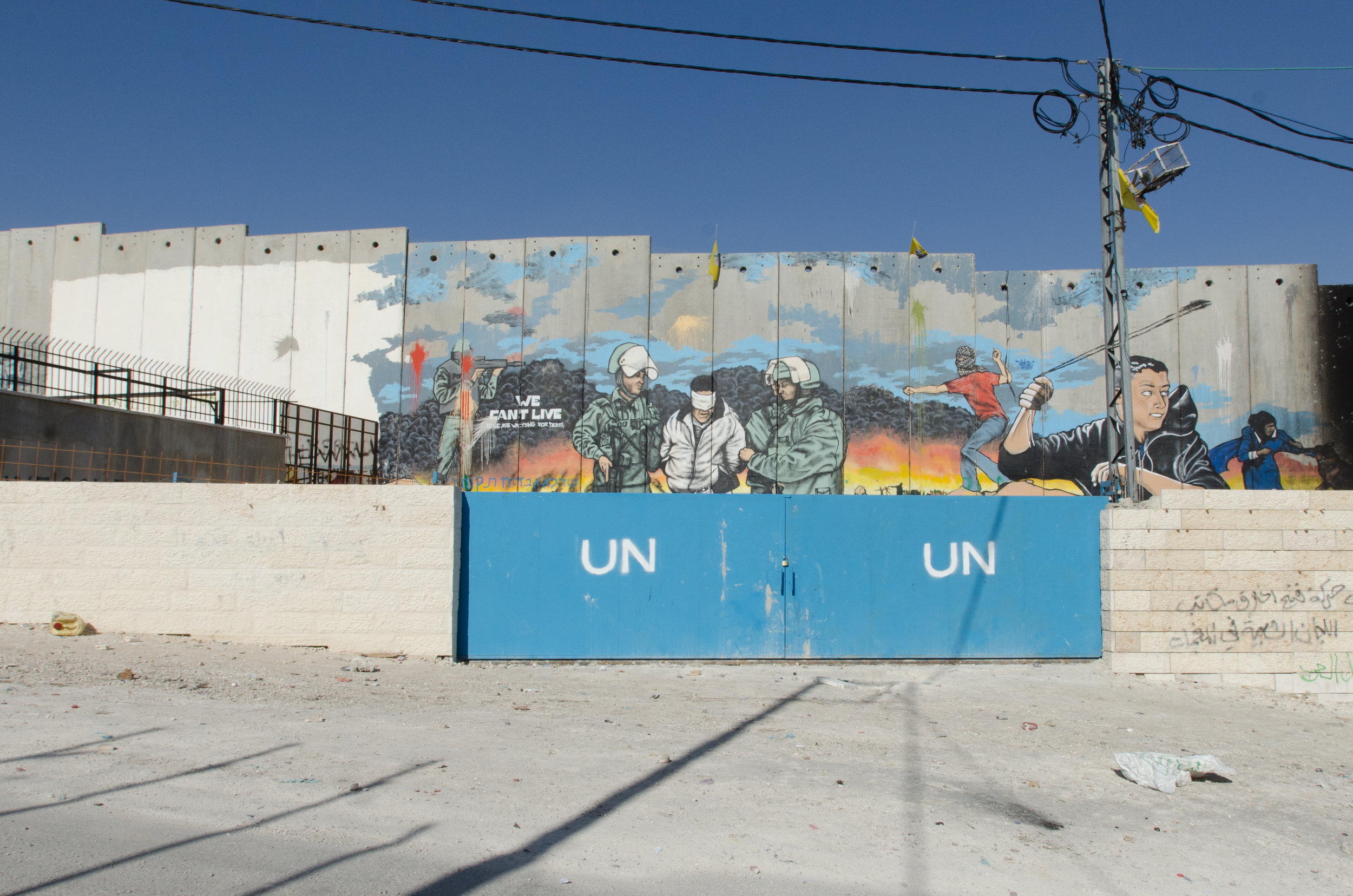
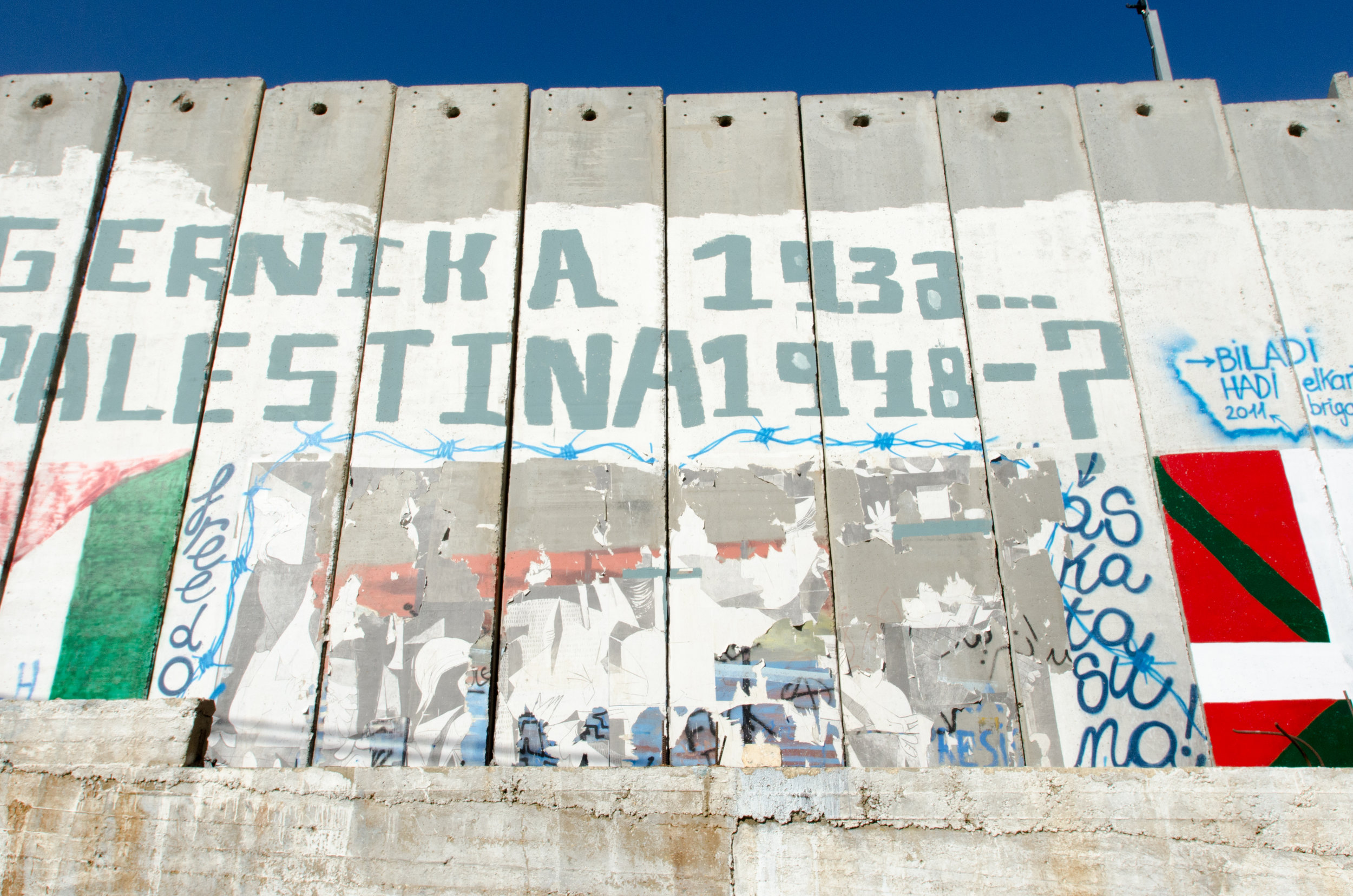
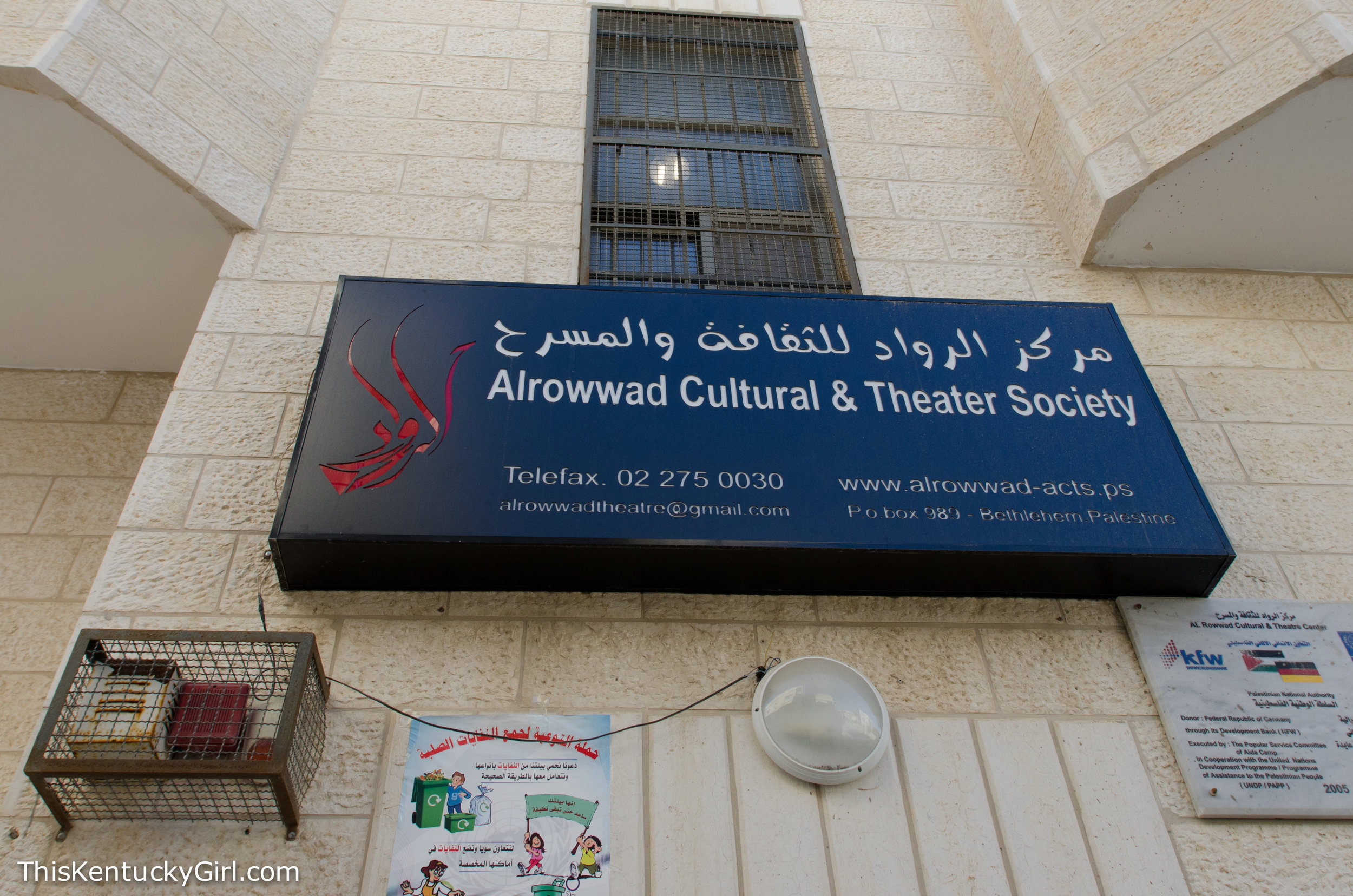
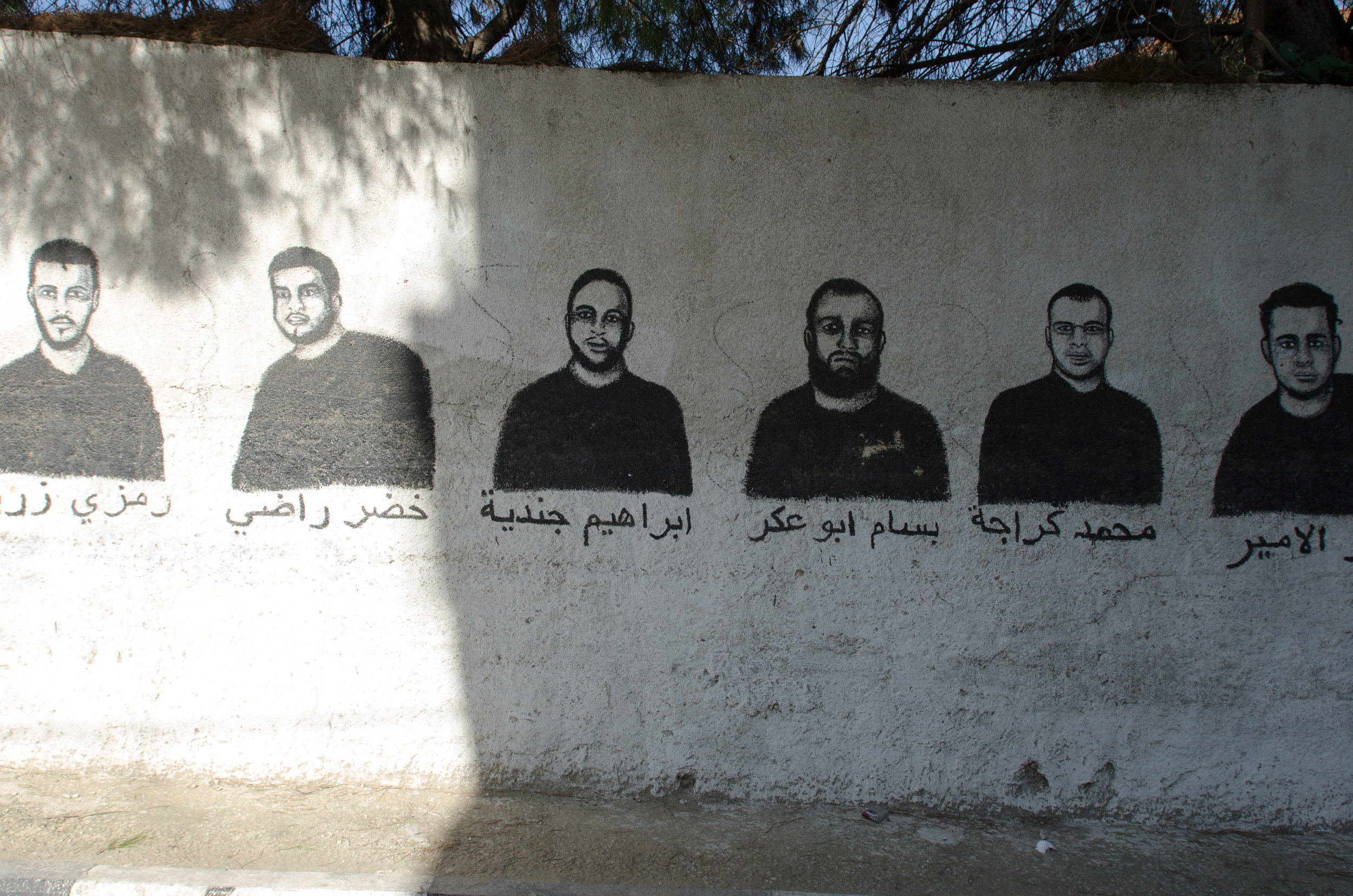

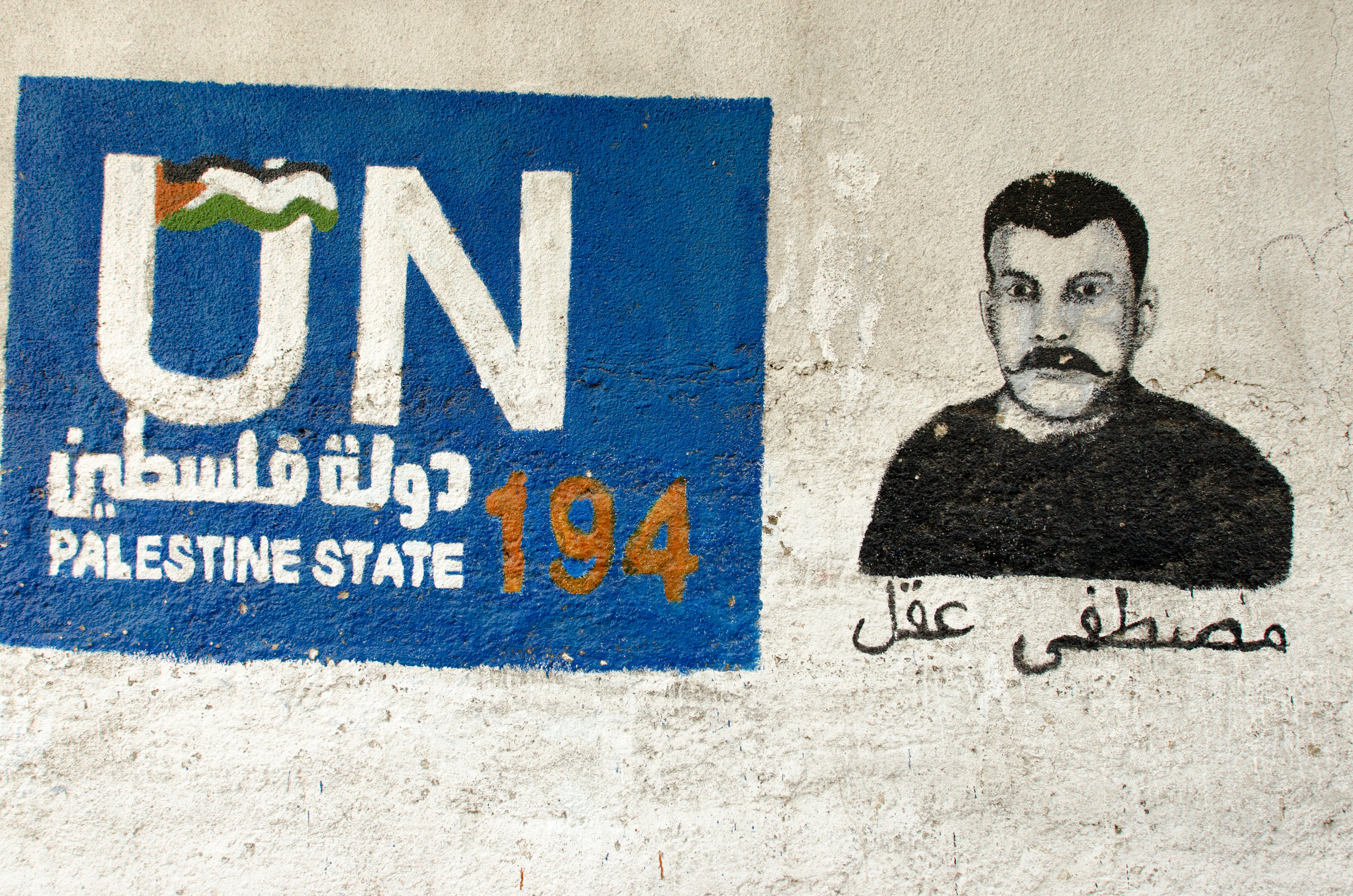
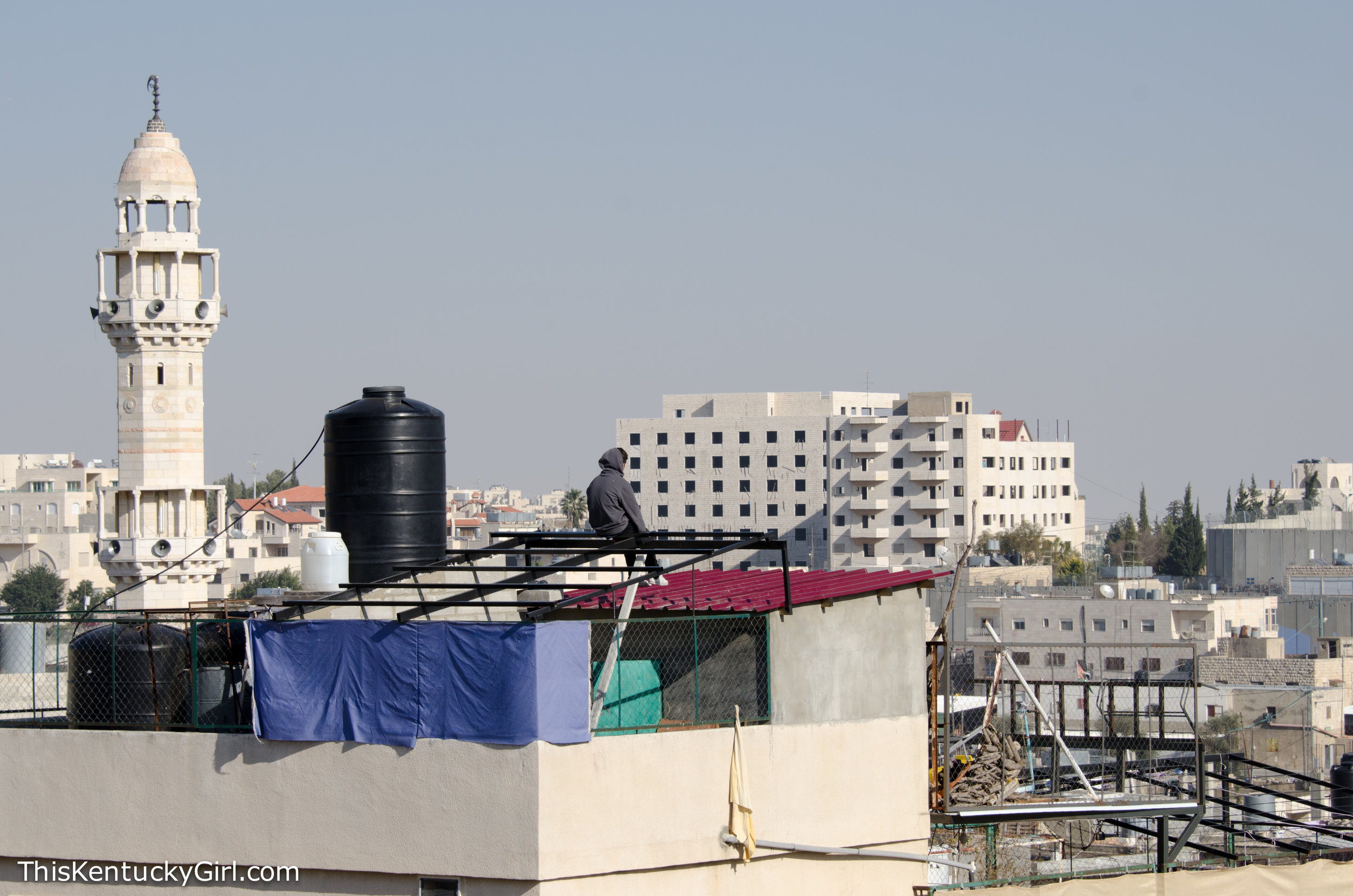
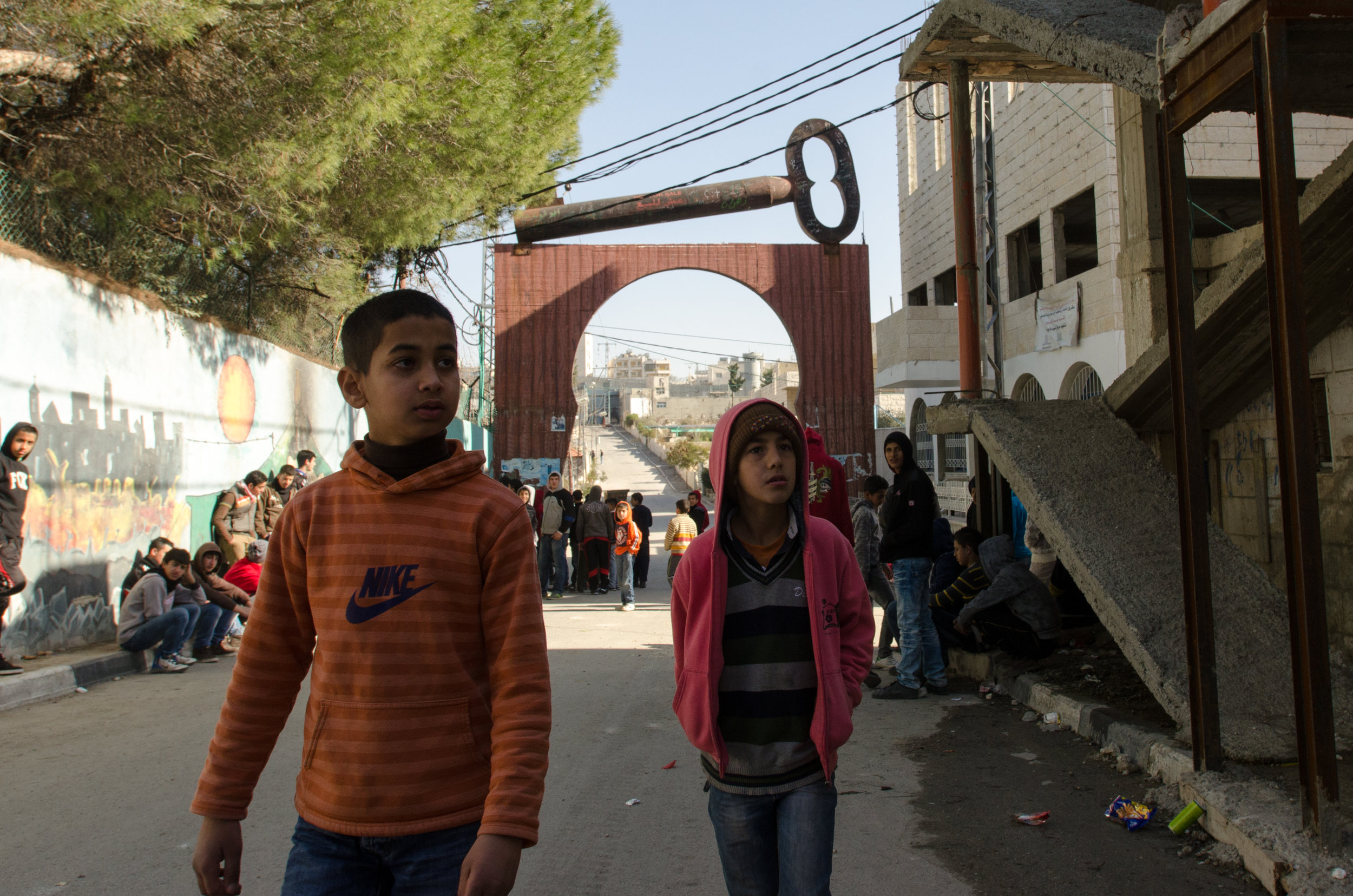
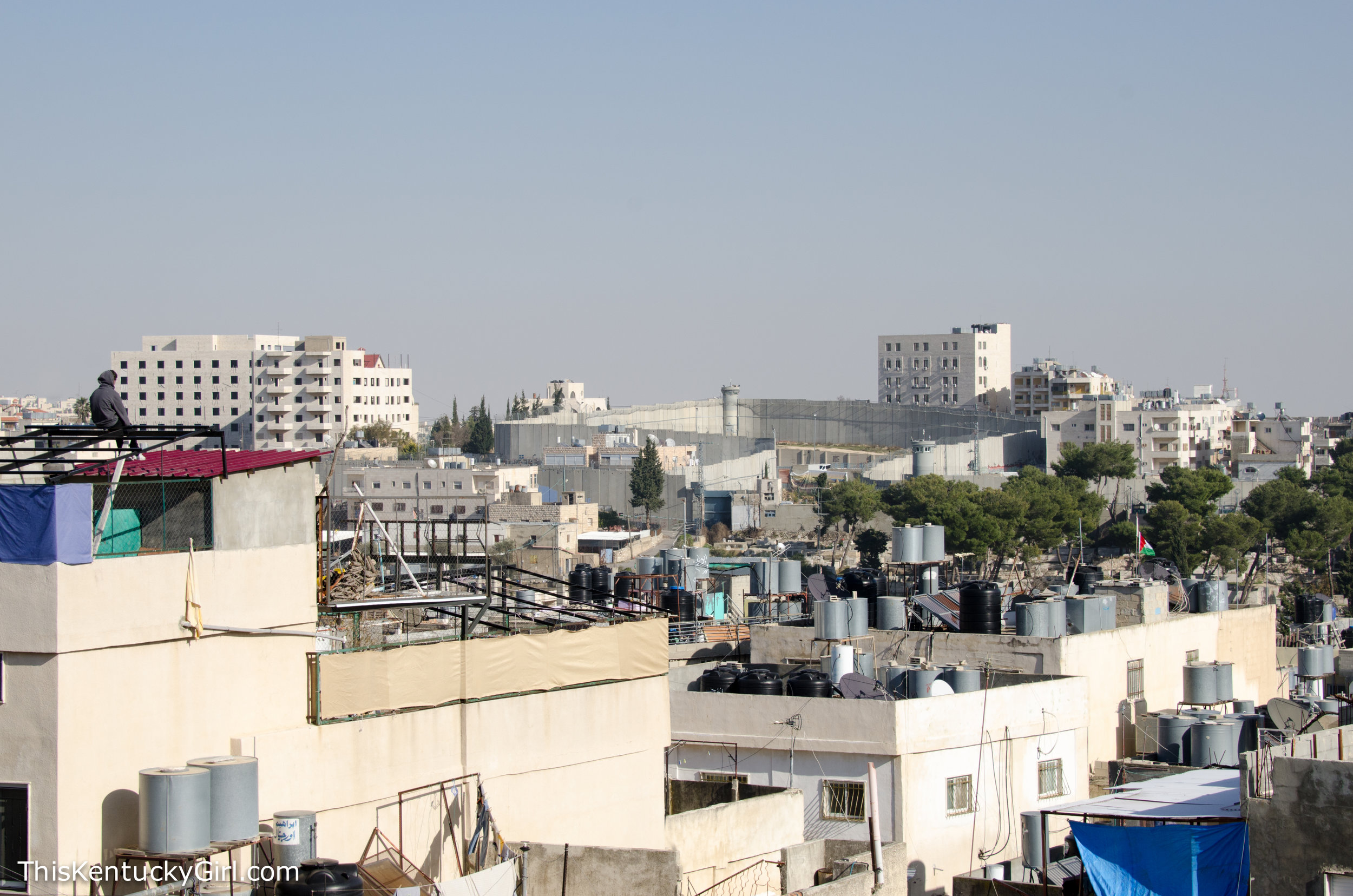
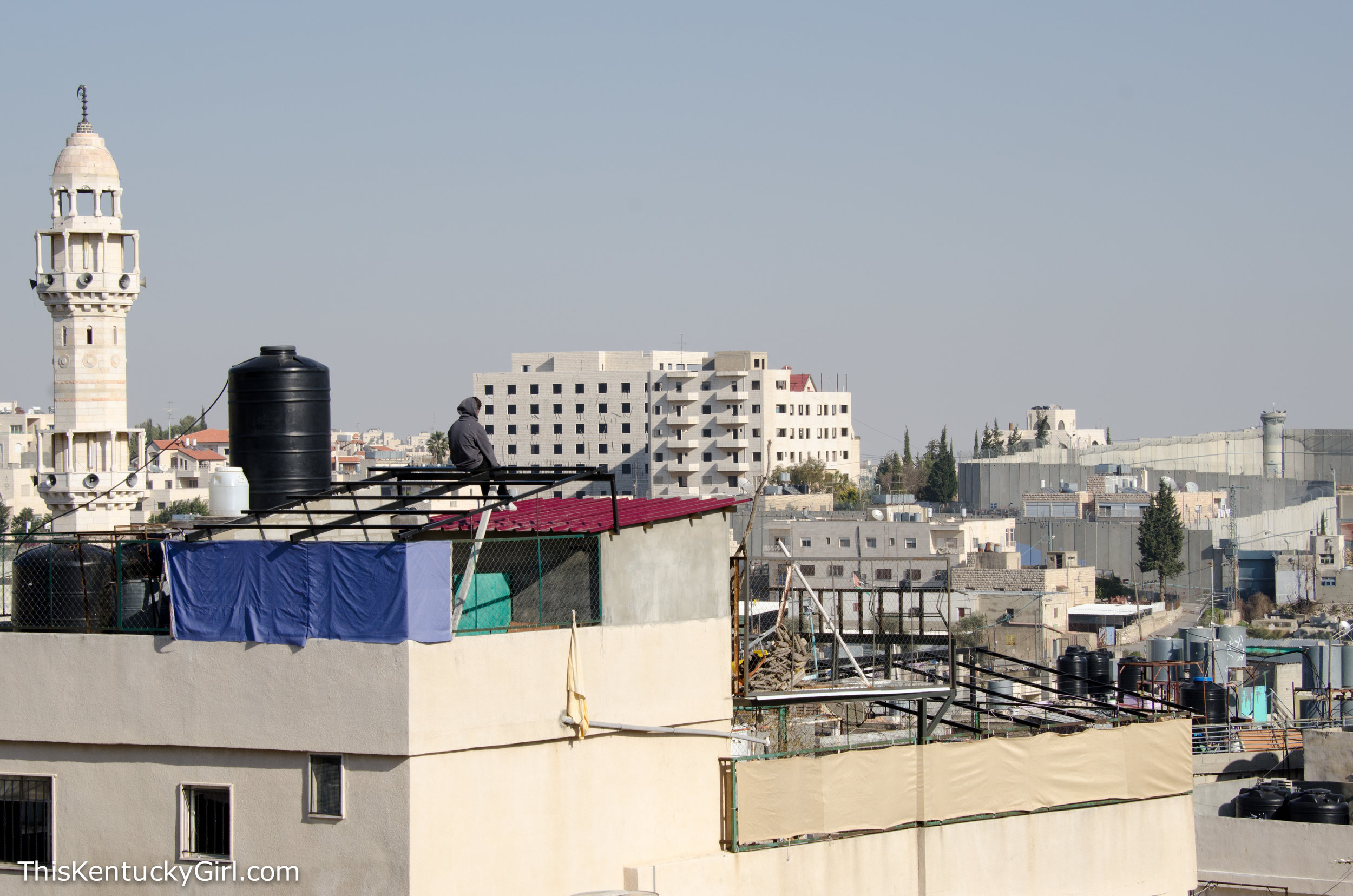

We called the day before and made plans to meet her late into the morning, giving us a little time beforehand to check out the Holocaust Museum on the Israeli side before catching the bus into Bethlehem. We made these plans without realizing how strange the day would end up feeling. We spent a little less than two hours at the museum. The majority of our time there was spent in the first few rooms of the museum reading nearly all of the information plaques trying to get a better grasp historically of how everything happened. Obviously I learned all of this at some point in school. Unfortunately, you just don’t soak it up the same way you do when you’re in the middle of Jerusalem about to cross into a modern day conflict zone. When my “half of our time is finished” alarm went off, we had more than 80% of the museum grounds to go through. We started walking faster through the exhibits. We may have gotten some weird looks. But in the back of my mind, I reminded myself that our couchsurfer mom said it was better to go for not enough time than not at all. She was right. It was a really informative (albeit very disturbing and sad) museum and helped remind/clarify so much history for me that I had forgotten or that had never really sunk in.
We met Julie at the bus station in Jerusalem (she was coming back from a hip hop concert the night before in Tel Aviv) only for Andrew to realize he had forgotten his passport. Fortunately, the bus stopped near our couchsurfer family’s house and we could jump off and catch the next one over the border. Julie met us at the InterContinental Hotel a stone’s throw from the security wall on the Bethlehem side and we walked around the hotel grounds to one of the main entrances of the camp.
Julie told us back in Petra that the camp is just like a regular city. Buildings housed families and were left with unfinished rooftops to expand up when children grew and married. A few small markets and take away restaurants were open on the ground level. Children roamed the streets. Some men sat in front of their doors. Murals of Mecca (announcing that the inhabitants had made a pilgrimage there) and street art donned most walls in the camp. When I think of a ‘camp’ I think of shoddy construction, tents, and poverty. This wasn’t so much the case. It felt like a lower income area of the city. Concrete buildings lined narrow streets and alleyways. Children had appropriate clothing, shoes, and called out to us often- mostly unafraid of our presence. Julie talked of the lack of electricity at times. There’s no warm water in the camp. And she’s taken cold showers, in the winter, for the past three months. What a trooper.
On our way to the wall, at times it was a little difficult to breathe (tear gas) and we could hear shots being fired. Julie said we picked a good day to come! We found out later that one of the children on the Palestinian side stole one of the security cameras from the wall.
When we got to the wall, she said taking pictures was ok, unless the boys started throwing rocks at us instead of the wall. Throwing rocks at the wall is a right of passage for the men. If you don’t do it, you’re seen as not being ‘man enough’ to be Palestinian. Luckily, the boys (and men in the distance) didn’t see us as a threat. When I bent down to photograph a can of tear gas (empty of course) one of the boys sprang towards me, grabbed the canister and insisted I take his picture. That’s part of the security wall behind him. We weren’t sure who the men in that particular mural are though.
We went to the volunteer center where Julie works. I took a photo just to remember the website address for The Al-rowwad Cultural and Theater Society.
It wasn’t until we were walking through the smaller refugee camp across the main street from Aida that it hit me how strange the current situation is. In the morning, I was walking through exhibits all about the work-then concentration-then death camps that Jews were placed into decades ago in Europe. Today, I was walking through a modern day refugee camp that the Palestinians have been forced into by Israel. Obviously there is a lot to comprehend, and I don’t know enough, nor do I have the emotional ties to the situation as both Isralis and Palestinians do. But it felt strange, and my idealistic self just wanted everyone to get along and both sides to have access to constant electricity and hot water.
Before we knew it, we were walking through the Old City in Bethlehem to visit the Church of the Nativity, where it is believed to be built over the cave where Jesus was born. The rebuilt church is a little barren and it feels cold. It didn’t help that there was a mass of pushy pilgrims waiting to get down below the altar to touch the stone marker of his birth. What’s wrong with an orderly line in a church? In one of the holiest of holy sites (for Christians), do you really need to cut in front of others?
The site is this tiny room under the altar with a half circle of stairs leading down into it. You know that feeling when you’re waiting to get into a concert and the doors open and there’s a mad rush to get in first to claim your spot closest to the stage? That’s what it felt like. Only there was absolutely no need for the rush, because the stone wasn’t going anywhere! It was without a doubt, the most annoying religious visit we’ve had in and around Jerusalem. The more modern church that was built off to the side of the nativity site was pretty and quiet, but I felt the attendants frustration as he shushed other pilgrims talking too loud and not taking care of the door slamming.
After the Church of the Nativity, we made our way out of Bethlehem and then out of Jerusalem to Haifa, where we were once again faced with the fact that Israel is not a country geared towards backpackers on a budget.
